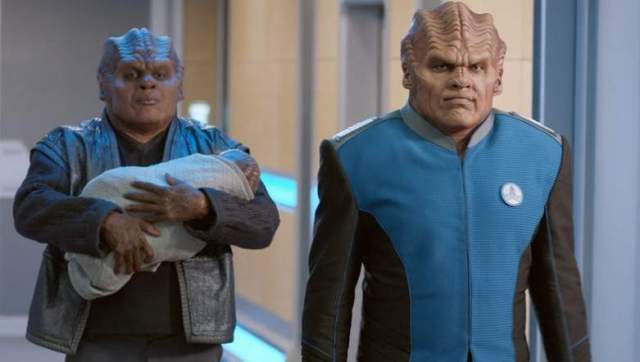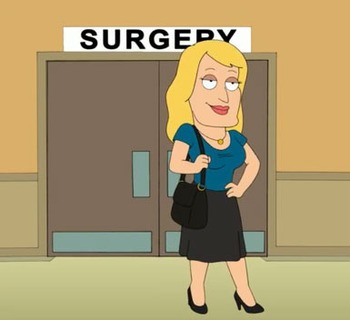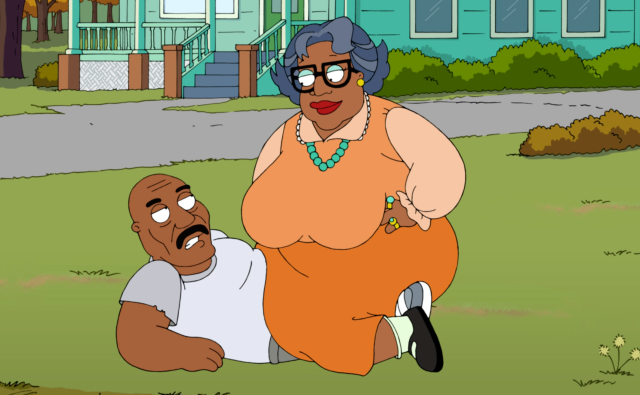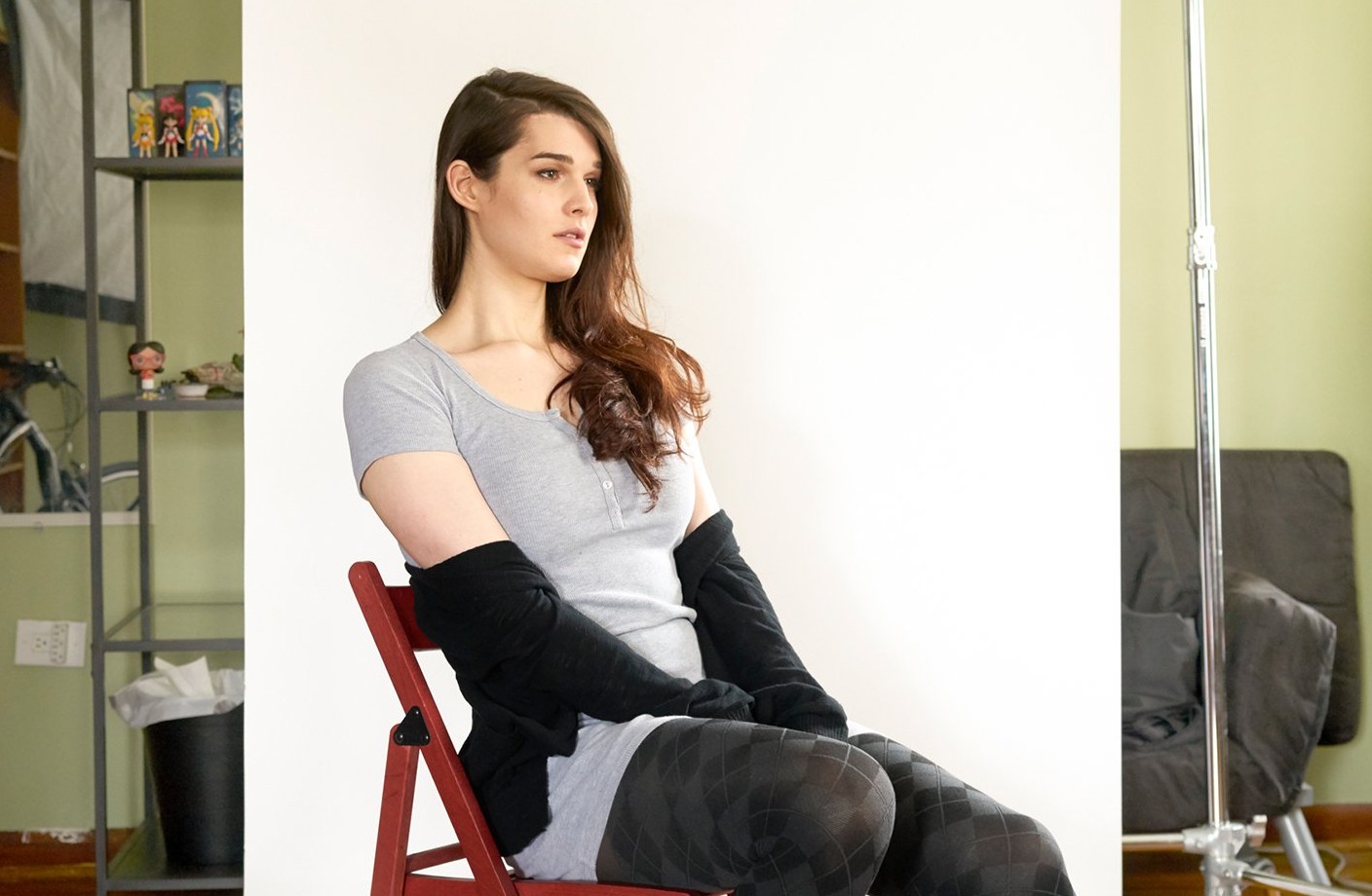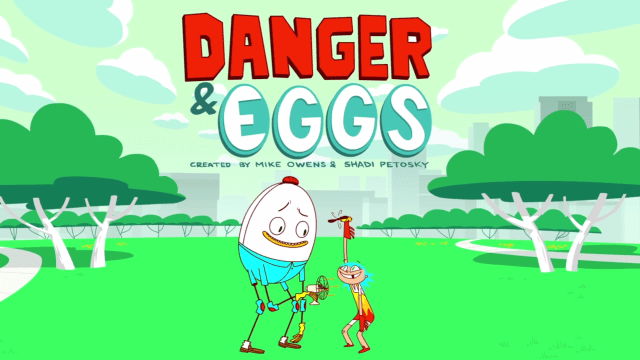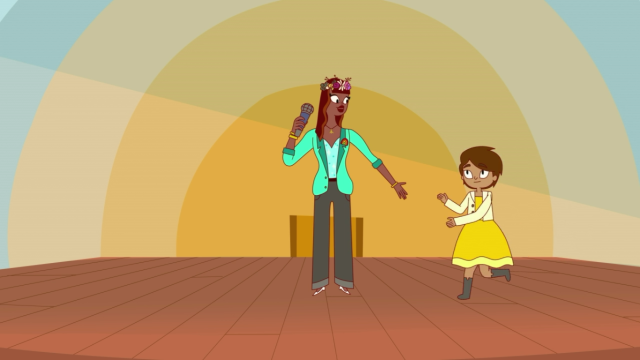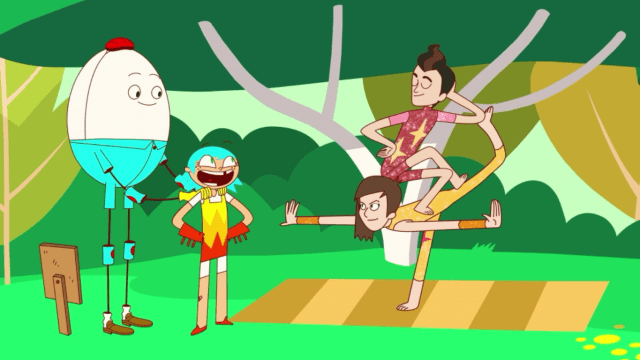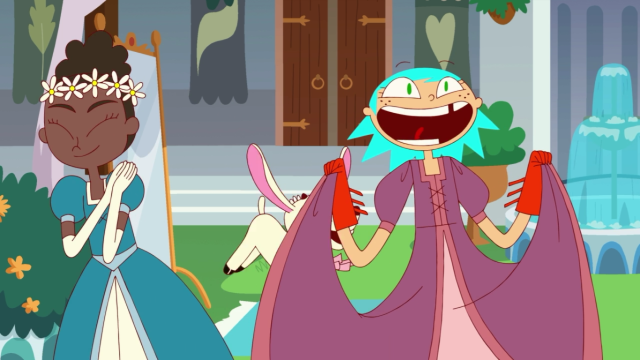“Beyond the Aggressives” Has Arrived Just On Time For Black Trans Masc Representation
One of the first times I could distinctly recall seeing a version of myself was in the documentary The Aggressives. I was only a child, but I immediately understood that the subjects who poured out the intimacies of their lives in this film were future renditions of me. They were gender non-conforming Black people who at the time thought of themselves as women and outwardly presented themselves as masculine.
Throughout the film, the legitimacy of their masculinity was called into question because of how they carried themselves, or because of the types of women they were attracted to. Many of them were trans, and that was readily accepted despite their lack of access or use of hormones. A few of them conveyed their disdain for being regarded as similar to cis men, but they also didn’t view their womanhood as rigid or non-malleable.
At the time, this documentary was one of the only real life depictions of Black trans masc people that a child like me could grasp onto. I had never really come across representations of myself in mainstream media. The very few available depictions of trans masculine narratives were laden with trauma and violence, like Boys Don’t Cry, or they were exploitative. But for many like myself, The Aggressives was the first relatable illustration of gender disruptors that were painted in a more complex, nuanced, and humane fashion.
We are reintroduced to many of the main cast from the original film in Beyond the Aggressives. In an almost “where are they now” fashion, we catch up with Kisha, Trevon, Octavio, and Chin as they traverse hardships related to racism, starting families, and growing older. Some of the original film’s subjects, including Marquise Vilson who does not make an appearance in the follow-up, have gone into modeling, or have budding TV and movie careers. But there remains a dearth of trans masc representation in media, whether it be in our books or on our screens. While there have been radical changes since the likes of Paris is Burning, transgender people have remained underrepresented and misrepresented across media overall, and trans masc representation is minimal.
The 90s are long gone; we have since had Sense 8, Pose, Orange is the New Black, Transparent, and a range of shows that are trans inclusive. But having more representation is not enough for those being portrayed. This visibility has not shifted or improved most trans lives, as many portrayals make spectacles of the trans community, specifically of trans women.
There’s no competition between trans feminine and trans masculine people. The systematic designs that sensationalize trans women are the very same structures that erase trans masc people. Within our toxic and sexist culture, we are quick to condemn the (outwardly) feminine. There’s this element of shock and condescension with trans women; why would anyone want to give up their manhood? All the while, trans men are impacted by this same misogyny, and find their identities as well as their experiences erased. We are reduced to our genitals, thus, according to cisheteronormative society, our identities are not considered real or legitimate masculinity. If we can never be “real,” we don’t exist, and the menacing violence enacted upon us and our bodies therefore also does not exist.
These prejudices are reflected in our media. While trans feminine characters were often reduced to villains, there was a visible absence of trans masc main characters, especially of Black and brown trans masculine characters. But like our sisters, the little representation we had did not fare well for trans masculine people. Trans masculine people who were visible were sensationalized in exploitative talk show appearances, like Reno, the Black trans man who appeared on Jerry Springer. For a long time, talk shows like this were our only representation.
And yet, as trans masc representation has increased in recent years, it’s important to remember the limits of that success. If there is any testament that visibility has not always equated to positivity, look no further than The Aggressives and its follow up.
The subjects of the original documentary were all given a platform to raise their notability, but as they explaine in Beyond the Aggressives, their new celebrity didn’t shield them from the injustices they experienced due to their gender identities or race. After The Aggressives, Trevon’s celebrity helped him land modeling gigs, like Barney’s 2014 campaign. And yet, by the time of filming Beyond the Aggressives, Trevon conveyed the difficulty he experienced while attempting to find an OBGYN office that did not misgender him. Also by the time of filming of the follow up, Chin’s race and gender were both villainized and victimized. Due to a racist error made on the part of the government, Chin was detained at an I.C.E. Detention center for almost two years, where he was subjected to solitary confinement because he was trans.
Beyond the Aggressives shows us how far we have come in terms of portraying trans masc people, but we still have such a long way to go. We can now find ourselves in TV and movies other than documentaries, but at what cost? Many trans masc people have a difficulty relating to trans characters on-screen because those characters are so frequently objectified for their bodies. Trans masc characters are usually only semi-regular characters or have secondary storylines. And even when they are the lead – like Elliot Page in The Umbrella Academy or Brian Michael Smith in Lonestar 911 – they are tasked with representing us alone. When was the last time you’ve seen more than two or three trans men on the screen at one time? And all as main characters? Or characters that evolve beyond medical narrative or two-dimensional standards we’ve witnessed thus far?
According to GLAAD’s Where We Are on TV report, there were only a little over 11 trans masc characters on TV during the 2022-23 year. That is less than the 14+ characters of the previous year.
How do we change this? And how can we make sure this change includes an increase in quality as well as quantity?
The best kind of change comes from within. And from what I can ascertain, change is ahead of us. It begins by diversifying our writing rooms, placing the pen in the hands of trans masc people who are longing for the opportunity to give power to our stories from an authentic lens. It includes hiring trans masculine actors to play explicitly trans masculine roles and roles that were initially written for cis men. There are an abundance of budding trans actors, including myself, who didn’t believe that certain careers, like acting, were possibilities, due to our consistent absence on TV screens. Let’s continue to change that.
When it comes to positively amplifying our visibility, Beyond the Aggressives is just on time. And while the original film didn’t grant the subjects access to any special treatment, or indefinite resources, in hindsight, Chin’s legacy and his connection to the filmmakers helped to expedite his unfortunate and untimely legal case. Daniel Peddle and his team were able to find appropriate legal representation that eventually helped Chin to have his past charges dropped. And yet, even after his case’s media exposure, he spent many months devoid of the agency to take care of himself while he waited for his new IDs to be issued by the government.
As we can see, visibility is a two-sided coin, but if we put the mic, the pen, or even the camera in the hands of those sharing their stories, we get a more authentic narrative, more diverse characters, and more nuanced storytelling. Trans awareness has ballooned following many years of anti-trans bills, leaving a negative impression upon those who don’t know a trans person personally. We need more trans masculine produced stories that are relatable and are tools in combating the falsehoods brought about from said bills.
Kisha, Trevon, Octavio and Chin are all more than just their gender expressions or their sexualities. Having witnessed their plights as teenagers, now we bear witness to their more mature versions as they navigate aging, healthcare (or lack thereof), parenthood, incarceration, and of course, gender challenges that are not just relatable to us, but that are parallel to various lives across the country.
The tribulations we witness in Beyond the Aggressives show why our stories deserve more airtime: to validate our existence and to humanize our experiences.
Beyond the Aggressives has just concluded a brief theatrical run and will stream on Paramount+ sometime next year.
Daniel Sea on Max’s Return to “The L Word: Generation Q”
It’s hard to find a balance between skepticism and positivity. It’s hard to know when change is superficial, marginal, placating, and when it’s substantive. I have such big dreams for our world — on-screen and off. I vibrate with frustration, I vibrate with hope.
As you probably know, Max — one of the most meaningful and maltreated characters on the original series — has come back to The L Word universe for a one episode appearance on Gen Q. When we last saw Max, he was pregnant and alone, mocked by friends who were never friendly. He was a cautionary tale of what happens when transmasculine people dare to assert their genders. All the while, Daniel Sea, the real trans person playing the character, faced similar treatment behind the scenes.
When I first reached out to Daniel three years ago, I felt like there was a story that wasn’t being told. The initial Gen Q press tours were all about how much progress the show had made since the original series — while repeating the mistake of misgendering Daniel. Progress is rarely as linear as we hope, nor is it possible without an honest reckoning with the past. References to Daniel’s transness on Instagram were vague but they were there if anyone cared to look. Most people didn’t care.
Throughout the process of our initial conversations and our formal interview, I was lucky enough to get to know Daniel, the person. I wanted clarity on their gender, but I learned so much more. One of the highlights of my time writing for Autostraddle was doing that interview, getting to play a part in deepening our understanding of this moment in trans TV history, and, best of all, developing a friendship with Daniel.
And now they’re back on The L Word. And Max is getting a happy ending. And it’s happening in an episode that has a nonbinary director and a nonbinary writer. This one correction, this one apology, this one episode is not everything. But it is something. It doesn’t erase the past — nor should the past be erased. Instead it adds a new layer.
I talked to Daniel about this new layer. I hope you enjoy reading our chats as much as I’ve enjoyed having them.
Drew: How have you felt since we did our interview? I’m wondering where you’re at with things like public perception and your sort of return to having a public image.
Daniel: I mean, I never meant to go anywhere.
Drew: (laughs) Right.
Daniel: It was a convergence of reasons that kept me out of the public eye. And it was significant to do that interview with you because it happened in such a caring way. There was a mutual respect that made it feel good and like it was meant to be happening. It took us a while to feel comfortable and figure out how to do it. I was careful and also you were careful. And that set a tone that everything else has been able to build on which has been amazing.
Drew: Has there been an increase in fan messages?
Daniel: I think there was an increase when there started to be an increase by me. What happened was because I’m Gen X I was unsure if I wanted to engage with social media at all. I only started my Instagram account when I went to Standing Rock in the service of hopefully putting stuff out. And after that I started to use social media a bit and I think that’s what initially put us in contact. I’ve grown to appreciate it as a place for people to contact me and to foster community with people who want to reach out. I like to be there in that way. It’s one of my side jobs. To help people along their journeys and just be there to hear their stories.
Drew: For any trans person with any sort of platform, you’re never just an actor or musician or whatever. You take on a role in the community that can become challenging to find boundaries and balance but it can also become the most meaningful part.
Daniel: Yeah and I think coming out of punk rock and riot grrrl-adjacent spaces, my association with social media will always be fan zines. So for me it’s always about having pen pals. I try to bring it back to we are community with each other as quickly as I can. I mean, it’s wild that I can represent this thing for people —the first time they saw themself reflected or the first time they saw themself on TV — but I try to be clear that this is what we all do for each other. It’s just a version of what we do in queer community.
Drew: How did the return to The L Word come about?
Daniel: Well, it’s a chain of events. I had a meeting with a friend of mine, Jenni Olson. She’s a queer film historian and filmmaker and ran Frameline.
Drew: I love Jenni! I interviewed Jenni!
Daniel: A genuinely amazing person. She came over to my best friend’s house to buy a silkscreen for a fundraiser thing and we saw each other and decided to meet for coffee. She had read the interview that you did with me and we just started talking about the misunderstandings that can happen regarding gender and generational stuff especially when it comes to media. As a historian I think for her it was very important to talk about this and check in with me. And through that process I realized that I really wanted to act again. So she introduced me to a few people, one of whom was Marja. We had a great general meeting but I didn’t think anything Max-related would come of it. It was just nice to meet and talk. We had a really generative hour long conversation. I also met with Thomas Page McBee who I’ve known about through mutual friends. We got to meet and talk and I just kind of put my desire out there. There wasn’t a space for me back in the day and I thought it was because I was doing something wrong and I wasn’t good enough to be part of it. Reflecting back it was actually more about transphobia and ignorance around nonbinary identities. But because of our interview and seeing that there’s more space in the industry now, I wanted to make it happen. So I just let them both know that.
Then Marja reached out to me this past springtime and said, “I have a dream to bring Max back and to see him thriving and happy. And I want it to be an equally healing experience for you. What would you need for us to make that happen?” She wanted to repair the harm of the past and to see Max happy. Marja loved that character and told that to me in our first meeting. Max represented not just transness but also a type of queerness and underground alternative culture for her and, I think, a lot of people.
I thought it through and then listed some basic things. No diva stuff but just things I’d need to feel comfortable coming back. I talked to Scott Turner Schofield who does this kind of advocacy. You know, for trans people my age you don’t really expect the mainstream to do anything. So it was kind of incredible to hear how there’s like on-set safety and people doing advocacy. You can have someone by your side to help you!
I also said I would like to talk to Showtime and the publicists to talk about what happened in the past that was harmful to me. Unbeknownst to them — there are new people working in those positions — but just to make sure it didn’t happen again. It felt important having played one of the first transmasc characters on TV to say what happened. I did it in a very caring and kind way and they were great. They listened. They apologized even though none of them were there. They heard what I was saying and assured me it was different now.
And then there were things like getting to see the script beforehand in case there needed to be adjustments. Because there was so much in the original series that was problematic that I had almost no input on even if I tried to have them change the harmful stuff. Everything I asked for this time was honored down to costuming. I mean, the whole scenario has just changed. The old crew was largely supportive, but we’re just in a different time culturally.
Drew: Speaking of crew, what was it like no longer being the only trans person on set? How different did that make the experience?
Daniel: It was great. It felt like I’d been waiting for this moment my whole life and I didn’t even know it was possible. I only worked two days so I didn’t get a chance to get to know the crew as a whole and I’m not sure how many trans people were working in general. But our director, Em Weinstein, is trans, the main writer, Nova Cypress Black, is trans, and then I got to work with Leo and Armand. Do you know Armand Field’s work?
Drew: Yes! They’re so good on Work in Progress and the new Queer as Folk.
Daniel: Yeah they’re great. Everything was just so different. Even down to the costuming, nowadays we don’t have to invent anything. There’s a precedent set. They’ve had years of experience working with transmasc actors and are like this is what we can do with the shirt, we can do this and that. Our old costume designer was amazing and always so supportive of me using whatever I wanted but we had to figure it out together.
Drew: Beyond any sort of missteps, there is just a difference between showing up on set and getting to just be an actor versus when you show up on set and you have to be an actor, a costumer, a set decorator, a consultant. I remember you talking about this in the original. And it often wasn’t from a place of maliciousness — they just didn’t know someone like Max so it fell on you to do all these other roles.
Daniel: Let me represent the underground queer. Let me teach the PR people. All of that. And it’s fine. We all do it as culture creators. You do it. I do it. That’s what we’re doing in this work. But it is kind of wild to come in and just be able to go to my trailer and work on the scenes while, at the same time, still being included in the larger creative process with other people who understood these things in their own way.
Leo and I were super into having this intergenerational queer connection. We wanted it to feel like this really affectionate, connecting moment where Max is encouraging and moved by Micah. This is how it is for queer people. We are each other’s family and sometimes pretty quickly you can have these bonds. That was really special. And also to show Max in this beautiful relationship with their partner which we didn’t see a lot of it in the past. I was very happy with the casting of Armand Fields and the way it felt with us all on set with Em. Everyone was so committed to this moment. At one point, Armand said, “Welcome back to your franchise” as if it’s Marvel or something. And I realized so much of what I experienced in the past was trying to prove I was a part of something because they always tried to make it very clear that I wasn’t really a cast member because I wasn’t a woman.
But these people — Em, Nova, Armand, Jillian, Leo — they all just made it really clear that they were happy I was back. It was a dream. I mean, I cried several times. And working in that environment with Nova and Em and these actors, it was the most fun day acting I’ve had since I was doing improv when I was young. Because we got to be innovative and try different things and people were supporting each other. There was no competition. It was exactly what you’d want queer and trans filmmaking to be. And I have to point out that of the five people I’m naming, four of them are BIPOC and that’s significant. They’re all from different backgrounds and I don’t want to generalize but for me that didn’t go unnoticed. And they’re all just uniquely amazing people. They were kind and encouraging. Armand was so affectionate. It felt like a special moment for all of us and for this character who they all seemed to love.
Drew: What was it like being Max again?
Daniel: It was fun! For me it’s like a spiritual thing. Because he’s a side of me. I put myself into him and fought really hard for the good things that were included. And I just think he’s a nice guy and I love to see him happy with a cute kid.
Drew: I mean, you know how I feel. I think people so often remember the missteps — to be generous — that happen toward the end and I really am such a firm defender of those early episodes with you as Max. And I do think L Word viewers got a chance to see Max, the person, before the writing and ignorance took the character places that were stereotypical. I think that’s why the character and your performance as him has the legacy that it does. Because there was so much to hold onto that felt positive and real and human.
Daniel: Even the style of some of the first ones because a lot of the people were filmmakers. Like the road trip with Jenny captured a lot of my trans experiences. Dealing with stuff on the road, bathroom stuff. I mean, I still deal with bathroom stuff. Just the other day I had people screaming at me in the bathroom — nothing has changed. But the dreamy element, two people on the road, the promise of going off to the city. It’s also class stuff along with queer and trans experiences.
Drew: There’s a moment in this episode when Shane apologizes to Max and it feels like an apology from the show itself. Had you previously received apologies from anyone who was a part of the original show along the lines of this fictional apology?
Daniel: I did take that moment as a meta way for the show to apologize to me as an actor and for Shane to apologize on behalf of the original characters to Max. I also think it’s meant to serve her character since she’s on her own journey of growth. But to answer your question, I received an apology from the Showtime PR people — even though they weren’t there back then. And I received apologies from a couple of the actors.
Drew: So this moment was a reckoning that hadn’t happened that often before in real life. Is it fair to say that?
Daniel: Yeah. For me, as someone who believes in the healing power of art — which sounds very corny—
Drew: No, I love it. Be corny.
Daniel: We will take that apology to mean everything because it’s not about me, it’s not about Max, it’s about our community and the system at large that makes harmful things happen whether people know it or not.
Drew: I’m really fascinated by the way that the original series starts with Bette and Tina having a baby. It feels like this moment of assimilation. The first show about lesbians is on TV and here is our central couple and they’re having a baby. They’re being domestic. They’re fitting into this normative lifestyle. And then by the end of the show when Max is having a baby, it’s not shown that way — it’s a circus freak show.
But now all these years later we get this storyline — for better or worse — of domesticity. And I’m really interested in the way in which it suggests that now it’s trans people’s turn to fit into this version of assimilation. On the one hand you can read it as these basic sort of stepping stones of representation — the ways in which society wants marginalized people to conform — but on the other hand it’s not like Max settled down with a cis woman and is modeling a heteronormative life for Micah. Max is in a t4t relationship where one of their kids is biologically from Max, two are biologically from his partner, and the third they’re fostering.
I don’t know if you have any thoughts on this. But I was watching it and just felt like what an interesting cross section of queer media that shows how things are cyclical and shows how you can chip away within the details to be a little more representative, a little more inclusive, a little more radical even.
Daniel: My wish was for Max’s present to reflect more of a life like mine. I don’t hang out with mostly cis people, I don’t hang out with mostly white people. Diverse is such a weird word but my community is mixed and diverse in all sorts of ways. That’s my queer community. So I wanted to reflect that kind of queerness and to show a mixed family background as someone who was raised by gay men as well as my mom and different stepdads. Not that Max is me but I wanted that. So I did request that Max’s partner be on the trans/nonbinary spectrum. But this was created collectively and I want to give all the credit to the writers. Those requests might have already been planned. It was just important to me that Max and his partner better reflect my own queer community.
Drew: It’s really beautiful that some of the subtext you gave to Max in the original series— Well, it wasn’t subtext, because a punk poster in the background is text. But let’s call it soft text. The soft text you brought to Max in the original feels really validated and fulfilled and made more explicit in this window into his life. That feels really special.
Daniel: These gestures toward a certain way of moving through the world, a certain politic. I brought an Audre Lorde poster from home. I did the same thing bringing posters.
Drew: (laugh) You’re like, I know I don’t have to anymore but I still want to be involved in the set decorating!
Daniel: (laugh) We have this gorgeous Audre Lorde print that my friend made. And it frames the beginning of the scene. I like having these gestures. And it’s especially meaningful to fill out the world in this way when you’re already working with the text of Nova Cypress Black, a Black trans writer. I think of writers in the best scenario as holding space for what is possible.
For me, this is the most exciting part of the whole thing. Because again on that set the way the actors worked together with the crew holding that space, it wasn’t competitive. It was all about mutual support and collaboration.
Drew: No more lobsters pushing each other down as they try to get out of the pot.
Daniel: Exactly! It was what I always wanted it to be like. It didn’t have to be scary. We could just do our best and help each other.
Chase Joynt on “Framing Agnes,” Collaboration, and Finding New Ways to Tell Trans Stories
When I saw the short film Framing Agnes at Outfest in 2019, my goals for the industry were simpler. I wanted more trans people on-screen and more trans people behind the camera. I cared about the how but not nearly as much as the what.
That has changed. I am exhausted by our visibility. I still want to see trans people on-screen — and even more so behind the camera — but not without thought, not without care, not without the resources to deal with the backlash.
It’s fitting then that one of the year’s best movies would not only be about trans lives and trans histories, but question the various forms of visibility trans people have experienced over the past seventy years. From short to feature, Framing Agnes has called into question its own premise.
Framing Agnes joins director Chase Joynt’s ever-growing body of work that upends conventional trans documentary filmmaking. From his short I’m Yours in 2012 (watch here!) that comments on the ways trans people are asked to perform our life stories to No Ordinary Man, last year’s unconventional Billy Tipton doc, Joynt’s approach prioritizes formalism and collaboration. The how is not only important to Joynt — it becomes included in the work itself.
It was such a pleasure to talk to Joynt about his influences, his process, and the responsibility of trans storytelling.
Chase: Drew, where are you in the world?
Drew: I’m in Toronto!
Chase: Always??
Drew: No. But about half the time because my girlfriend lives here. I’d never been to any part of Canada before two summers ago and now I kind of live here?
Chase: You know I’m born and raised near Toronto, right?
Drew: I actually want to start with that because I feel like your work has such a specific voice and set of interests and I do just want to know more about your background.
Chase: Yeah, sure. And it’s actually a very Toronto answer. I can skip the like, “When I was a child I felt this way…” details.
Drew: (laughs)
Chase: And instead say that I learned to make movies on account of being mentored by people like John Greyson, people who were making work throughout the AIDS crisis in the 80s and 90s in Toronto. I really feel indebted to a kind of activist impulse and aesthetic that says we have to make movies with what we’ve got, with the people we love and care about most, in the most urgent way possible, for immediate circulation. If we can up our production value then great but ultimately our goals are bigger than that. And I really do cite my early foundations in Toronto as the source of those ideas.
Drew: Do you also have any sort of theatre background? Because there’s a real attention in your work to actors and rehearsal.
Chase: (laughs) Yeah, you have clocked me correctly. I went to theatre school at UCLA.
When I arrived at UCLA I was in a room of 50 students and everyone was introducing themselves and someone in the room — who will remain nameless for the purpose of this interview — stood up and said, “Hello, my name is … and I want to be a star.” And I thought, oh no, where am I? And so I really took a turn away from the more industrial training at UCLA and instead found activist communities in LA. But I’ve sort of found a way back to that industrial impulse in recent years.
Drew: It feels like you’ve found an effective combination of those two practices.
Chase: The other thing I’ll say about theatre is that it’s all about rehearse rehearse rehearse and then when you get on stage you try to let that rehearsal go and be present on-stage, be in the moment, react and respond and improvise and be spontaneous. I think about that as it relates to documentary directing. There’s a kind of rigorous rehearsal to prep that you then try to let go of when you are “on-stage” and in circulation with your participants so you can break open new pathways for storytelling that are impossible to pre-plan.
Drew: For Framing Agnes, was there a rehearsal process before filming or is that all on-screen?
Chase: All of our actor collaborators had access to transcript selects that were loosely organized around the themes you see emerge in the film. How can we talk about love and romance across a variety of case studies? Or how can we talk about work? But what you witness on-screen is actually what’s happening in real time. So we’re workshopping, we’re stopping, we’re starting, sometimes we’re feeding lines back to each other because they’re not working or don’t feel good, and all of that is pretty organic to the set up.
Drew: How did you first discover the archive and how did the short come about?
Chase: We first discovered the case files in 2017 and the short premiered in 2019. We made the short with a little bit of grant money and a lot of credit card debt and many favors from friends. If you look at the short now you’ll recognize that we’re all wearing our own clothes and we’re eating granola bars and juice boxes. We shot the whole thing in one room and stapled curtains on a white wall to make it appear like a black box. I mean, it’s totally DIY and kind of awesome in that regard but when you look back it’s clear there were some experiments.
Drew: And then what was its journey into a feature?
Chase: We needed more money, to be perfectly frank. And so we started applying for more grants and received the Telefilm Talent to Watch grant which was enough production funding to pivot meaningfully toward the feature. And then we added our two extraordinary collaborators Jen and Stephen. We were in conversation with them about the short as well and it was scheduling and a variety of other things that didn’t work out. But in some ways I’m grateful because we were able to test drive some of the method in the short that we were then able to tweak and further refine when we approached the larger cohort in the feature.
Drew: So you knew Kristen Schilt (co-director of the short, researcher on the feature) before making the film? Can you go into more detail about discovering the archive?
Chase: If we had a lot longer I would really elaborate this story just for the humor, but Kristen was a TA at UCLA in a class where I was an undergraduate. She emerged in the room as this very goth, hair half dyed black, half dyed platinum blonde, beesnest style, and I was like a corduroy pant-wearing butch dyke. We looked at each other from across the room of blondes wearing Juicy sweatpants and knew we needed each other.
Drew: (laughs)
Chase: Cut to a couple of years later, I received a fellowship to work with Kristen at the University of Chicago where she is a professor of sociology. The fellowship charged an artist and an academic to work together collaboratively around a set of shared issues. And so we taught a class and one of the things we explored with our students was the case study of Agnes. We used it as a way to think about how different disciplines can attach to the same source material for very different sociopolitical motivations or research conclusions. And since we’re geeks we managed to find our way into the private archival holdings of Garfinkel and continue to explore our obsessions from there until we arrived at the transcripts and unlocked the whole project.
Drew: How did Morgan M Page and Jules Gill-Peterson get involved?
Chase: I’m a longtime fan of Morgan M Page. We identify as ships in the night in the Toronto up-and-coming queer and trans scene. I approached Morgan about collaboration precisely because of her extraordinary work in One from the Faults and broader trans activisms. I was so thrilled to be able to collaborate with her in that way.
And I knew Jules through her work and as an expert of this particular moment in time — the construction of the gender clinics in the US, the specifics of the kinds of research being done, and, of course, her writing on trans kids. We shot the majority of the film before the pandemic and had to take a break as all productions did. And in that break Jules and I started zooming.
I was really troubling over what the point of the film was at this point. Why now? Why continue to make this project? What’s at stake? For whom? It was through conversations with Jules that she emerged as the interlocutor that she is and I asked if she wanted to come onto the project more formally and more specifically.
We shot with Jules in the pandemic and finished the film on account of her extraordinary skill of interpretation. One of the things that doesn’t necessarily read on camera but is true to our method is that the night before we shot with Jules in LA, we screened sections of the edit in progress. Here’s what this section looks like when we’re thinking about the following thing. And then we had a core team meeting about the film and its on-going construction. So what’s happening on-screen in our project is Jules critiquing the film we’re making from within the film. And it’s only because her arrival to the project was delayed that she’s having something to actually react to and feed back to which then becomes the fabric of the project as a whole.
Drew: That’s so interesting. I do feel like your work in general is very aware of both the benefits and the limits of visibility. Even from the short to the feature, do you feel like your goals for our communities and for trans art shifted because of increased visibility?
Chase: Absolutely. And I can speak to your question concretely because you’ve seen the work. If you were to compare the short to the feature you would immediately recognize that we’re still trafficking in personal narrative as the way in which trans people are arguing for their dignity and their rights. “I was born in this place,” “I had these feelings,” “My feelings changed,” etc. We’re all familiar with the trans life narrative. And what I think emerges in the feature is a concrete refusal and resistance to play by those rules.
One of the ways it becomes visible is in my conversation with Angelica when she says, I’m tired of telling certain kinds of stories and I don’t want to do it. I want to control the ways in which my narrative is used regardless of what your project might be claiming to be about. I love that refusal. Refusal is an ongoing theme in the feature in a way that it is not in the short. And I think that refusal is precisely on account of your question — people’s exhaustion around a certain kind of visibility, the overuse of personal narrative, and the ways in which certain kinds of narratives are reproduced at the expense of so many other ways we could be talking about trans life.
Drew: Maybe the film itself is an answer to this but how do you as a trans artist… I guess I’ll just make it personal and say that while I feel like we’ve reached a sort of peak of visibility, I still have stories I want to tell, stories that haven’t been told, art that I want to make. And it’s frustrating to me that all of that is inherently going to be added to the visibility as opposed to just being my story or expression. And, of course, there are benefits to that as well, but I was wondering if you can speak to how you’re grappling with that moving forward in your work.
Chase: It’s an ongoing battle to be frank and succinct. But I think one of the things that Jules offers us at the end of the feature is this challenge of thinking beyond visibility. What happens when we think about invisibility or opacity as holding an incredible amount of political power? It’s still being said and baked into a project that is deeply interested in and invested in a kind of trans visibility, a kind of public reckoning with the ways transness emerges in culture. But that to me is the answer to your question — living in the tension, of the collision of those two things. How can we be at once talking about the limits and the dangers and the violences of a kind of return to visibility while making visible other forms of knowing?
This is for me as a formalist where I deeply start to rely on the role of the frame as one of the ways to organize our attention and to organize my own anxiety as a maker. If we’re thinking of the frame of the talk show or the frame of the documentary interview or the frame of the medical diagnostic exam, what can we learn about transness by actually deprioritizing the trans subject and instead thinking about everything else that is happening in that scene? Whether it’s the Mike Wallace or the Garfinkel or the me, what are the lights and stage that afford us the kinds of visibilities that we’re talking about?
Drew: When it came to the casting process, both for the short and the feature, was it just about picking great actors you wanted to work with? I think something for me that’s so effective is you have these people who — at least within the community — are these sort of icons. It feels like you’re playing with a tension there. Did that come about naturally or was it conscious?
Chase: It’s incredibly strategic. We open the feature thinking about the legacy of someone like Christine Jorgensen and the role celebrity and iconicity play in how we come to remember certain kinds of trans histories and subjects. And so it felt really important to me as a maker to be thinking with folks who already imagine themselves as being oriented toward a kind of public. I like the sort of meta geekiness that you can google everyone in our film and realize they’re each a portal to trans cultural production in very particular ways. They’ve each imagined their lives, their creativity, their art practices, as a way in which to intervene upon or think about trans life. We don’t need to tell you every single beat of that in the film but I like that it exists because I also think that it informs how people are approaching questions of performance, of truth, of visibility.
It’s also a deeply baked in acknowledgement of the limits and violence in documentary as a form. I’m not interested in trafficking in vulnerability for vulnerability’s sake. We’re asking a different set of questions. And I wanted to be sure that as we ask people to walk toward these subjects based on the sparks and resonances between their lives that everyone had already thought about what it means to be packaged as a trans subject and be able and willing to think about what’s at stake.
Drew: Was that part of the decision to not cast an actual teen to play Jimmy?
Chase: Yes. Precisely. And also because what a gift to be able to talk to Stephen Ira, someone who went through the very same clinic — albeit generations later — with those who were trained by the very researchers who we’re interrogating and thinking with. I mean, it was shocking and overwhelming and so emotional to be able to sit with him in that space. And he was a teen when he was there and that to me was all we needed.
Drew: Yeah, I mean, I’ve written a couple features about trans teens and I’ve thought a lot about the responsibility I’d have working with trans teen actors were I to make them. I’ve always been a pretty firm believer that teens should be trusted as people, but—
Chase: And they know who they are.
Drew: Yes! But that said the kind of visibility that is granted to a teenager who is put on-screen in a movie — even a movie that’s opening at the Film Forum — has an impact. And I think any filmmaker needs to be conscious of that and as protective as possible.
Chase: Absolutely. I know this is a grand statement — so recognize I understand that as I’m saying it to you — but I really invest in this kind of cohort doc as a way in which to protect and take care of each other. It’s a way to show up differently in the face of a culture that desires to consume and repackage our lives for various sociopolitical agendas that are actually designed to exclude us and/or limit our ability to survive and thrive. And when we’re reckoning with the logics of visibility I just could not imagine putting a trans teen in the center of the frame in this particular moment.
Drew: Staying on the topic of visibility, have Framing Agnes and No Ordinary Man increased your own visibility? Both among cis people and trans people and if so what has that experience been like?
Chase: No one has ever asked me that… You know, I think the visibilities that I’m most interested in are the ways in which people recognize the potential of hybrid form. So what happens when we run documentary alongside narrative cinemamaking techniques? What happens in that space? What happens in that friction? And if there’s any way I hope the visibility of these kinds of projects endures, it’s encouraging more risks in the non-fiction space by borrowing from beauty and aesthetics and narrative drama and all the other tools that are often stripped from more rigorous or gritty sociopolitical portrait pieces.
I think that transness emerges in the projects you’ve listed as a kind of method where we’re thinking across gender, we’re thinking across genre, we’re thinking across in a variety of different ways. I think we’re in a moment where we’re all inundated by a streaming culture where nonfiction work is routinized. We understand what it is before we even click on it. There are a few exceptions to the rule and wouldn’t it be glorious if we were able to really intervene upon the genre? Because I think intervening upon the genre creates a lot more space for minoritized subjects.
Drew: Yeah… You don’t have to answer, but I am going to push a bit.
Chase: (laughs)
Drew: I’m interested in all that. Don’t get me wrong. But I’m also interested in the ways in which— Look, the number of feature films getting any sort of theatrical release this year directed by trans people are minimal. And you’ll have one of them. I’m curious what that experience is like. I’d imagine there’s a lot of pressure that isn’t fair.
Because I actually am more interested in the things you’re talking about in terms of form. It’s why I respond so deeply to your work — I want trans art that is formally interesting. But I do think it’s worth talking about the experience of being a trans filmmaker in this moment in time. If for no other reason than to discuss that pressure and reduce it or, at least, contextualize it.
Chase: Yeah, it’s… (laughs) You know, I’ll be totally honest with you, if we were not being recorded, I think we would have a really different conversation.
Drew: (laughs) For sure.
Chase: But I’ll say that it’s a lot of pressure and it’s a lot of pressure differently from cis audiences and from trans audiences. I think that when we’re in a market where there’s only ever one trans film or a small handful of trans films, the pressure for that film to do many things for many people increases.
It also pressurizes the people in the film and around the film to become speaking subjects for the current moment. And so when we’re experiencing the extraordinary backlash against trans rights or against trans kids all of a sudden everyone in the film becomes a kind of speaking subject. Of course, Jules is ripe and ready, but there are different ways in which it pressurizes people beyond the means of their original participation. And I feel really protective and anxious about that cultural climate and I think it works against nuance to reduce everyone down to a kind of activist speaking subject especially if they don’t want to be such. The film should exist as a text outside of its people and the people should exist as texts in circulation outside of the project and I think you’re identifying something where everything becomes collapsed and pressurized.
One of the ways in which I manage it — which perhaps is very clear and very obvious by the way in which I work — is that I’m so interested in and inspired by the cohort approach to filmmaking, to storytelling, and to trans worldmaking. This interview is an exception to the rule. Very rarely am I alone with the film. I am always at every turn trying to be with other people precisely because I don’t imagine myself to be the person with all of the answers. I don’t imagine the film to have a static beginning, middle, and end that I can succinctly summarize. I hope that it is always something that is transforming and being reinterpreted on account of its context or its audience.
One of the ways in which we try to reckon with that in the film is to break frame and to have Jules walk away from us in the end. We’re not able to neatly summarize and conclude which might be frustrating for some people who desire a kind of emotional attachment or completion or catharsis from film. But I think we’re trying to say that now is not the time. We can’t meaningfully produce that because we can’t meaningfully produce it in the world that we live. And so how can we be somewhere else together in the space of the film?
Drew: I love that. Thank you for that answer.
Chase: Thanks for challenging me. (laughs)
Drew: The last thing I want to ask about is a brief moment with Barbara. I think she is such a fascinating figure. Like what you’re talking about in regard to a cohort, the trans histories that I’m most drawn to are ones where people were in community. Obviously not everyone had that as a possibility but I do love these little pockets where all these trans people were together and, you know, if not making art together, making life as art together.
Chase: Yes.
Drew: Anyway, she mentions something about a Hollywood starlet?? I mean, it’s very appropriate for the film that on the one hand I’m like, well that’s not my business, and on the other hand I’m like, wait tell me more! Is there any more context? Like is that suggesting there was someone who was a famous actress who was stealth?
Chase: That’s how I interpret it. The only person in the world who might have a better answer than that is Morgan M Page. But that’s how I interpret it.
I love not knowing who she’s talking about. What an extraordinary middle finger to the whole apparatus! And I include myself in that.
Queering the Canon: Where Are All The Trans Rom-Coms?
The two genres I enjoy working in most are horror and romcoms. They are polar extremes — showcasing our greatest fears and our greatest desires. And yet trans people have been largely absent from both — except as one-note jokes and villains.
That’s why it was such a joy to moderate this panel as part of Newfest and BAM’s Queering the Romcom entitled “Where Are All the Trans Romcoms?” It’s time trans people get to showcase our desires, in all their variety, in all their complexity, in all their possibility.
Rhys Ernst, Rain Valdez, and Eva Reign join me as we discuss the trans romcoms that do exist, what we’ve sought out in the absence of more, and what this lack says about society’s views of trans people.
Here is a Letterboxd list of all the films discussed in the chat.
Watch here. Transcript below.
Nick McCarthy: Greetings. My name is Nick McCarthy and I’m the director of programming here at NewFest, New York’s leading LGBTQ+ film and media organization and one of the curators of Queering the Canon: Rom-Coms, running April 28th through May 2nd, both virtually nationwide, and at BAM in Brooklyn. This series is presented by NewFest and BAM. It’s my pleasure to welcome you to this virtual conversation, titled Where Are All the Trans Rom-Coms? with an esteemed panel of artists and filmmakers. We’d also like to thank our friends at Autostraddle for helping make this conversation possible.
Now, it’s my pleasure to introduce the collaborator and the moderator for this conversation, a writer, critic, filmmaker, and co-host of the podcast Wait, Is This a Date?, Drew Gregory.
Drew Gregory: Hi, everyone. Thanks so much for joining us. I’m so excited about this panel and our panelists. I’m just going to jump right in and introduce them. First, we have Rhys Ernst. He is an Emmy-nominated artist and filmmaker, the director of Adam, which premiered at the 2019 Sundance Film Festival and screened at NewFest, in addition to winning awards at Outfest, Oslo Fusion, the Mezipatra Film Festival, and was nominated for a 2020 GLAAD award. Rhys?
Rhys Ernst: Hello, thanks for having me.
Drew: Next… Sorry. Are we supposed to see… Okay, great. Can you-
Rhys: Hi, I wasn’t sure if I was on camera. Hi. Thanks for having me. Good to be here.
Drew: Thanks for being here. Next, we have Eva Reign. She’s an artist, actress and activist. She’s the star of Billy Porter’s upcoming directorial debut, which is a high school-set romantic comedy that’s set to be released later this year.
Eva: Hey.
Drew: Hi, Eva. And finally, we have Rain Valdez. She is an Emmy-nominated actress and filmmaker. She’s the writer and star of the 2019 rom-com web series Razor Tongue, and is currently in development on her directorial debut, a trans-led rom-com titled Relive: A Tale of an American Island Cheerleader.
Rain: Hi.
Drew: Hi, Rain. Thank you all so much for joining me. I’m really excited about this conversation because I love rom-coms and I love trans media and I love talking about how we need to improve both of those things. I want to start off by… Okay. I put together a list of trans rom-coms that do exist. Maybe we can disagree about whether they should be considered rom-coms or trans, maybe I forgot things, but I just want to start off by listing them off. So, first, Adam, then Alice Júnior, Better Than Chocolate, Boy Meets Girl, Girl Stroke Boy, Holy Trinity, and Some Like It Hot. Have we seen these? Do we like these? I’ve seen and like Adam, I’ll say that right here, but how do we feel about this list? And did I forget anything?
Rhys: I would add Victor/Victoria.
Drew: Ooh.
Rhys: I don’t know if people have seen that one.
Rain: Yeah, there’s some bad ones from the ’80s and ’90s that I don’t want to list, but I think we talked a little bit about them on Disclosure. But that’s a good list.
Rhys: Yeah.
Eva: I haven’t seen most of the things on that list. I’ve seen Adam. I’ve seen Boy… yeah, I’ve seen Boy Meets Girl. Aside from that, everything was kind of new to me, but, yeah.
Drew: Yeah. I don’t know. I just watched Girl Stroke Boy, have any of you seen that?
Eva: No.
Drew: It’s a British movie from the ’70s that is like a riff, I guess, on Guess Who’s Coming to Dinner, but I think is actually a little bit sharper. But as that list shows, there’s not a ton out there. So I’m curious what each of you have turned to in the absence of explicitly trans rom-coms. We can start with Rain.
Rain: Hmm. Well, first of all, I did see Adam. I loved it. And I saw Boy Meets Girl. I’ve seen that. It’s been a few years. I didn’t necessarily think that was a rom-com, but I saw it kind of gearing towards that genre, that people refer to it as a rom-com and I just kind of agreed. I’m like, “Yeah. Yeah.” But it’s more like an indie vibe. But I appreciate it for what it was.
Rain: There isn’t very, to be honest with you, in terms of trans-specific rom-coms, there isn’t anything that I gravitate to, but there are a lot of old classics that I can see from a trans lens because of… The thing about rom-coms is there’s always this high-concept conceit. There’s always this ruse or a lie or something. And so, for me, I can easily find myself relating to some of the rom-coms that are traditionally done by white creators and has Julia Roberts in it or Sandra Bullock. Because of that high-concept conceit, I can level up my imagination and kind of see myself in them.
But in terms of an actual go-to, I don’t really have any, sadly.
Drew: You don’t have a favorite, even among not trans rom-coms, but of those old Hollywood or even newer Hollywood rom-coms, do you have a favorite rom-com in general?
Rain: I do, yes. Oh, so that’s what you mean by that question?
Drew: What have you latched onto in the absence of trans rom-coms?
Rain: Well, I always thought Pretty Woman was very trans allegorical or whatever, because any trans woman who’ve seen that movie can relate to Vivian Ward or Kit De Luca. Maybe because they’re sex workers, which is a narrative that we haven’t really quite seen before in terms of that genre, and having it also be aspirational. And because they weren’t specifically cis or trans or anything like, in my imagination, I was just like, “Oh, Julia Roberts is playing a trans woman.” So I can enjoy it from that perspective because of the whole conceit of they’re doing this thing for a week, but then also they don’t want anybody in the Beverly Hills circle to find out what she really is. I found myself being able to relate to that, and then having a little bit of shame when people do start to out to find out. She started to… Well, she got angry about it and she almost left the whole thing because of that sense of betrayal of him saying something to his lawyer friend about what she is.
For me, it’s always in these high-concept rom-coms or movies that is somewhat rooted in identity that has a little bit of a shame to it, but then ends up being aspirational. The Little Mermaid, for example, I don’t know if that’s a rom-coms necessarily, but it kind of is, even though it’s Disney and it’s animation and it’s… To me, Ariel is the ultimate trans girl, because she identified… Well, she was born a mermaid, but identified as a human and did everything she could to become that person, and ended up having a better life because of it, or at least a happy ending. So things like that.
Even with, I think one of my favorite Sandra Bullock ones… Well, actually there’s two. It’s While You Were Sleeping and The Proposal, which are very similar to each other, because, again, there’s this high-concept conceit, there’s this ruse, there’s this lie. As the stakes get higher, there’s more of this pressure of making sure that no one finds out that she’s been lying this whole time. But then, as she falls in love with the family and the family falls in love with her, there’s this duty to tell them the truth about who she is or how she got there, in hopes of letting them know that, “I need to tell the truth because I love you all too much.”
Because of those ideas and concepts that are very similar… Like, The Proposal is very similar to While You Were Sleeping, it’s just a different ruse, it’s just a different lie. But I think a lot of people can relate to that or at least find that connection. At least I have been able to, which is kind of why I think I love rom-coms so much, because…
Drew: Yeah, that makes a lot of sense.
Rain: Yeah.
Drew: Eva, what about you? Do you have a favorite?
Eva: Well, The Little Mermaid is definitely one of my favorite films. I literally have a mermaid tattoo on my leg just because… yeah, I think just the whole notion of starting out as one thing and then turning into another and then having issues with the bottom half. Just all of those sorts of things, it’s like super, super trans. So yeah, The Little Mermaid is something I’ve watched a dozen times. Fairy tales in general, I think there’s a lot for trans folks to pull on, just this whole notion of magic, changing, being something different than what people say that you are, and breaking the rules to do that. I think those are the sorts of things I’ve definitely latched onto.
Growing up, I couldn’t really find myself in film or anywhere on television or even, really, in books. So I just tried finding as many queer movies as possible. Most of it I found on Tumblr, not legally, but it was there. I mean, I was always just trying to find some sense of self and anything queer. A lot of just super indie movies that don’t get a ton of press, but yeah, those are the sorts of things I’ve latched onto. I think also comic books and also even just other cis-centric narratives, I try to find something there.
I can’t really think of anything at the moment, but yeah, any love story, I’m kind of obsessed with because I’m just sappy that way. A lot of movies from the ’90, 2000 to 2004 stuff, with Sanaa Lathan, and just a lot of movies that were, I guess, thought of as Black Hollywood, those are the things that I latched onto because that’s something that I can see myself in. Maybe gender-wise, it’s not super specific, but yeah, those are the sorts of things that I’ve always latched onto, really just looking at any sort of media. I guess anything grounded in something real, but that still has that sense of flair to it is what I would look to.
Drew: Rhys, you mentioned Victor/Victoria. Are there any others that even are less trans?
Rhys: Yeah. Well, I wanted to touch on the point that other people have mentioned about The Little Mermaid, because I thought that was a really interesting one to bring up. I wouldn’t have thought of it as romantic comedy, but it is, that does really work. However, the original, the Hans Christian Andersen story doesn’t have a happy ending, of course, and the mermaid… It’s actually quite sad.
For me it brings up something I was thinking about with this question, which is, Rain, you mentioned the problematic ’80s rom-coms that we can put to the side, but some of those to me, as a trans person, I think are both problematic and quite interesting, in particular some of the gender-swap ones, like-
Drew: Right, I want the titles. Let’s talk about them, even if we’re-
Rhys: Yeah. I feel like there could be a lot more said about some of these ’80s gender-swap movies that we grew up on, and what did they do to us as trans people, or how do we feel about them? Maybe that’s what you’re getting at here with this whole panel. But Just One of the Guys, Strawberries, there’s others. Those are the main two. Ladybugs was Jonathan Brandis joins an all-girl soccer team, so he dresses as a girl. Just One of the Guys is the reverse of that, where a girl cross dresses as a guy and then of course falls in love with the guy on the other side. In both of those cases, it’s kind of like The Little Mermaid. Well, they don’t die at the end, but they don’t get their love. Or actually that’s not true. They do… I guess I’m sort of misspeaking. They get the girl, get the guy, but they have to go back to the way they were before. It’s sort of a unhappy ending. It’s annoying for us as trans people, that was what we grew up on.
One that I came across more recently, that I think is really interesting, is called Something Special / Milly/Willy. Do you know about that one?
Drew: I do. I actually just watched it this week for this panel.
Rhys: I actually really like it. Jenni Olsen turned me onto it. Jenni, who’s a queer/trans historian and filmmaker, she owns prints of it. We did a talk after the film… Because it’s one of these gender-reversal rom-coms, mistaken-identity films from the ’80s, but it’s kind of weirdly… I don’t know what you think about it, Drew, but I think it’s almost weirdly… It’s just a touch ahead of its time. I mean, it still falls back where the main character de-transitions, but not exactly. The main character sort of ends up non-binary or something in [inaudible 00:16:29] way for an ’80s rom-com. I guess we could get into a whole conversation about that film in particular.
I think it’s interesting to look at particularly the ones that deal with gender directly, and how in the past what we see as queer and trans people, that justice was not served, in fact the wrong thing happened at the end in that these protagonists had to de-transition or didn’t get the girl or something like that. But how do we think about that and course-correct it? And also just think about how those affected us as young people, watching those films. Not just in all bad ways, but in complex ways.
Drew: Yeah, absolutely. I mean, I think what’s interesting about that movie is, at the end, when she de-transitions, her hair’s still short. Pamela Adlon plays the kid, and even still now she has such a tomboy aesthetic. So it’s not convincing at all. She’s in this dress and you’re like, “Okay. Give it another year and I think you’re going to be a boy again.”
Rhys: Asymmetrical haircut or something like that.
Drew: Yeah.
Rain: Yeah, I remember that one. Yeah. Pamela Adlon, short hair at the end with the dress, yes, I do remember that one. I’m glad you guys brought that up.
Rhys: It’s sort of a lost jewel, almost. I mean, it’s kind of a weird film, but it’s interesting. You can find it on YouTube. The whole film is on YouTube. You can watch.
Drew: I mean, it also goes to me including Some Like It Hot, which I think falls into this, I would say. From Shakespeare’s time of cross-dressing rom-coms that are not trans, and oftentimes the cross-dressing is played as a joke, I think, the worst of it is that way and feels really bad. It’s a lot of what I think of growing up with, like even just cross dressing in Monty Python and stuff like that. But Some Like It Hot, for me, whenever I revisit it, the joy that Jack Lemon has being a woman makes it feel so trans to me. I’m like, I don’t know if it’s supposed to be played as a joke, but it doesn’t feel like that’s the joke. But I don’t know how we feel. Are there ones in that sort of genre, whether it’s a Shakespeare play or a movie from the ’80s, that you really love, and are there ones that you still remember as being sort of traumatizing?
Rain: I mean, I do love that you got that perspective From Some It Hot, because I got the same perspective. It’s a movie that I enjoy watching. I had my my acting class, we did, over the pandemic, we did like a book club kind of thing where we’ll watch a movie and we’ll talk about it. That was one of the movies that we watched and we talked about over the pandemic. I do appreciate how they just carefully crafted it so that it didn’t feel jokey or like a costume. At the end, with that line on the boat, it was just so sweet and it was just so gratifying. It was just so different from all the other movies that I was watching, growing up, that at the end of that movie I didn’t feel bad about myself.
Drew: What about you, Eva?
Eva: I can’t think of anything from the ’80s, but I don’t know if you all have seen Billy Elliot, the movie about the boy who starts dancing. His best friend, Michael, would play with gender and dress. I watched that movie when I was 10 and I always thought that Michael would grow up to be a trans woman. In the last scene, when they’re 10, 15 years older, he isn’t. I don’t know, that’s just something I’ve always seen as… I don’t know. There’s just different moments where I saw someone assigned male at birth, who was super feminine and it was kind of hinted that they were struggling with gender one way or another, and then either they “manned up” at the end or they were just like a cis gay man in the end. That’s the only thing that really comes to mind.
But yeah, that’s something that I always talk with my friends about, about how Michael was actually meant to be trans. I’ve gone through Reddit threads and there’s other people who have the same thoughts, so, yeah.
Drew: I love that. I love how we find these works and a lot of us will find the same things within them. I mean, I know for me a lot of old Hollywood, like screwball romantic comedies really resonate in a sort of trans way, in this very, I don’t know, basic, maybe even stereotypical way. But as a kid, they were this version of this soft masculinity that like Carey Grant would have sometimes where he was sort of bumbling and sensitive. And then you’d have like Katherine Hepburn being this strong, powerful woman. At the time, I feel I was so drawn to Katherine Hepburn from a romantic sense, because that’s what I was told that I could do, and also because how could I not be, but also then would latch on to Carey Grant.
I think, as I got older, I realized that I was sort of splitting myself. I also feel this way about the before movies, like Before Sunrise and stuff, where I’m like, oh, as a kid, I was equally identifying with both of these characters. It was like my masculine side, which was sort of effeminate, and the feminine side having these conversations and falling in love. It’s interesting to see that oftentimes in romance genre is where we get a soft masculinity because they’re often targeted at cis women, and so you get to have men, or I don’t have to do quotes, I guess, they’re men, men who had some of the qualities that I was bullied for, but they’re lifted up as a romantic lead.
I want to pivot a little to talk about what we think that this absence… Because it’s great that we’re finding this and it’s great that I can watch Bringing Up Baby and be like, “Oh my god, this feels very trans to me,” but it’s not. We can also acknowledge that and be like, “What we deserve and what should exist does not exist.” So, I’m curious, we could talk about what we think this absence represents for society’s views of us, and what it means to be denied this wish-fulfillment love story.
Eva: Yeah. I was actually talking with one of my trans sisters yesterday. We were talking about how, when it comes to finding a partner, especially for cis people, trans folks are not something that really comes to mind. I think the way a lot of us are raised, and it doesn’t even matter class, culture, race, whatever, your partner says a lot about who you are. People have a lot of shame just buried within their own hearts, their own minds. The thought of being with a trans person, I think, is kind of overwhelming for a lot of folks, even those who are attracted to us in whatever way, whether it’s secretive or it is something that they are trying to be more open and public about.
I think a lot of folks… I think trans people, we kind of represent this notion of someone who defied all odds, who deviated from culture and from what the world wants us to be, and people just want their white picket fence, their spouse with the 2.5 kids, and with the dog or a cat. I think the fact that there aren’t a lot of trans rom-coms, or just even the idea of trans dating being this constant topic of debate, scrutiny, I think it says a lot about how people value us and how they don’t want to think of us in that way. I mean, they do, obviously. There’s debates about it on Fox News every other day. But people don’t want to think about us, especially in a positive way and a way of, “Oh, yeah, maybe my son one day will grow up and marry a trans woman. Maybe my daughter will marry a trans man,” or whatever. People…
Ooh. There went my light.
People, they want their perfect idea of whatever, and I think they see us as wrong, as deviant. When people go to see some happy, perfect movie about love, they don’t want to have all of the questions running through their mind that trans folks bring up. So I think it’s a really deep thing. Yeah.
Rain: I agree with everything that Eva is saying. I think it also says a lot about Hollywood and how much influence and power it has over the world, society and culture. Rom-coms to me is the most subversively political genre because it teaches us who gets to be loved and who doesn’t. It teaches us who is deserving of a certain kind of love and a certain kind of partnership. So if we’re constantly centering cis and white and heteronormative, then we’ve just been telling Hollywood or the industry, through this media, has just been influencing and telling the world that these very specific type of people are deserving and are worthy of being loved or being in a relationship or having a happy ending, and, basically, trans people don’t.
So, for me, it’s like that sort of… As a actress and a filmmaker, it’s like it’s been a thing that I’m constantly learning. It’s like, “Oh, it’s maybe not necessarily how we’re perceived or how the majority of the world feels about us, it’s just what we’ve been putting out there in terms of information and conditioning.” So it creates that fear that Eva was talking about, of how people don’t aspire to fall in love with trans people, or that when they do, they think it’s something to be ashamed of.
Rhys: Yeah. I would just add… I agree with everything that both Eva and Rain have said, but also that I just think it’s still a product of so few trans filmmakers being given access to create work. We just have such a bottleneck of… I mean, if we just think of… I was actually trying to think, “Well, outside of rom-coms or what could be construed as rom-com, how many trans comedies have there been made?” And then I’m like, “Well, what about trans genre films like mysteries?” You know what I mean? It’s just like there’s just not that much, period. I think it’s still just… Because I wouldn’t really… What I’m certainly not asking is for cis filmmakers to start telling trans rom-coms. I mean, I don’t know, I’m not saying they’re not allowed to ever if they do an amazing job, but it’s not really what is underneath the ask. It’s about access.
I think we still have this challenge, this catch-22 about recognizable actors and if actors haven’t been given the chance, and then how that’s so connected to financing. So there’s that whole thing, which is very old thinking, I think, and to evolve. It’s starting to evolve in some places. You’re starting to see more underrepresented types of people on streaming and in some films. But we just need to escalate this access, the financial means and material means to make more work. So, yeah.
Rain: Yeah. I definitely think the material is there now, well, with this group of people particularly, but also just with how many filmmakers and actors that are now working their way into the system and into Hollywood. But we just haven’t really found that direct line to financing that bridge of getting just people to really put their wholehearted belief that this is something that could actually work and that people actually want. Because I think we’re still stuck in this idea that, “Oh, well, we already have that one show where we already have that one actor, actress, so why do we need another one? Why are we listening to this pitch?” I think that that’s an archaic belief system as well.
It’s really hard for people to recondition that thinking and get past that, because there’s, I think, there’s an obsession, in a way, to trans people’s origin story, like the transition and the struggle and how that creates an explosive dynamic with their family or their work or whatever, but they can’t seem to fathom that there’s more story to tell beyond that. So we never really get stories about love or healing, or even starting from there and seeing what else is beyond that, because there just isn’t that belief that that’s even warranted.
Drew: Yeah. I’m also interested in the romances that are told in trans movies, specifically, in trans movies that are made by cis people, because that’s mostly what’s existed, at least in the mainstream. The fact that I can think of movies that are explicitly trans and have romantic storylines of sorts, but that I wouldn’t even suggest in a rom-com conversation, because it’s always filled with a lot of darkness. So I also feel that is connected to all of this, like the idea that cis people are very aware that either they or people are drawn to us, but then it’s this idea that it has to be done in a way that’s taboo, in a way that, I don’t know, involves death often, or at least some sort of trauma.
Rain: Yeah.
Rhys: Actually, Drew, can I ask you, because you’re such an expert, I would say, on queer and trans film history and film history in general, do you feel like there’s a parallel to what you just described, like the gay and lesbian films, and how close… you know what I mean, in terms of like 30 years ago with gay and lesbian films, or further back even? Because there was always, for example, the trope of the doomed lesbian romance where one of them dies. So you have some of these parallels with some of the trans romances you were talking about. Do you think that very close or…
Drew: I think it’s really close. I also think it goes to what you were saying about how the goal should be to have trans creators who are getting to tell a variety of stories, because I could see a world where we’re having these conversations, we’re fighting for change, then the changes that happen are done in a way that’s simple. And not to say that there aren’t a lot of really incredible cis queer rom-coms and romances now, because there are, but a lot of them are more independent, and even among films that are independent on a Sundance scale, a lot still tend to be very… They feel straight, but they just are gay. I don’t necessarily want a world where it’s like, “Oh, it’s cis, but we’re casting trans people.” I mean, that’d be great. I obviously would rather that than nothing. But I think all of us here could bring more nuance to what a trans rom-com could look like, in a way that I hope… I hope that’s the future.
But, yeah, I even think about, I don’t know, this other movie from the late ’90s, I think, like Different for Girls. That is probably the closest, I think, there is to… It stars that cis guy as the trans man, but it’s probably the closest-hitting basic rom-com beats. But then it has just brutal acts of transphobia and it’s so unpleasant. It’s as if like you were watching a Sandra Bullock rom-com and in the middle of it, she was brutally assaulted. It would be so jarring and it would not do well. But this idea that even in that version of a cis person being like, “Ooh, let’s take the rom-com beats and apply it to a trans person,” it’s going to be, “We still need that moment. We still need to show the pain.” I just think that there’s such a world in between ignoring the differences of being trans and in love in the world, and acknowledging them in this way that is simplistic and violent and painful.
But, yeah, I definitely think we’re at a place, like we are on a lot of categories, for trans people where cis/queer people were, both the ways that we’re attacked in media, whether directly or through fiction, I think we’re seeing very similar patterns, for sure.
Rhys, I want to ask you about Adam and about whether you were thinking about the rom-com genre when making that. Was that something that was… Do you think of the movie as a rom-com? Now it’s sort of fun because the actor who plays the cis-bisexual girl isn’t cis, and you can read that onto that performer, but were you thinking of it as a rom-com?
Rhys: You know, I actually wasn’t. Well, that’s not totally true. I wasn’t at first, but then, particularly towards the second half of working on it, and when I was really zeroing in on Adam’s relationship with his roommate, Ethan, who’s played by Leo Sheng, that relationship is what I gave the rom-com treatment to. But it was kind of like the secret rom-com of the movie, was the romance between them. Particularly in the edit, I was really working with the editor, like, “Let’s give Adam and Ethan the rom-com pass. We have to really do eye contact when they first meet.” Really we were looking those beats.
But no, I didn’t at first. Even for this conversation, I was like, “Oh, rom-coms, huh. Well, what rom-coms do I even like?” I wasn’t even sure if I liked rom-coms. I had to think about it for a second. I guess I don’t identify as a rom-com fanatic. But then, when I thought about it, a lot of movies I love are rom-coms. It’s a funny thing. I think there might even be some belittlement put on this category because it’s perceived as for femme… I think that there’s a misogynistic lens on how we talk about rom-coms sometimes. But I’m a lover of film in general, so I think we need trans takes on The First Wives Club or something like that and we also need trans takes on really challenging art-house whatever. You know what I mean? And everything in between.
But you all are raising really important points about not only how do viewers identify with perspective and an amorous gaze… Can we have an amorous gaze towards a trans person or as a trans character, one or the other or both? I mean, obviously the gaze is so important to the construction of film history, and it’s been the white cis male gaze for so long, straight, I can add qualifiers onto it. I think it just, in a way, it just takes something to break open. I was thinking about… I just saw the film Desert Hearts recently, which was a… I don’t know if it’s a rom-com. It’s kind of rom-com, right? It’s a romance.
Drew: Yeah. I don’t know if I’d call it a rom-com, but it’s definitely a romance and there’s definitely humor in it, so it’s like-
Rhys: Yeah.
Drew: Yeah.
Rhys: But I guess I was interested in it for many reasons, but one was that it was, I think, the first film that was directed by a lesbian, the first feature, at that time, from a lesbian perspective that depicted lesbians. I think. That’s at least how it was presented in the conversation. I’m not sure if that’s exactly historically-
Drew: Yeah. I mean, I was just at a… Were you at the screening at UCLA?
Rhys: I was.
Drew: Oh, I was there too.
Rhys: You were there too?
Drew: Yeah. But yeah, they did say that. I was whispering to my friends, I was listing off reasons why that’s not true. Because I think we always have this desire to talk about first, but even when we get the first of trans rom-coms, you’re going to be able to go back and be like, “No, there was this British move from the ’70s that we can have mixed feelings about.” Like, oh, Alice Júnior, this Brazilian movie, is so good and hits a lot of those beats. So I think firsts are always a tricky conversation. But Desert Hearts is incredible.
Rhys: No, that’s totally true. I don’t know. I wasn’t really around at the time of when that movie had its impact and so on, but it seemed like… Well, I guess what I mean is that if there’s one that just can get out there and break through, it can then… That there’s game-changing moments, where people are suddenly like, “Oh, I enjoyed that even though it wasn’t from my lived experience and I was in that point of view.” You know what I mean? I think it essentially takes some film gate-keeping financier people to green-light something and go for it. I think that the audience is ready. The audience obviously is champing at the bit. There’s so many different models of distribution and ways to find your audience now.
Rhys: I will say, to the audience who’s listening, I hope that people go to the movie theater and go to film festivals like NewFest and do all those things to support, because that really actually has an important impact on independent filmmaking and filmmakers who are underrepresented. People can get lost in the streaming algorithm, so it’s actually important to go and take proactive steps, to vote with your wallet and stuff like that. I’ll leave it at that.
Drew: Yeah, absolutely. I think that’s a really good point. I can think of rom-coms that are short films and web series, like Rain, like your web series is very much a rom-com. I do think sometimes it just takes a little bit more effort to find the stuff, but because of the internet, if you have access to the internet, there is stuff there. It doesn’t mean that we don’t deserve a lot more and deserve it on a larger scale, but I would even say that what we really deserve is all the people who are making those web series and shorts should get more money so they could do similar things, but with more resources. Which actually brings me to Rain, is there anything you can tell us about your film?
Rain: Yeah. Well, speaking of financing, it’s been challenging because of the pandemic putting a halt on a lot of things, including people wanting to take more risks with investing in a film like this, because of the theaters and all that stuff. But now, coming… well, I don’t know if we’re coming out of the pandemic, but now that we’re here in 2022, there’s a little bit more interest. So we do have a very soft schedule of shooting at the end of this year, October, November or December, that’s our soft schedule, but we have to close our financing gap.
But the exciting thing is we do have a big-name actor-producer who has come on board as executive producer and we’ll be announcing that person next week. I’m excited about that because they think that’s going to really change the next steps or people’s interests, because we have interest in the international space because it’s a very… It’s a trans rom-com, but it’s also very Asian American. The actress who’s playing my mother is one of the biggest actresses in the Philippines, so we got the attention of the Philippines market in that way. This announcement next week is going to really get the attention of the American market. I’m really excited about that because there’s…
The challenges that we’ve been facing is that me and Rachel Leyco and Shant Joshi, who’s producing the film with me, we’re all very young filmmakers and we haven’t done anything this big before. It’s all of our first, in a way, even though I’ve directed and even though that I have a strong proof of concept and… Well, I’m very consistent. Even before Razor Tongue, there was Ryans and Hexed. So, even though I have that, there’s still this, like, “Well, what has she done feature wise?” We’ve always been facing these, like, “Well, what’s going to come first, the financing or me getting that opportunity that’s going to make people think that I’m worth investing in?” But this person that we’re bringing on board, I think, is going to change that because they have that resume and they have that experience on set. Just having their belief and them like, “Yeah, this is the project for me to really put my money on it and my passion into it,” is going to get everybody else get involved.
That’s kind of where we are with that. I’m really excited about that. It’s been a long time coming. There are times when I’m just like, “Gosh, is this ever going to happen?” But I think it will because, like everyone was saying and Rhys mentioned, the audience is ready for it. It’s primed. It’s up to us to really continuing that path and not giving up and getting everybody else to get on board, that this is the project to… well, mine and everyone else, is that these are the kinds of projects that we need to start investing more in.
Drew: Yeah. Yeah, absolutely. Eva, is there anything that you can tell us about the film that you shot last year?
Eva: Yeah. There’s so much that I want to say but I don’t want to get in trouble.
Drew: Absolutely. I would not want to get you in trouble.
Eva: Yeah. I honestly think a lot of people are going to be really excited for it. After hearing everything that everyone said on this panel, I think that this film will check a lot of those boxes. I mean, do not hold me to it, if you hate it, just don’t tell me. But I know that I had a lot of fun doing it. I mean, when I got the script, the first casting draft, I was like, “Oh my god, this is actually a happy movie. Wow. That’s so different.”
I didn’t have reps or an agent or anything throughout the casting process, but just being an actor who was trying to get some sort of work. People would send me scripts for short films that they were like working on. It was kind of wild, the number of times I got a script that was like, “Oh yeah, trans girl hanging out with friends. She gets up to go grab some water. And then suddenly she gets beat up in the middle of the park.” And I was like, “Oh. Okay. That’s cool. Not something I think I want to do.” And then this film really is just a total 180 from all of that.
The character I played, named Kelsa, she is really just… I mean, I kind of struggle with saying this, but she really is just a girl who’s just out here, living her life and just… How much can I say?
Drew: Okay. I have a question that can make this easier for you.
Eva: Okay.
Drew: I’m curious, just how did it feel? Okay, so we know that it’s in the rom-com world and that it’s happy. Just for you as an actor and as a trans person, what was the experience like filming it, and what do you feel emotionally you’re carrying with you after that experience?
Eva: Honestly, playing Kelsa was kind of trippy at times, just because there’s a lot of things in our lives that are very similar, even beyond us being trans, even things with our families. It’s kind of wild how many parallels there were with all of that.
But, yeah, I really felt like I was playing this alternate version of myself that didn’t go through a lot of my own personal traumas. I literally had to leave a lot of that at the door. That’s something that Billy and I talked a lot about, like he would say to me, “I want you to lean into the joy,” and I had to constantly think of that. I had to really just find more of my own joy. Even a couple of months later, after we wrapped the film, I was talking about it with some friends and I was like, “That was maybe some of the most fun I’ve ever had.” I really hope that translates to the audience. But yeah, it was just a lot of fun.
Rain: I can’t wait to see it. You know when it comes out?
Eva: You know, that is the million-dollar question. This summer, tentatively. But I don’t know for sure. But I think the trailer’s dropping soon.
Drew: That’s great. I’m so excited to see it. Well, thank you all so much for talking with me and talking about this. Can you all just go around and say where people can find you and your work? Rain, you start.
Rain: Me?
Drew: Yeah.
Rain: Yeah, you can find me on Instagram, mostly. I don’t really tweet very much. My Instagram is @rainvaldez. My work is on YouTube, so you can search Rain Valdez Razor Tongue or Rain Valdez Ryans and you should be able to watch my work. It’s available on YouTube. It’s completely accessible. It’s free. And then hopefully Relive will be coming out and, well, hopefully we get into production this year and then sometime next year, hopefully, I can talk more about when that’s coming out.
Drew: Great. Eva?
Eva: Yeah. Mainly Instagram too. You can find me at @msevareign. That’s Ms., not M-I-S-S. A lot of my writing is on Them and a few other places, but yeah, just follow me on Instagram.
Drew: Great. Rhys?
Rhys: I’m on Instagram and Twitter at @rhysernst. Adam is on Kanopy and iTunes and Amazon and maybe Apple.
Drew: Great. And you can find me on Twitter and Instagram @draw_gregory. You can find a lot of my writing at Autostraddle and you can find a trans rom-com that I wrote and directed and starred in on Vimeo, if you just search my name and The First Time.
Well, thank you all so much for being here. Oh, the last thing I’ll say is that I’m going to make a letter-box list with all of the movies that are referenced in this panel, so if anyone wants to… The good and the bad. So if anyone wants to watch those, you’ll have an easy list and you can find that by, I don’t know, going to my socials. Thank you all for joining us.
What Will I Become? Tackling Trans Masculinities and Nuances of Misogyny
by Lexie Bean and Logan Rozos
It is Trans Week of Visibility, a week set aside by our community to celebrate showing up in the world fully as ourselves. Trans Week of Visibility is both a time to take joy in our loud and unapologetic existence in the public eye, and a time to recognize the ways in which we are still overwhelmingly unseen. This invisibility makes trans people – especially those who identify with transmasculinity or trans boyhood – even more vulnerable.
The loss of trans lives to violence is an epidemic that has been acknowledged in queer spaces for years, but is just beginning to be discussed widely. While the community is still reckoning with the loss of a generation of elders to intimate partner violence, hate crimes, HIV/AIDS, and non-lethal violence like conversion therapy and locked closet doors, the frame of this conversation has not yet widened to include the loss of trans lives by suicide and lack of hope. In reality, death is a spectrum. We can experience it at any time, any age, even as both continue to pass. It can take the form of lying to ourselves, depression, and the world turning off our lights.
In the case of trans murders, the epidemic can be enumerated, the loss of life calculated, and the responsibility attributed more or less neatly to a bad actor in a transphobic and femme-phobic world. In the case of trans suicide, responsibility rests on our transphobic and misogynostic institutions and culture, as well as institutions that failed to represent, intervene on the behalf of, and support the healing of trans folks. According to the American Academy of Pediatrics, over 50% of teenage trans boys have attempted suicide, the highest proportion of any community under the queer umbrella. WHAT WILL I BECOME? is a documentary in pre-production making visible why this is.
Most often, the conversation ends at the lack of trans masculine visibility in television or how trans men feel safer walking at night after medically transitioning. The conversation usually ends by lumping the experiences, desires, and histories of trans men with cis men – shortening the possibilities of who one is and what one will become. This lack of nuance brings us back to this statistic: over 50% cutting their becomings short while identifying with masculinity. We, as the trans co-directors of WHAT WILL I BECOME?, want to elevate questions and resources through film, and reckon with the unique misogyny trans people identifying with masculinity face.
WHAT WILL I BECOME? also recognizes the ways in which visibility is fraught and sometimes difficult to achieve; disappearance can happen in many forms. Some participants in the film have spoken of their desire to remain unseen, even to those who could offer them support. A lack of community, a fear of stigma or inadequate care, and the taboo around masculine people expressing vulnerability or any ounce of femininity leads people under the transmasculine umbrella to recede from others’ view, even when they want to be expansive. And, in representing young trans ancestors who have passed, the film must confront their physical invisibility as well their presence in the spaces they leave behind. To show this dynamic, the film uses the power of negative space in its visual language, as well as the life of personal objects and personal places, even without a visible human presence. The interviews in WHAT WILL I BECOME? also allow the subjects to decide their level of visibility. In recognition of vocal and physical dysphoria, the sensitivity of the subjects of suicidal ideation and grief, and the locations of some interviewees in communities that can be unsafe for trans folks, contributions take different forms. Some are audio-only, some are purely text-based, and some are based on a resonant object or art piece that the subject wanted to show the creative team. In the absence of footage of a participant’s face, the film will use stop-motion animation, as well as illustration and animation by creators trans and/or directly impacted by suicide.
We have found through early interviews, as well as our lived experiences, that the ability to imagine our becoming or a future is limited by the lack of alternative masculinities offered or made visible. Masculinity in Western cultures is remarkably rigid: it is limited by the gender binary, it must be patriarchal and domineering, and it must be constantly performed or else lost. To be believed as their gender, transmasculine people need to constantly perform masculinity, which means denying the feminine or fluid parts of themselves. Traits that support community and joy, such as nurturing, emotionally intimate friendships, eye contact, creativity in expression and presentation, and accepting support from community, are coded as feminine. Consequently, already-vulnerable trans boys are forced to eschew these parts of themselves to be taken seriously. And because Western binary masculinity is so inextricably tied to patriarchy and dominance over women, trans boys – many of whom have survived sexual, emotional, and/or physical abuse under patriarchy and from cis men – are expected to perpetuate gendered harm and reinforce this construction of manhood. Our society has not imagined a version of manhood without this violence, nor a version of softness without the label of womanhood, which leaves many young trans men without a stable vision of a future they feel is worth living for. This is true even when seeking help. In an early interview with the staff at Trans Lifeline, we were told that most trans masculine hotline callers assume that the person supporting them on the other line could not also be trans masculine.
All the while, many trans men fall into invisibility because of the “lone wolf” mentality that’s prized under patriarchal masculinities. Sisterhood, which offers visibility, intimacy, play, and community, is no longer available to them. Meanwhile, brotherhood often has frat-like, even sinister, connotations. They cannot claim access to mental health support or survivor support, without being labeled simply as “traumatized women who couldn’t make the cut.” There is an immediate danger to being perceived as a “failed woman” for all trans people who do not fit standards of beauty or heteronormativity.
When thinking about visibility, we need to think about what has been made invisible in a society in which masculinity is considered neutral. A world where a blue button down shirt is considered safe, but anyone who has survived assault knows that isn’t necessarily true. Masculinity is precarious, it demands to be proved again and again. It can be taken at the sight of a ponytail or a soft flick of the hands. Yet, it frames itself as safe under the patriarchy. Anyone who falls short of its rules is gendered as a woman, leading to misogyny and homophobia experienced by both trans feminine and trans masculine people. Ultimately, because trans people and anybody ever perceived as women are not believed as authors of our own selfhood or our own stories, we are both misrepresented and misunderstood as we try to imagine and create our own futures.
How do we honor hope in our own becomings? How do we heal a society that tells a boy he’s not trans because he wants to paint his nails like he used to? How do we heal a society that tells a boy he’s a traumatized woman because of what he survived? Sometimes visibility begins by believing what somebody tells you about their own lives, by holding space, by loving. We have to talk about visibility – because the alternative is people shrinking themselves or disappearing altogether in the belief that makes life “better” or “easier” for everyone around them. As filmmakers working with these themes, it is also our responsibility to elevate trans joy and alternatives to what has been previously offered. Through our production, we will be giving gender-expansive and trauma informed packers. We will elevate older members of the trans community in acknowledgment that we can and do get older – live long lives. We are honoring a trans community living amongst the feet of the Rocky Mountains and the ways they construct new masculinities through time shared together in nature. We are honoring visibility in constructing a creative team of predominantly LGBTQIA2S+ people, with Kylar Broadus, Founder of the Trans People of Color Coalition, and Carl Siciliano, Founder of the Ali Forney Center, as our Executive Producers, and bearing this film will be a gift to our past selves who didn’t see a way forward.
Today and for the years to come, trans people will continue to have their rights questioned, stripped – in the military, in healthcare, in the workplace, we see it now with nearly a hundred hateful bills around the United States against trans people in this year alone. There is a simultaneous celebration and danger to growing visibility and coming out at younger ages than before. As a community, we abstractly have similar needs and challenges, but the particulars between different trans identities matter and they require attention, respect, and visibility. As co-directors of WHAT WILL I BECOME? we want to share the stories of what’s helping, what’s hurting, and where we can go from here as trans people navigating our masculinity. We call to honor nuanced narratives of trans people who both live and die quietly.
***WHAT WILL I BECOME? is an independent, community-led filmmaking endeavor, we’re currently fundraising for production and we’d deeply appreciate your support. We have registered with Fractured Atlas as our rad, pro-artist Fiscal Sponsor and house additional fundraising from individual donations, which are tax deductible: linked here. You may also continue to learn about us and our process at @whatwillibecome_doc on Instagram.
***Artwork by Daniel Lobb and Sage Clemmons
WHAT WILL I BECOME? is a sponsored project of Fractured Atlas, a non-profit arts service organization. Contributions for the charitable purposes of WHAT WILL I BECOME? must be made payable to “Fractured Atlas” only and are tax-deductible to the extent permitted by law.
Logan Rozos (he/him) is a 20 year-old actor, poet, visual artist, and gay Black trans man. He made his professional acting debut in 2019 on the Peabody-nominated television drama DAVID MAKES MAN, and voiced the audiobook of Stonewall Award-nominated author Kacen Callender’s 2020 book FELIX EVER AFTER, which is being developed into a series for Amazon. He was an honoree in Teen Vogue’s inaugural 20 Under 20 Queer Artists and Activists To Watch and a recipient of the 2019 Parity Award for outstanding work by LGBTQ people of faith. WHAT WILL I BECOME? will be his first project as a director.
Lexie Bean (they/he) is a queer and trans multimedia artist from the Midwest whose work revolves around themes of bodies, homes, cyclical violence, and LGBTQIA+ identity. They are a Jerome Hill Artist Fellow, member of the RAINN National Leadership Council, and a Lambda Literary Award Finalist for WRITTEN ON THE BODY and their work with fellow trans survivors of domestic violence and sexual abuse. Their debut novel THE SHIP WE BUILT is noted as the first middle grade book at a major American publisher centering a trans boy to be written by one. Their work has been featured in Teen Vogue, The New York Times, The Feminist Wire, Ms. Magazine, Them, Logo’s New Now Next, Bust Magazine, and more. WHAT WILL I BECOME? is Lexie’s first feature length documentary project.
“Detransition, Baby” Is a Book For Trans Women — The Rest of You Are Lucky to Read It
A couple weeks ago I sent a script I wrote to dozens of random trans people on Twitter. It’s about a teenage trans girl who body swaps with her cis sister and I wrote it explicitly for a trans audience. I wanted trans people to have it even if the cis people who decide if movies get made never anoint this one. I did this because of Torrey Peters.
In her intro for her novella The Masker — available pay what you want on her website! — Torrey says she glimpsed the possibility of trans women writing for trans women from Sybil Lamb. I don’t know who Sybil glimpsed this possibility from but there’s a line in Torrey’s debut novel Detransition, Baby about how half the trans women in Brooklyn are awaiting a well-deserved recognition that will never come and maybe it was one of them.
When I first read Glamour Boutique — the novella that now acts as chapter four of Detransition, Baby — I felt this principle with the comfort of finally getting warm. I’d never read something that seemed so wholly unconcerned with a cis readership and it filled me with life I hadn’t realized I was missing. It was so acutely attuned to the trans experience that it taught me things about myself that I didn’t even realize were connected to the trans experience — or any experience except my own. It taught me that I’d been dissociating during just about every sexual encounter I’d ever had. It taught me that my thoughts about other trans women that felt either too positive or too negative were just sort of regular. It taught me that even when a trans woman is not much like me at all — as the Amy of the story is not — to read the interiority of a trans woman in fiction in the talents of someone like Torrey Peters is an experience of sublime recognition.
The truth is I don’t know how to review Detransition, Baby. Torrey was too successful in what she set out to accomplish. If trans women have been and remain her primary audience then I, a trans woman, don’t know what to say from a place of supposed objectivity. The fact that this is not a PDF free on her website but a hardcover book garnering an immense amount of buzz fills me with a joy I can explain and a terror I cannot. It’s like having a secret that wants to be told but isn’t quite ready. It feels like a coming out.
Detransition, Baby has a bold title and a bold premise. Reese is a trans woman in her mid-thirties who wants a baby. Her ex-girlfriend Amy is a trans woman who has detransitioned and now goes by Ames. He’s been having an affair with his boss Katrina and she — a cis woman — is now pregnant. Ames does not want a baby. Or, rather, he does not want to be a father — it’s one step too far in his attempt to hide within masculinity. But he decides that maybe he could raise the child if Reese was involved. Maybe he could queer his couple and with a parental throuple find something that works for him, and for the two women he loves.
Much will be made about the book’s focus on a trans woman who detransitions, but Torrey makes it clear to even the least knowledgeable cis reader that Ames never stops being trans. “I don’t think it’s something you outgrow,” he admits. The entirety of Ames’ reasons for detransitioning are revealed throughout the novel and say more about the hardships even the most privileged trans women face than they do any sort of TERF narrative around detransition. No, the ways this book is controversial are far more nuanced and interesting than the titular word. They are found in the stickiness of the book’s takes on trans community and motherhood, its fearlessness in trusting its characters’ emotional truths to at the very least be emotionally true.
The book understands that trans women know more about being women — and more about being men — than any cis person ever could. To be a trans woman who doesn’t transition as a child is to spend years — often decades — studying men as a defense and women as an aspiration. And yet with this knowledge comes a certain sense of failure — the failure at living up to your given sex, the failure at never quite being who you know yourself to be. Transness is a state of perpetual dissatisfaction and biological yearning. I think this is what I mean when I say Torrey writes for trans women. Sure, it’s the cultural references like trans lady picnics, t4t romance, and the idolization of Candy Darling, but it’s deeper than that. It’s the way she writes about that failure — that festering dissatisfaction.
The book is dedicated to “divorced cis women” — a dedication that acts as much as a thematic prologue as it does a declaration of a new audience. It emphasizes that cis women have to get divorced or be infertile to fail at womanhood like we do — and at least when cis women face these kinds of failures our culture has a language of sympathy. “The wanting of children seems to be an accepted universal fact for women everywhere,” Reese tells Katrina. “It’s not the same for transsexuals. It’s not considered natural when I say that my biological clock is ticking, because I’m not granted the biological clock in the first place.”
Of course, neither Torrey nor I think divorce or infertility are failures. Of course, a trans woman’s inability to conceive children does not make her any less of a woman. But it can feel that way, right? Can we acknowledge that sometimes it feels that way? Not even in the sense of proving your womanhood to others. It’s a personal failure. A personal want. A personal lack. It hurts. Detransition, Baby is about many things but to me it’s most about that hurt — and how coping with that hurt can lead to something else, something possibly even better.
The other thing about this emotionally devastating, culturally specific, endlessly intelligent novel is that it’s really, really funny. It’s not just funny — it’s funny about transness. Reading the book is like hanging out with your most wonderfully sardonic trans friend. “Many people think a trans woman’s deepest desire is to live in her true gender, but actually it is to always stand in good lighting.” That’s not even a standout line — though I did take a picture and post it on my Close Friends — every page is filled with that level of softly subversive teasing humor. I don’t know how lines like that will read to a cis reader. I frankly don’t care. But I have to imagine for many cis women, there will be a certain amount of relief in realizing that their oft-repeated liberal declaration that Trans Women Are Women is, in fact, quite true — even in the silliest, most undesirable ways.
Torrey Peters writes about bad trans women. She writes about trans women who fuck people over, fuck themselves over, fuck other trans women over. She writes about trans women who are judgmental and self-pitying and want love so bad they’ll create a world of destruction. She writes about trans women who can’t even hack it as trans women, who give up, who start going by Ames. Torrey Peters writes about trans women as we are, not as we are so often forced to be. There is room for inspiration and aspiration. But there’s also room for the reality that we are a deeply traumatized community of people and deeply traumatized communities of people are fucking messy even in our best moments. “In Ames’s formulation, trans women knew what trans women were, they knew how to be, but they didn’t know how to do,” Torrey writes. “All the intra-trans fights online, all the arguments with cis people: All of it was just to define what it meant to be a trans woman; to say what she was. But when you’re a trans woman, there’s almost nothing out there on how to actually live.”
The book doesn’t make excuses for its characters, but it provides a lot of explanations. And the explanations are as painfully comforting now as they were when I first read Glamour Boutique. We just so rarely get that. We so rarely get the validation of seeing ourselves as the fuck ups we often are. And with love. That’s the important part. Lovable fuck ups. Who can someday be less of fuck ups. Maybe.
I’m making a lot of generalizations about being trans. Detransition, Baby makes a lot of generalizations too. It puts them in the point of views of fallible characters and often has other fallible characters point out the fallacies. But these generalizations aren’t wrong — at least not wrong wrong. And there is something truer about the book’s not wrongness than the many, many hard truths we’re forced to collectively repeat without worry. If there’s one thing this book does it’s that. It allows space for the many not wrong very true things that are the daily burden of being a trans woman. It allows space for the daily joys as well. It says that these things are real. There has been so much conversation around transness the past decade and yet so little that allows the space for these kinds of truths.
Detransition, Baby is a book about trans women. It is a book for trans women. It is a book about the things we feel when nobody is looking. Go ahead. Look.
Trans Representation in YA Fiction Is Changing, But How Much?
I was 15 when I found the book.
I checked it out from the library, hoping my parents wouldn’t question me about the two girls on the cover, one with her head leaning on the other’s shoulder. I’d never seen a book about gay people before, and I devoured that first one, hoping to see myself in its pages.
I did and I didn’t.
Well into the mid-2000s, queer young adult fiction was a cis person’s game. The characters I encountered in my teen years were almost solely cis gay or lesbian characters, all of them white, and if there was a trans character, they were written by a cis person. Of those books, there were just a few. At 15, I didn’t know there was more I could want, out of my books or my existence. The T in LGBTQ existed as an abstract concept, made real only by the women I saw mocked and exploited on daytime television. Nonbinary people and trans men did not exist, at least in my world. That was 2005.
Other trans authors had similar experiences.
“I had zero access to trans or nonbinary people in any kind of media growing up,” says Aiden Thomas, author of the forthcoming novel Cemetery Boys. “I don’t think I even heard the word ‘transgender’ until I was in college? Maybe once or twice in high school but I didn’t understand what it meant.”
“What representation of trans and nonbinary characters I did see growing up was pretty brutal,” says Anna-Marie McLemore, author of Dark and Deepest Red and other books. “It became one of many voices that made me hesitant to come out.”
In 2009, I’d been questioning my gender for a year and was closeted, again, the same way I had been in 2005. I’d always loved writing, and now I wrote a few fragments of a young adult novel about a trans teen. I wanted to write the book that didn’t exist for me as a kid, but I didn’t see a way forward, for the novel or my transition. I left the story in fragments, convinced myself to live on as a girl.
Now, a decade later, those fragments have become my forthcoming young adult debut. A decade later, trans representation in YA is changing, in what feels like the upswell of a publishing wave.
I keep an online database of young adult (and some middle grade) fiction written by trans people about trans characters, called the YA/MG Trans and Nonbinary Voices Masterlist. I track both self- and traditionally-published books, the latter category divided into two: books published by independent publishers of all sizes, and those published by the Big Five, the companies who together publish the majority of books in the United States. In addition to the gender of characters, I track data about their race, sexual orientation and romantic orientation.
According to the Masterlist, the first traditionally-published YA novel about a trans character by a trans person hit shelves in 2012. That book was Being Emily, by Rachel Gold, about a trans girl, and it was put out by Bella Books, an independent publisher specializing in fiction about queer women.
“I initially sent it to an editor at one of the Big Five publishers and she said that she liked it but couldn’t buy it; it was too niche,” Gold says. Bella Books turned out to be a great home for the book, particularly because, Gold added, they affirm trans women as part of the lesbian community.
Four years later, in 2016, If I Was Your Girl by Meredith Russo became the first YA novel by and about a trans person published by a Big Five house.
“I wrote If I Was Your Girl because I’d just started transitioning, I didn’t really know any other trans people in real life (and very few online), and I needed a way to process some things that were on my mind, mostly fears about the future and wondering what a post-transition self would look like, what problems she would have,” Russo says.
If I Was Your Girl went on to win the Stonewall Book Award, a Walter Dean Myers Honor, and become a Lambda Literary Award finalist. Since its publication, the number of YA novels by and about trans people published by the Big Five houses has steadily increased, following the example set by independent publishers. Except in 2020 and 2021, independent publishers have published more trans YA than Big Five houses every year since Being Emily was published in 2012.
What does a steady increase look like when we talk about trans YA, though? It means one or sometimes two more books than were published the year before. 2021 is the first year in which the number of YA novels by and about trans people published in a single year will break ten. In contrast, the number of YA novels about cis queer protagonists published each year is much higher. In 2018, for example, Malinda Lo’s annual count of LGBTQ YA recorded 56 books about cis queer girls alone. The number of 2018 YA novels by and about trans people of any gender, according to my masterlist?
Six.
While queer representation in YA shouldn’t be seen as a competition, and my count differs from Lo’s somewhat in terms of criteria (for example, I track only fiction, while Lo includes nonfiction in her counts), the disparity is stark. The numbers are a reflection of the obstacles trans authors and trans stories face within the publishing industry, which is largely white, straight, able-bodied and cis from agents and book reviewers all the way up to the leadership of publishing houses.
Kacen Callender, author of Felix Ever After and other books, knows the industry from the editorial side too. They previously worked as an associate editor for Little, Brown Books for Young Readers, an imprint of Hachette. While there, they tried to acquire a book about a trans character, but found themselves frustrated by some of the resistance to it.
“In retrospect, I do wish I’d fought for the book harder, but I was often in a situation where I felt I was constantly fighting to acquire books by marginalized authors, and worried about pushing my luck too much,” Callender says.
“There’s some incredible cis allies in editorial positions, but even their best efforts still mean the trans books being acquired must, in some way, speak to a cisgender perception of the trans experience,” says agent Z.R. Ellor, also the author of the forthcoming novel May The Best Man Win.
That cis perception can influence whether a publisher believes a book will sell, and is therefore worth acquiring. The idea of marketability is one of the hurdles trans authors have to cross in publishing. It was what kept me from believing, at first, that there would be a place for me in traditional publishing. Before I even had an agent, I assumed no one in the industry would want me, a trans author, or my book about a trans teen.
Thomas came up against that same fear when they pitched Cemetery Boys to their editor at Macmillan. The book stars Yadriel, a Cuban/Mexican gay trans boy who accidentally raises a classmate from the dead while attempting to prove he can be a brujo to his brujx family.
“I was so convinced it would be too queer, or too Latinx, or too trans,” Thomas says. “That itself is so wild — that I thought my marginalizations were so unmarketable that it would be impossible to successfully pitch.”
The idea that trans stories are unmarketable — that no one will want to buy or read a book about us — hinders authors when they are querying agents too, before their books ever get to an editor.
“In fact, I had two agents tell me that they couldn’t see a world where my little trans book was published because they didn’t see a market for it. I think about that a lot,” says Mason Deaver, author of I Wish You All The Best, about a nonbinary teen. “And then I look at the framed bestsellers list that I keep on my bookshelf where my book ‘that didn’t have a market’ debuted at number nine.”
Other challenges include structural oppression that exists outside the industry; the pressure, real or perceived, to educate, within the book itself and with one’s publishing team; and transphobic reviews from trade publications, something that Callender recently experienced from Kirkus.
Some within the industry are working to change the obstacles trans authors face. Natashya Wilson, an editor at Inkyard Press, a HarperCollins imprint, says she’s had no difficulties acquiring books by trans authors, apart from the normal acquisitions process. Similarly, Thomas’ editor was “absolutely thrilled” by their pitch, and their whole team has been nothing but supportive of the book. The buzz around forthcoming titles, and the success of I Wish You All The Best — not only an Indiebound Bestseller, but a 2019 Junior Library Guild selection that made it onto several Best Books of 2019 lists— indicates stories by and about trans people are in high demand.
Nicole Brinkley, manager at Oblong Books, has been part of the YA community for more than 10 years. “As both a reader and somebody watching the industry, the hunger for ‘ownvoices’ books by trans people has grown and continues to grow exponentially,” she says. “It’s one of the most requested things I see on websites like LGBTQ Reads, and authentic queer stories are something I get asked after a lot in the bookstore.”
Queer and trans people intimately understand why representation matters. Representation can make us feel seen or help us see ourselves; representation shows us we aren’t alone, that we belong to a larger history and community, that there is a place for us in the world. Representation can also help others see us differently, and hopefully, embrace us in our complexity.
“Misrepresentation is so dangerous to the point of being potentially fatal to trans people, so I believe we have a duty to be as careful as possible in how we create these representations,” says agent Beth Phelan, who created #DVpit, a Twitter pitch event for historically marginalized authors. “I also believe deeply in the power of representation behind the book—the power of being in control of your own story—and putting that power in the hands of trans authors to write trans characters, and for trans teens to get to see them with that power.”
While cis authors can and do write trans characters, their books often lack the nuance and depth supplied by the richness of lived experience trans authors bring to their books.
“Trans and nonbinary characters can be everything at once: self-assured, confident, messy, chaotic, neurotic, mean, lovable, unlikeable, heroes, spotlight stealers, important behind-the-scenes thinkers, advocates, change-makers, villains,” says Steven Salvatore, author of a forthcoming novel about a Mariah Carey-loving genderqueer teen. “But I think too often cis and straight writers writing trans or nonbinary characters tend to make them one-note and stereotypical, and the thing about stereotypes isn’t that they aren’t true, it’s that they’re just one tiny piece of a much larger puzzle.”
For many authors, writing their books helped them embrace themselves.
“I wasn’t out to many people, but when I started Yadriel’s story, it really gave me more courage,” Thomas says. “I more publicly changed my pronouns, I was talking about it more because of Cemetery Boys, and then I used my advance to actually get top surgery.”
“My books have been a space where I can write about other people dealing with similar explorations. Through their journeys I take more of my own,” Gold says. “I didn’t do that purposely for my first four books, I just wrote about what interested me — but after three of those books focused on gender, I had to take a long look at myself.”
“It was also really important for me to write a book where queer, trans and Latinx kids could see themselves being powerful heroes,” Thomas says. “Right now, these kids are living in a world where a lot of hate and suffering is zeroed in on them. I wanted them to see themselves being supported and loved for who they are.”
Their books are making a difference for readers, too. Many of the authors I spoke with mentioned the mail and social media messages they receive and treasure, from trans readers who felt seen by their books.
“One of my favorite moments of my career, ever, was meeting two librarians who spoke to me about their sons, and how much a book like Felix Ever After means to them, and we all just ended up hugging and crying,” Callender says.
While the state of trans representation in YA publishing is changing, there’s still a lot of work to be done to make sure that change is equitable. In February 2020, I reviewed the Masterlist and found that, out of the 33 books then listed with trans protagonists, 27 of those protagonists were white. Of the remaining titles, three characters were biracial, two were black and one was Latinx. There have been a few more books announced since that post, but the proportion remains fundamentally the same. Similarly, many trans authors have noticed a gender imbalance in books coming out in 2020 and 2021.
“I’m really excited by the uptick in trans masculine voices, but I’m dismayed to see that there haven’t been as many new voices in trans feminine novels, especially when trans women of color are one of the most attacked and harassed groups of people in this country,” Callender says. “I’m not sure I would believe that there are no trans women trying to write their own stories; it’s more likely that they aren’t being given the platforms or the chances that everyone else has.”
Representation also lags for characters who are disabled, working class or poor, or otherwise marginalized. Most of the traditionally-published YA novels on the Masterlist feature protagonists who are white, lower-to-upper middle class, and able-bodied.
Besides the lack of diverse trans voices in trans YA, there also simply aren’t enough books being published. According to my Masterlist, two Big Five publishers, Hachette and Simon & Schuster, have yet to publish any YA novels by trans authors about trans characters at all.
“When there aren’t a lot of books with trans characters coming out from year to year, there also isn’t a lot of diversity amongst the ones that are,” says Read Davison, bookseller at Harvard Books. “I’ve had the same customer come in twice, about half a year apart, to ask for YA books with trans characters of color as the protagonist.” The second time, Davison had only one new recommendation for that reader: Pet, by Akwaeke Emezi.
According to the Masterlist, Pet is the first traditionally-published YA novel with a black trans girl as the protagonist written by a black trans author.
“Pet was actually commissioned, so publication was fairly certain,” Emezi says. “My main concerns were whether the publishing team would see a story like that as commercially viable, but fortunately it was championed well and it made it through.”
Pet was nominated for the 2019 National Book Award in Young People’s Literature, along with another book by and about a trans person, Out of Salem by Hal Schrieve. Pet became a finalist for the award.
The book is notable for many reasons, one being that it features a trans protagonist whose trans status is a non-issue, and barely part of the story. For most of the books on the Masterlist, this is not the case. However, while there has been much discussion of the focus on coming-out stories in queer YA, trans YA seems to have bypassed that focus. Of the traditionally-published YA novels on the Masterlist that feature trans protagonists, many of them take place after the protagonist has already come out. Only a few books, mine included, begin with a protagonist who is closeted and pre-transition. Some books feature protagonists who are stealth — they are read as cis and choose not to share that they are trans — and some books feature protagonists who have already come out and begun transitioning, socially and/or medically. Many of the books do not focus strictly on the character’s trans identity, but rather explore experiences such as falling in love, playing sports, or figuring out one’s future goals with the added nuance that comes with being a trans teen navigating those things.
When I look at the Masterlist, it also seems trans YA is going through a balancing-out of genres. About two-thirds of novels traditionally-published before 2020 fall under speculative fiction, science fiction or fantasy. That figure has flipped for 2020 and beyond. Two-thirds of the novels coming out are contemporary, in that they take place in a real-world, relatively present-day setting without magical or speculative elements. It remains to be seen whether contemporary will come to dominate or if trans authors will be able to expand into other genres and conventions with equal frequency.
For trans authors, the recent uptick in acquired and published trans YA novels is just the beginning of repairing decades of exclusion and misrepresentation.
“I think trans and nonbinary representation has become way more visible, but is that because a spotlight is being shone on the very few titles that are out there, or because the industry has truly changed and is publishing queer rep in equal numbers to non-queer books?” Salvatore asks.
There are active steps those with power in the industry—agents, editors, and publishers—can take to acquire and support trans voices.
“When I was an editor, I would seek out voices by reaching out to various groups and organizations to ask if there were any writers who were interested in publishing novels for children and teens, or even people individually online who I saw were aspiring writers,” says Callender.
“At Inkyard Press, we acquire projects through agents, and I’ve found that by simply letting agents know that Yes! We want to see stories by trans authors, about trans characters, we are open to and looking for them!—I received submissions that included trans representation,” says Wilson.
Organizations such as Lambda Literary and We Need Diverse Books, and initiatives that support marginalized authors, have also made significant inroads into improving representation. Phelan’s #DVpit is one such initiative. When I created my Twitter account in fall 2017, #DVpit was the first pitch event I learned about, and it made me believe that maybe, just maybe, someone would want to publish my book after all. I was right — thanks to #DVpit, I signed with my agent, Lauren Abramo, in spring 2018, and she sold my book a year later.
Representation must also change among the gatekeepers.
“As ever, publishers need to be hiring more trans editors, and editors of color so that more manuscripts written by trans people and trans people of color make it through the acquisitions process,” Davison says. “Once a book is acquired, publishers need to really put in the effort of marketing those titles—I may purposefully seek out books with trans representation in them, but that doesn’t mean there aren’t still titles I’m missing due to poor marketing, or that there isn’t a wider audience being missed due to a lack of resources being dedicated to certain titles.”
Some days, improving representation feels like a daunting task—like when a cis author announces a book about a trans character with a deeply transphobic premise, or a trans author shares how they were publicly misgendered at an industry event—but there are many people working tirelessly behind the scenes to boost, acquire, and publish trans authors in YA. Trans authors are also beginning to receive the recognition they deserve in the form of award nominations and wins, as well as selections to various children’s book lists. We are in a crucial moment where we can change trans representation in YA and do it in a way that doesn’t leave anyone behind.
Now, when I think about my book, about all the books coming out in 2020 and 2021, the few announced for 2022 and the ones that have yet to be announced, the deals that trans authors, maybe even authors I know, are keeping under wraps right this moment, I think of my 15-year-old self, so afraid and uncertain. I think of the book I held in my hands and the promise of its cover, the hope that somewhere in its pages, I’d find myself. There are still trans teenagers waiting for their books. We are here, writing them.
Meet the Queer and Trans Women Taking Over Professional Wrestling
As a child, I loved watching wrestling. The oldest daughter in a family overrun by women, one of the quickest ways I bonded with my father was by watching wrestling. The pageantry and theatrics drew me in, and the “very real” ultraviolence made it so I couldn’t look away. People leaped across rings as if they could fly, men wore coats embellished in glitter and feathers, wrestlers would taunt their opponents by spray painting their faces on the crotch of their tights, and depending on the night, I could watch someone throw their opponent through a table or even rise from the dead.
As I got older, however, the sport began to change, and the storylines became isolating. Misogyny, brownface, objectification, and gay panic all became commonplace. As a budding queer woman, wrestling stopped being something I could enjoy with my dad and became a major source of insecurities. When I stopped watching, so did my father, therefore severing any connection I once had to the sport.
Nearly 20 years later, I was sucked back into the world of wrestling by my nephew, who wisely introduced me to an intergender match (when those who identify as men and women fight against one another) where a woman took a soccer cleat covered in thumbtacks to the face and overpowered two men to win the belts for her and her tag-team partner. (I love you, Candice LeRae). I was immediately six years old again and threw myself back into wrestling, focusing on the independent circuits now available thanks to the advent of the internet. I gotta say, wrestling today feels like an entirely different universe than the one I grew up with, Wrestling is now a place where women, queer folks and trans folks are finally able to succeed in ways that never seemed possible, if you know where to look.
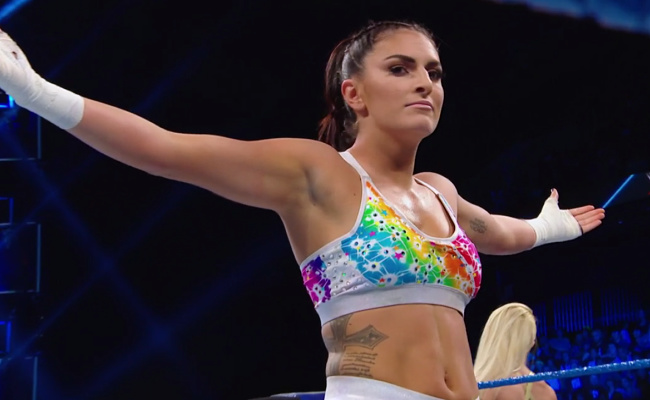
In 2018 at Wrestlemania 34, Sonya Deville, (real name: Daria Berenato) the first openly gay woman to wrestle with WWE, entered the ring at the first ever WrestleMania Women’s Battle Royal covered head to toe in rainbow ring gear. The former MMA fighter has become a fan favorite within the wrestling community, and this year joined the cast of the hit WWE television series Total Divas. The scripted reality show is a huge hit with non-wrestling fans, and Berenato’s introduction of her girlfriend, Arianna Johnson, offers the first insight in the show’s history of a lesbian relationship.
This isn’t to say that WWE doesn’t still have a hell of a long way to go with queer representation. An episode of Monday Night RAW began trending on twitter after a storyline involving the wrestler Lana exposed as having cheating on her man with another woman, Liv Morgan, royally angered fans. Queer fans and allies alike took to the internet to express their disgust with queerness being equated to scandal, especially in a storyline where all of the performers (to our knowledge) are actually straight. WWE can’t be mentioned without discussing the owners’ political beliefs, given the fact that one of the co-founders of the company is a former member of Trump’s cabinet and is now the Chairman of a Trump super-PAC. Last night during the women’s royal rumble, there were two open lesbians competing… only to have a man in a dress as a joke enter the women’s match as well. They basically destroyed their own progress in one shot. However, the fact the biggest name in wrestling across the globe is granting a spotlight to an openly queer woman through their reality series is a step in the right direction, albeit a tiny one.
Not to be outdone, WWE’s competitor, All Elite Wrestling (AEW) made history this past year when they signed a wrestler named Nyla Rose. Rose, a First Nations person with Oneida heritage, became the first openly transgender woman to perform with a major wrestling promotion. In AEW’s first ever women’s match, she participated in a four-way battle with Dr. Britt Baker, Kylie Rae, and Awesome Kong (known to most as the woman behind Tammé “Welfare Queen” Dawson on Netflix’s GLOW.)
Wrestling fans were… divided, to put it kindly.
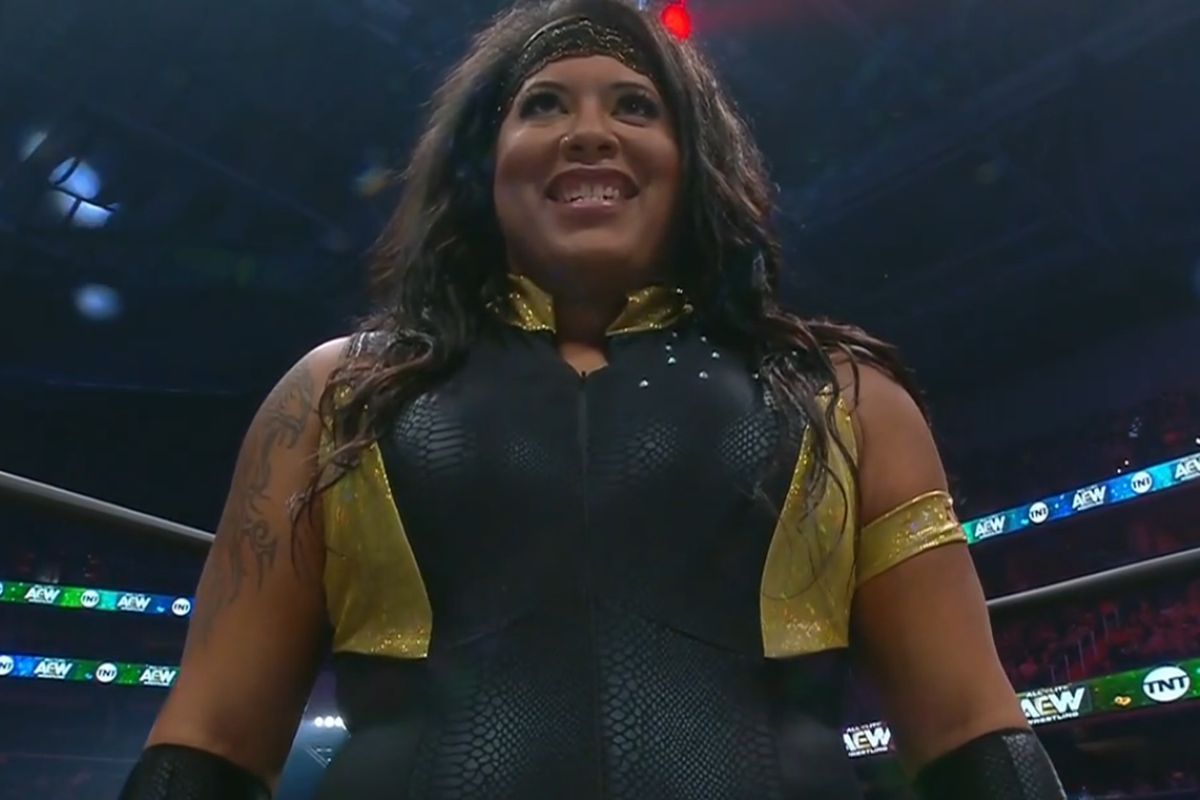
Plenty of ignorant asshats came out of the woodwork to complain about Rose’s “biological advantage,” despite the fact that the outcomes of all professional wrestling matches are pre-determined. The internet wrestling community turns into an absolute shitstorm for days leading up to and following any major event featuring Rose, but she’s yet to let it get her down.
“It was a little frustrating because I didn’t get the chance to tell my own story myself,” Rose tells Autostraddle. “I mean, I never hid the fact I was trans, so it was definitely out there, but another news source I guess learned about me and ran with it, before I knew it was everywhere.” She continues, “Now it’s just kinda whatever.”
Fellow transgender wrestler, Candy Lee, is no stranger to this kind of treatment. “I just laugh and call people out for it,” she says. “At the end of the day, I’ve been through worse and heard it all before, so I’m not fazed by it.”
Known out of the ring as Leilani Tominiko and online as Lei Barbie, Candy Lee is New Zealand’s first transgender professional wrestler and one of the few openly trans women wrestling around the world. Lee debuted in the United States at the promotion RISE during their “Pride and Joy” show, a Chicago wrestling event billed as “pro wrestling’s ultimate event of love and inclusion.” The show featured a number of openly queer and gender non-conforming wrestlers, including world famous Luchador exótico wrestler, Cassandro.
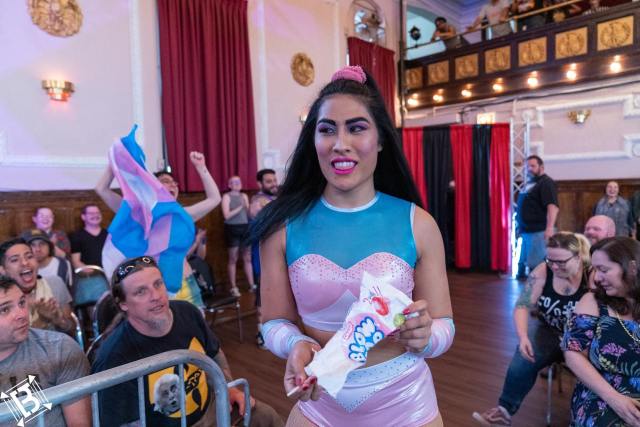
“Growing up there wasn’t much representation so to be apart of,” says Lee. “I just want to inspire people by being my authentic self and doing what I’m passionate about.”
“It was imperative to me that I bring a normality to what people understand as transgender,” says Rose. Nyla Rose on the AEW roster not only normalizes trans performers in professional wrestling, but also makes her accessible to audiences all over the world every single week. “The biggest take away, for me, is that normalcy we talked about,” she says. “That we can be funny and entertaining without being relegated to hurtful and problematic punchlines. That it’s ok to be attracted to a trans person, or find them attractive. That said attraction doesn’t change anything about you that you don’t want it to. That we are all people that have dreams and we all deserve at least a chance to chase them.”
Throughout wrestling’s sordid history, one of the easiest ways for an opponent to “get over” on their opponent was by emasculating them. Putting wrestlers in dresses or calling them “girls,” like a schoolyard bully was commonplace, which means that for many years, the very thought of a transgender performer would immediately have become a joke. “I never wanted my transness or my journey to be a factor in my character,” says Rose. “Especially when knowing that even unintentionally I would be representing an entire community in the public eye.”
Fortunately, both fans and other wrestlers alike have made it clear that wrestling is no longer a business where bigotry is going to be tolerated.
For non-binary wrestler Jamie Senegal, the sentiments are similar. “Bigotry is my favorite, as sick as that is, because the more of it I endure, the bigger the fire lit under me becomes,” they say. “I love proving people wrong.” When Senegal wrestled Candy Lee for the iconic all-women’s promotion, Shimmer, the duo made history as being the first Trans v. Gay match in the promotion.
For many queer and trans wrestlers, the idea of an “intergender match” is still viewed as taboo. The openly pansexual wrestler known as Allie Kat frequently wrestles against cis men, and wins. “There’s a difference between not liking technical wrestling because you think it’s boring or not liking death matches because it’s too gory; that’s just a preference like your taste in music,” she tells us. “But then there’s people who don’t like intergender because it’s either A. not believable to them or B. they don’t like ‘seeing women in these situations’ to which both are obviously rooted in misogyny whether they know it or not.”
The major difference between professional wrestling and something like Mixed-Martial Arts or UFC fighting is that although everyone is putting their bodies on the line for sports entertainment, the outcomes are predetermined and the hits, bumps, moves, and spots are all approved upon by the fighting parties ahead of time. For someone to argue that a woman is incapable of defeating a man is pretty ridiculous. “I am silly and I act like I am a cat and put whiskers on my face and if [people] want to discredit my wrestling based on my gender and not that? Then I just don’t have the time to waste,” says Allie Kat.
Outside of the two biggest promotions (WWE and AEW), other wrestling promotions have not been shy about their LGBTQ+ talent. Kiera Hogan and Diamante, the tag-team known as “Fire and Adrenaline” won the WOW Women of Wrestling tag team titles back in November. The duo became the first openly LGBTQ+ couple to win tag team titles in history, a couple in both “kayfabe” and in real life.
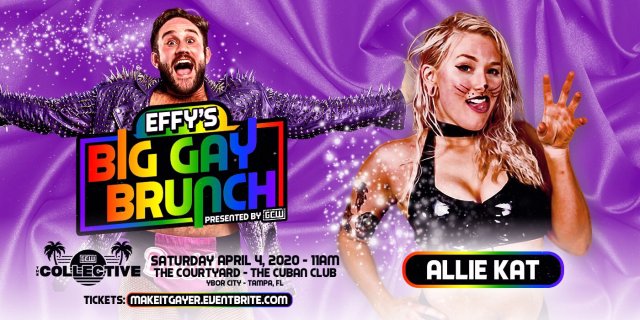
This April during “Wrestlemania Weekend,” in Tampa, FL, the promotion Game Changer Wrestling is hosting an event called “Effy’s Big Gay Brunch,” where the independent wrestling scene’s resident “Daddy,” is hosting an all LGBTQ+ wrestling show during the biggest wrestling weekend of the year. The event will host the “Bi-Curious Battle Royal,” He’s already booked talent like Allie Kat, Ariane Andrew, and Cassandro.
Events like “Effy’s Big Gay Brunch” are just the tip of the iceberg when it comes to the explosion of LGBTQ+ inclusivity in wrestling. “When you look into a crowd 20 years ago and a crowd now, I see more women, POC; not just a sea of dudes in NWO shirts anymore,” says Allie Kat. “I take that as something has happened, someone made it possible for marginalized groups to feel more comfortable and enjoy going to see wrestling.”
‘Wait, What?’ Is the Body-Affirming, Gender-Expansive Sex Ed Comic Preteens Need
“Don’t worry, buddy. You’re right on time!” So says the weird platypus mascot of Wait, What? A Comic Book Guide to Relationships, Bodies, and Growing Up.
It’s a message preteens need to hear as they navigate puberty, friendships, bodies, attraction, and the sticky mess of being a person. This short graphic novel, written by Scarleteen founder Heather Corinna and illustrated by friend of A-Camp Isabella Rotman, is out now through Limerence Press, the same publisher that gave us A Quick and Easy Guide To They/Them Pronouns. It covers the anatomical nuts and bolts of sexuality, sexual health and puberty and also dives into social aspects like consent, how to get support from adults you trust, sexuality and gender identity.
The story features five friends: Rico, Malia, Max, Sam and Alexis. This group of middle schoolers are having a range of experiences with and feelings about sex and their bodies. They talk to each other about some of the tricky topics they’re facing, challenge each other’s biases and shame, and help pump each other up as they face different challenges.
Rotman and Corinna hope the book will help fill gaps in sex-ed curricula and be a resource for parents and other trusted adults to help walk pre-teens through these essential conversations that neither adults or kids are always comfortable having. The book models language around how to have these conversations by, for example, letting the kids talk about gender and sexuality on their own terms. 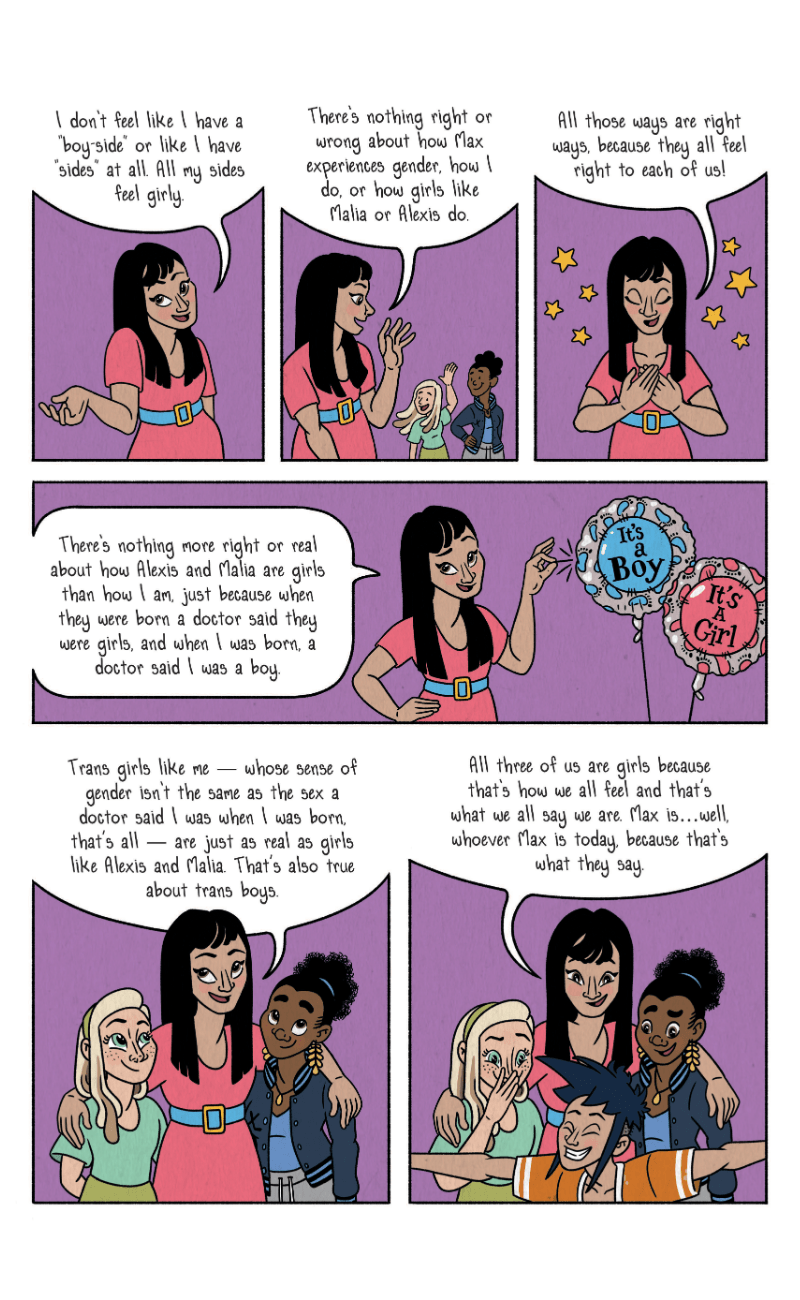 “I do think the majority of the education around gender at this point is being done by sex educators and I want to give them credit for that!” Rotman said. “But when you go and try to look for a sex ed guide you’re going to find a lot of really binary language and it was really important for this to be an exception to that. We have trans and nonbinary characters that talk about that in language that is accessible to the age group.”
“I do think the majority of the education around gender at this point is being done by sex educators and I want to give them credit for that!” Rotman said. “But when you go and try to look for a sex ed guide you’re going to find a lot of really binary language and it was really important for this to be an exception to that. We have trans and nonbinary characters that talk about that in language that is accessible to the age group.”
In fact, Corinna said they believe Wait, What? is the first sex ed guide that does not use any gendered language to talk about menstruation, especially targeted at the preadolescent age group.
The book deftly acknowledges that each of its five main characters is different in their experience of their bodies, sexualities, genders, romantic interests, and overall development. It allows each kid to define their experience on their own terms and shows a little of their process of becoming comfortable with their unique selves, while promoting kind and thoughtful behavior toward all peers.
“I came up a punk kid, a queer kid, [in] the 70s and 80s, so normal was never my god that I worshipped,” Corinna said. “It’s tricky because when people ask us if something is normal, you want to reassure them because you don’t want them to feel fearful or shameful or embarrassed. But as the platypus represents, a lot of stuff is weird! It’s weird by any standard! There’s nothing wrong with saying ‘of course it’s normal,’ to help reassure someone, but we should also make room for people to get more comfortable with things that aren’t normal! When you talk about people with… quite uncommon gender identities or orientations, there don’t have to be a billion people like that for someone to not have something wrong with them.”
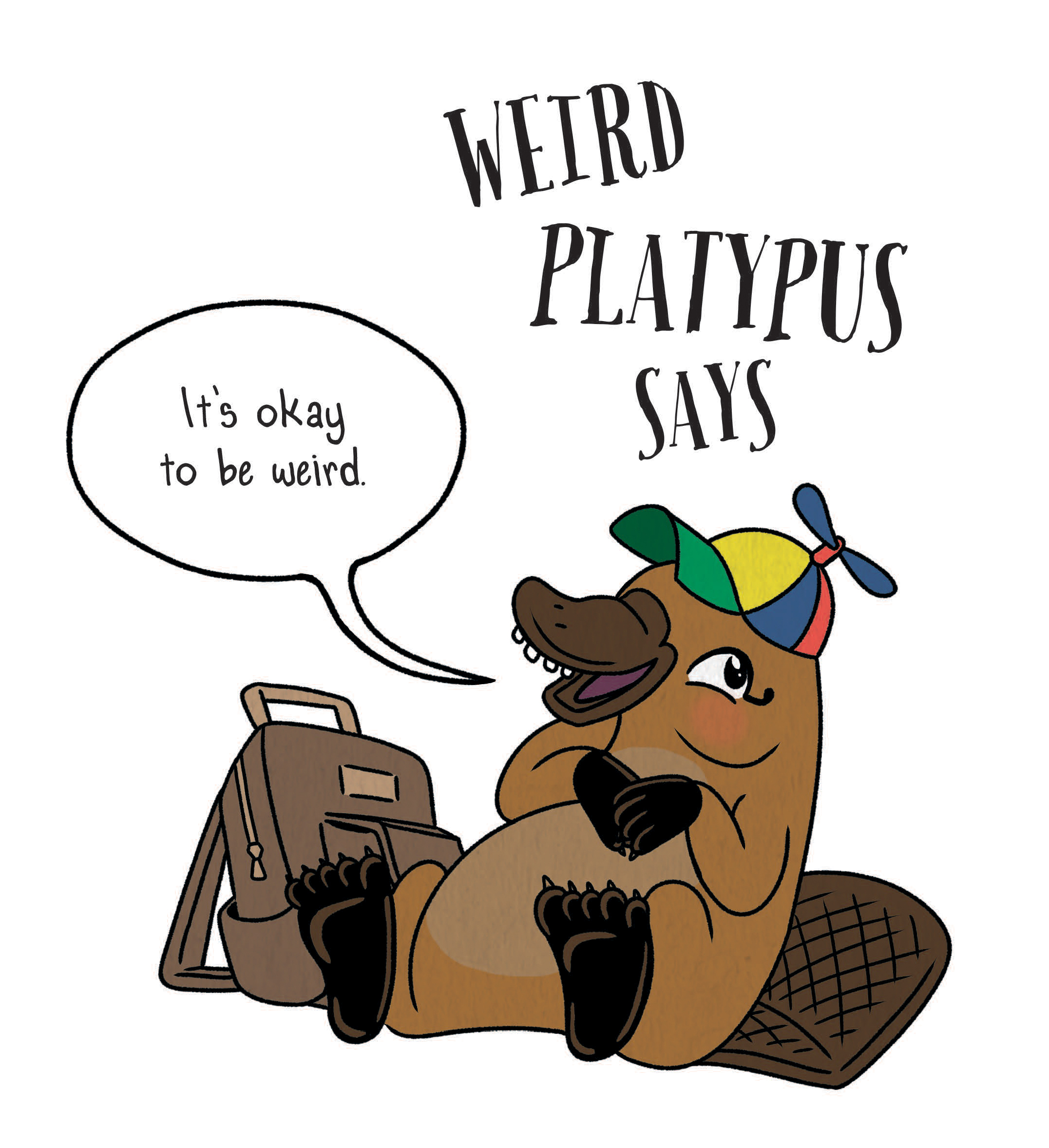 Of course, this book is aimed at young people themselves, but it’s also a perfect conversation opener for any adult that works with, or frankly knows, any young people. It is non-judgmental and at times truly profound. As a 28-year-old queer, trans adult, I found phrasings and ideas that felt new and resonated, like when the kids talked about how genitals are kind of weird, but so are ears! and toes! As a person who cares deeply about the queer and trans kids coming after me, it feels valuable to have new, age-relevant language to help empower them with information and give them tools for exploration and discovery. Wait, What? is a quick read that packs a lot in, using dialogue, narration and images to share information for all types of learners.
Of course, this book is aimed at young people themselves, but it’s also a perfect conversation opener for any adult that works with, or frankly knows, any young people. It is non-judgmental and at times truly profound. As a 28-year-old queer, trans adult, I found phrasings and ideas that felt new and resonated, like when the kids talked about how genitals are kind of weird, but so are ears! and toes! As a person who cares deeply about the queer and trans kids coming after me, it feels valuable to have new, age-relevant language to help empower them with information and give them tools for exploration and discovery. Wait, What? is a quick read that packs a lot in, using dialogue, narration and images to share information for all types of learners.
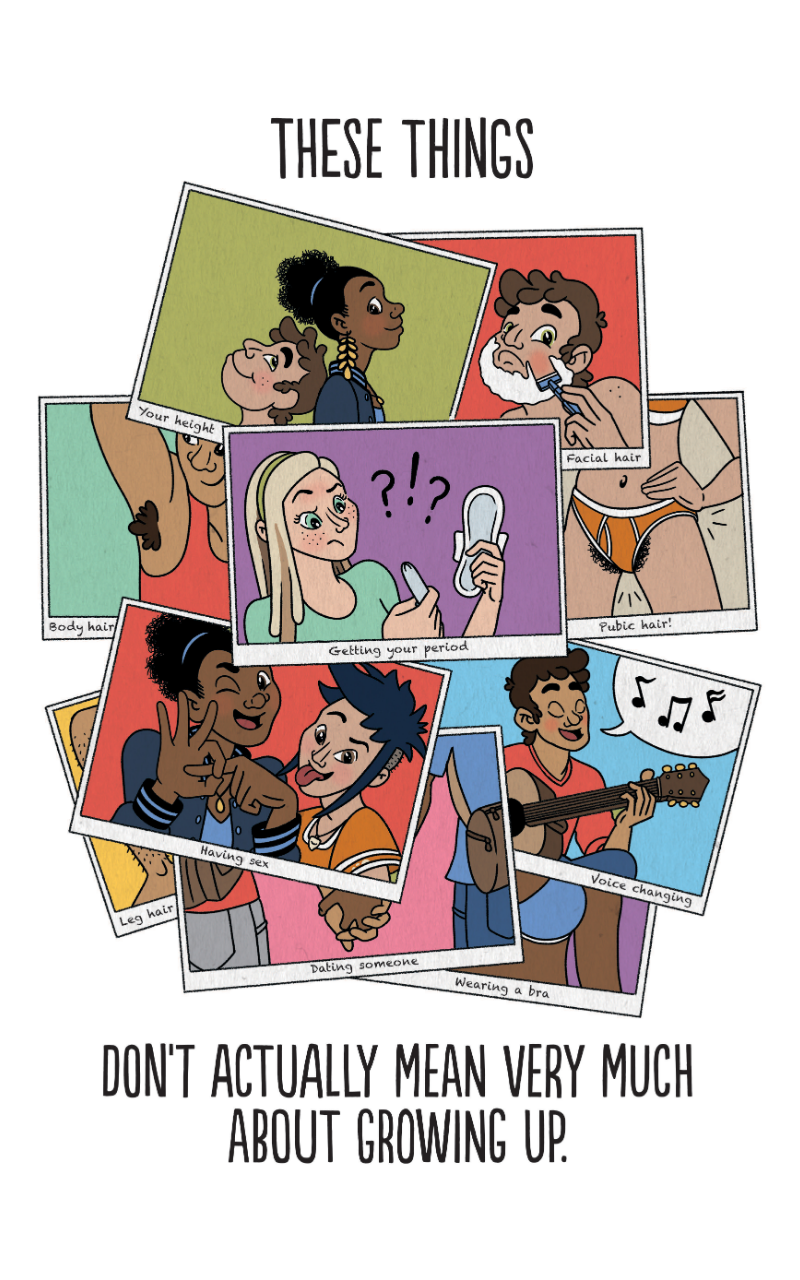 Corinna and Rotman hope the book will make its way into homes and libraries as well as be a helpful supplement for classrooms and sex educators. It’s available online wherever books are sold and making its way into real live bookstores too. So far the reception has been very positive, although Corinna acknowledged some nervousness around putting out a sex-positive, gender-affirming book about sex for middle schoolers, because “this age group isn’t buying their own books. If the adults aren’t ok with it the kids aren’t going to see it!” So it’s up to all of us adults to get Wait, What? into the hands of kids who need it.
Corinna and Rotman hope the book will make its way into homes and libraries as well as be a helpful supplement for classrooms and sex educators. It’s available online wherever books are sold and making its way into real live bookstores too. So far the reception has been very positive, although Corinna acknowledged some nervousness around putting out a sex-positive, gender-affirming book about sex for middle schoolers, because “this age group isn’t buying their own books. If the adults aren’t ok with it the kids aren’t going to see it!” So it’s up to all of us adults to get Wait, What? into the hands of kids who need it.
As Rotman put it, “this is very much the book a queer aunt buys you.” Hear that, queer aunts?
8 Great Trans Fantasy Novels
I was asking around for lesbrarian questions on Twitter the other day and was excited to receive this request for:
Trans people in fantasy!! I have always loved the “woman dresses as man to do thing” trope (Alanna [series] by Tamora Pierce) and I think I always wished they’d stay the same! Trans main characters in fantasies are rare as far as I can tell in general though.
Eight excellent fantasy novels with trans main characters coming your way! I have taken quite a broad definition of fantasy, including urban fantasy, romance fantasy, superhero stories and more! These are also all by trans authors.
Maiden, Mother, and Crone: Fantastical Trans Femmes edited by Gwen Benaway
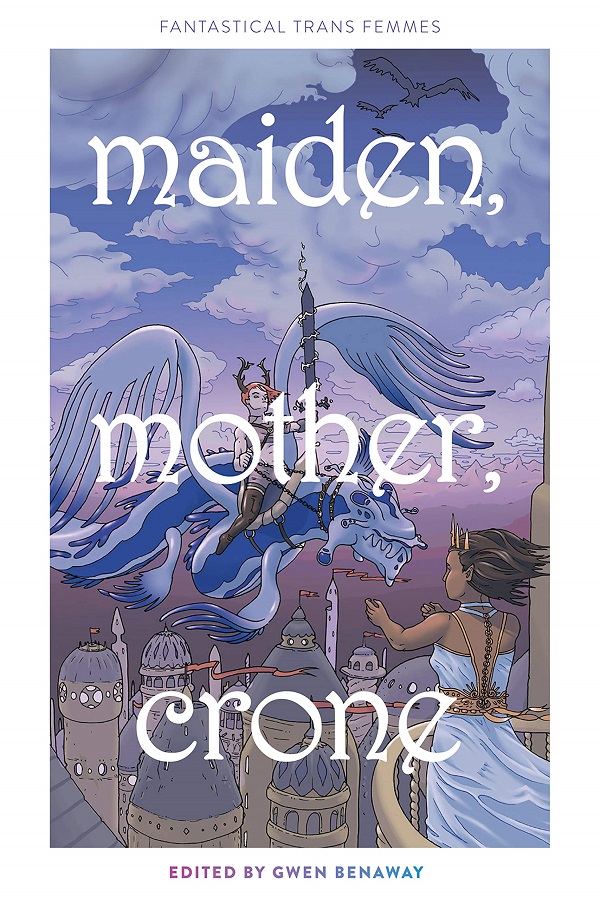 Anishinaabe and Métis poet and author Gwen Benaway has crafted the trans femme fantasy anthology of your dreams in Maiden, Mother, and Crone. Fantasy in this case is defined expansively: the collection includes Dungeons and Dragons-esque worlds, vampire stories, fairy tales, paranormal mid-century noir, and plenty of high fantasy with beloved tropes reimagined from trans perspectives. As Benaway writes in her introduction, here readers will find trans women as “fearless warriors, revolutionary fighters, and mercenary mages.” Some of the stories focus on the character’s trans identity; in others transness is merely incidental. You might recognize a few authors whose stories are included in the anthology from Autostraddle, like Kai Cheng Thom and Casey Plett.
Anishinaabe and Métis poet and author Gwen Benaway has crafted the trans femme fantasy anthology of your dreams in Maiden, Mother, and Crone. Fantasy in this case is defined expansively: the collection includes Dungeons and Dragons-esque worlds, vampire stories, fairy tales, paranormal mid-century noir, and plenty of high fantasy with beloved tropes reimagined from trans perspectives. As Benaway writes in her introduction, here readers will find trans women as “fearless warriors, revolutionary fighters, and mercenary mages.” Some of the stories focus on the character’s trans identity; in others transness is merely incidental. You might recognize a few authors whose stories are included in the anthology from Autostraddle, like Kai Cheng Thom and Casey Plett.
Dreadnought by April Daniels
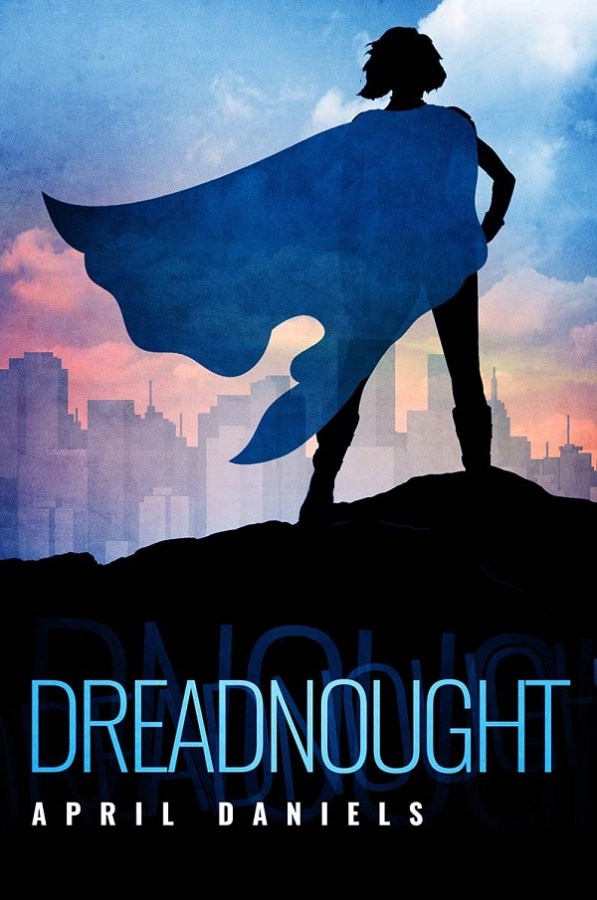 Danny is a closeted trans teen girl when the superhero Dreadnought dies in front of her, inadvertently passing on his powers and transforming her body so that she can’t hide that she’s a girl any longer. Daniels does a great job throughout the rest of this superhero origin story integrating action-packed supervillain battle with real life stuff about a teen fighting transphobia. Can Danny beat the villain who was the demise of the original Dreadnought? Can she stand up to the TERF superhero who’s supposed to be one of the good guys, not to mention her unsupportive parents? Both tasks are challenging and daunting. Keep an eye out for my favourite character, Danny’s lesbian mom superhero mentor named Doc Impossible. Oh yeah, did I mention that Danny is also a lesbian?
Danny is a closeted trans teen girl when the superhero Dreadnought dies in front of her, inadvertently passing on his powers and transforming her body so that she can’t hide that she’s a girl any longer. Daniels does a great job throughout the rest of this superhero origin story integrating action-packed supervillain battle with real life stuff about a teen fighting transphobia. Can Danny beat the villain who was the demise of the original Dreadnought? Can she stand up to the TERF superhero who’s supposed to be one of the good guys, not to mention her unsupportive parents? Both tasks are challenging and daunting. Keep an eye out for my favourite character, Danny’s lesbian mom superhero mentor named Doc Impossible. Oh yeah, did I mention that Danny is also a lesbian?
No Man of Woman Born by Ana Mardoll
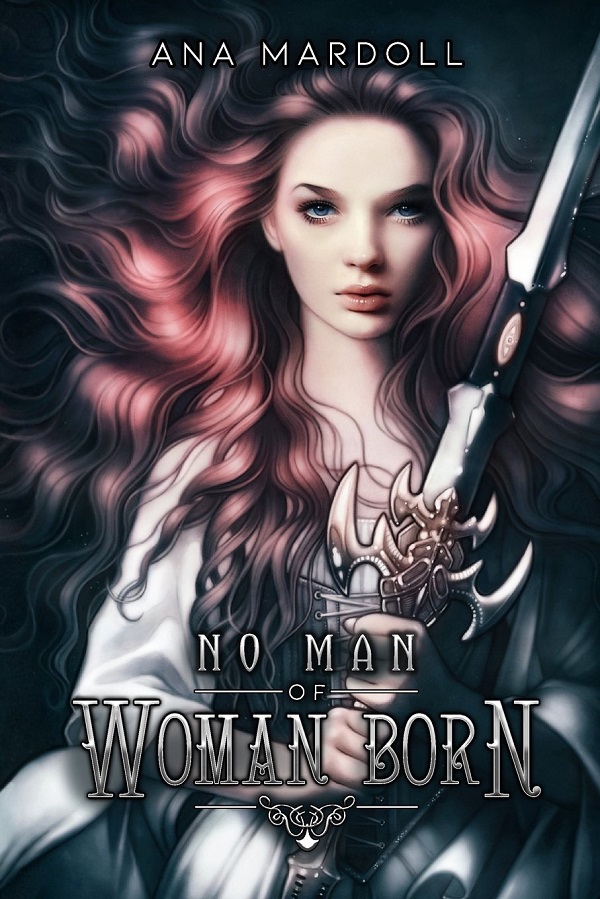 Nonbinary author Ana Mardoll’s collection of epic fantasy and fairy tales is all about nonbinary and binary trans people taking their destinies into their own hands. In fact, while the stories are all set in different worlds, they’re connected by the theme of gendered prophecies, and how trans people might fit into them. Ever wondered what a trans version of The Sword in the Stone would look like? How about Sleeping Beauty with a genderfluid character? Mardoll has taken the staples of fantasy and fables — dragon battles, prophecies, witches seeking vengeance and more — and presented them in a way that feels brand new and familiar at the same time. Mardoll’s storytelling has an easy flow, like the timeless fairy tales the collections is drawing from.
Nonbinary author Ana Mardoll’s collection of epic fantasy and fairy tales is all about nonbinary and binary trans people taking their destinies into their own hands. In fact, while the stories are all set in different worlds, they’re connected by the theme of gendered prophecies, and how trans people might fit into them. Ever wondered what a trans version of The Sword in the Stone would look like? How about Sleeping Beauty with a genderfluid character? Mardoll has taken the staples of fantasy and fables — dragon battles, prophecies, witches seeking vengeance and more — and presented them in a way that feels brand new and familiar at the same time. Mardoll’s storytelling has an easy flow, like the timeless fairy tales the collections is drawing from.
Viscera by Gabrielle Squailia
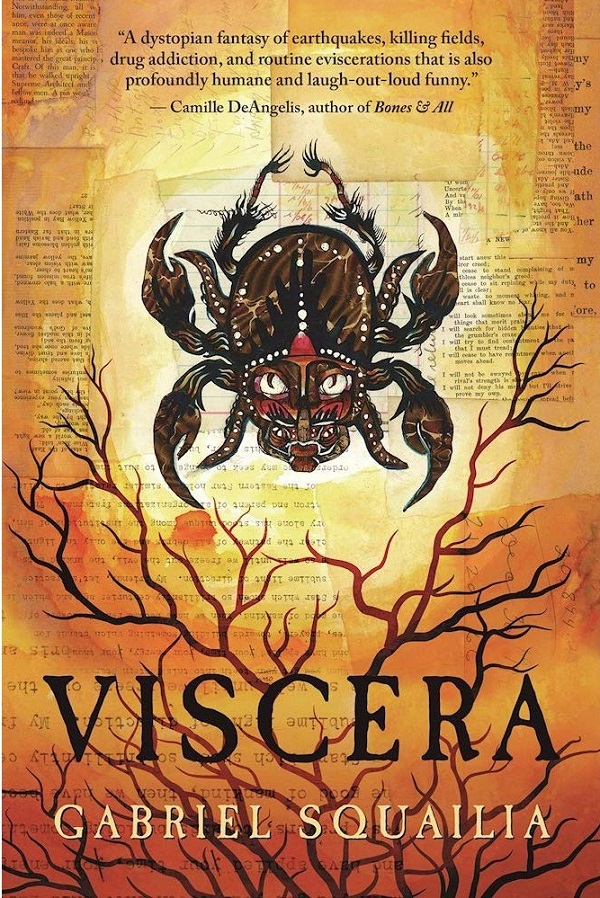 As might be evident in the title, Viscera is a dark fantasy novel with strong elements of body horror. It’s also the kind of fantasy novel that delights in its own weirdness. Like in other fantasy stories, the premise is an unlikely group of characters ends up on an epic quest together. Unlike other fantasy stories, the party includes drug addicts who worship a swearword-loving god, a pacifist with endless self-regenerating powers who has been disembowelled, an animated puppet, and multiple trans characters. Despite the dark themes — which in addition to gruesome separation of humans from their body parts include death, suicide, and transphobia — Squalilia also manages to integrate tongue-in-cheek humor and even, against all odds, hope for the future!
As might be evident in the title, Viscera is a dark fantasy novel with strong elements of body horror. It’s also the kind of fantasy novel that delights in its own weirdness. Like in other fantasy stories, the premise is an unlikely group of characters ends up on an epic quest together. Unlike other fantasy stories, the party includes drug addicts who worship a swearword-loving god, a pacifist with endless self-regenerating powers who has been disembowelled, an animated puppet, and multiple trans characters. Despite the dark themes — which in addition to gruesome separation of humans from their body parts include death, suicide, and transphobia — Squalilia also manages to integrate tongue-in-cheek humor and even, against all odds, hope for the future!
Brew by Dane Figueroa Edidi
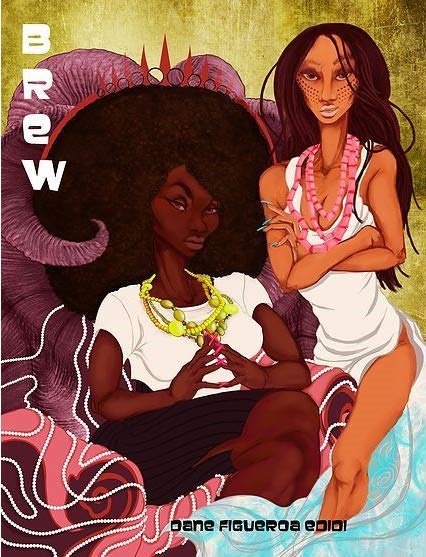 Black trans teen witches, anyone? Brew is the first book in Edidi’s Ghetto Goddesses trilogy. Arjana Rambeau is a Baltimore 15-year-old, who’d rather be doing regular teen stuff than hiding the fact that she’s a witch. Alas, her mom Bembe is also a witch — an infamous one who happens to have earned herself a lot of nemeses. Arjana must learn to take her place in the line of powerful witches she comes from, for both her and her mother’s sake. Why? Because a spiritual war is brewing — hence the title — and Arjana and her mother can’t help but be swept up in it. Enemies become allies and vice versa as both women test out who they can trust, whose loyalties lie where, and how to work together. This YA novel is a unique, magical coming-of-age story with strong witch coven vibes.
Black trans teen witches, anyone? Brew is the first book in Edidi’s Ghetto Goddesses trilogy. Arjana Rambeau is a Baltimore 15-year-old, who’d rather be doing regular teen stuff than hiding the fact that she’s a witch. Alas, her mom Bembe is also a witch — an infamous one who happens to have earned herself a lot of nemeses. Arjana must learn to take her place in the line of powerful witches she comes from, for both her and her mother’s sake. Why? Because a spiritual war is brewing — hence the title — and Arjana and her mother can’t help but be swept up in it. Enemies become allies and vice versa as both women test out who they can trust, whose loyalties lie where, and how to work together. This YA novel is a unique, magical coming-of-age story with strong witch coven vibes.
Transcendent 3: The Year’s Best Transgender Speculative Fiction edited by Bogi Takács
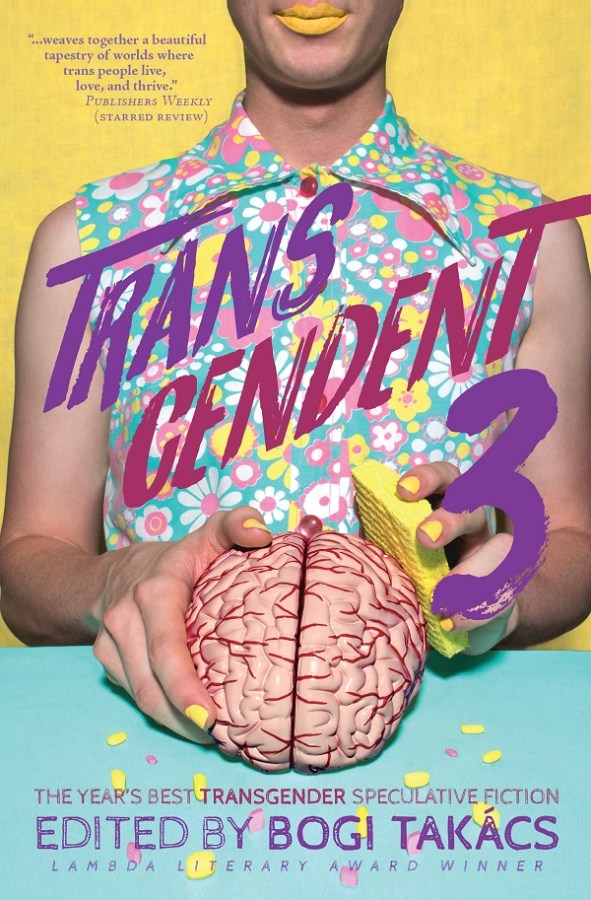 This is the third and most recent edition of a fantastic anthology series. Takács has assembled a diverse, eclectic collection of fantasy, sci fi, and otherwise speculative stories by trans authors with trans characters and themes. Dysphoric trans vampires? Check. Nonbinary parenting in space? Check. A laugh-out-loud story called “A Splendid Goat Adventure”? Check. Mughal steampunk mechanical creatures? Check. The tone varies throughout from light to heavy, and serious to funny. Multiple stories investigate intersectionality, looking at how trans identities intersect with diaspora, mental illness, and disability. In addition to the fiction, there’s the nice treat of Takács’s introductory materials, which discuss the past, present, and future of trans SF/F. I guarantee that your to-read list is going to explode, from the editor’s foreword alone!
This is the third and most recent edition of a fantastic anthology series. Takács has assembled a diverse, eclectic collection of fantasy, sci fi, and otherwise speculative stories by trans authors with trans characters and themes. Dysphoric trans vampires? Check. Nonbinary parenting in space? Check. A laugh-out-loud story called “A Splendid Goat Adventure”? Check. Mughal steampunk mechanical creatures? Check. The tone varies throughout from light to heavy, and serious to funny. Multiple stories investigate intersectionality, looking at how trans identities intersect with diaspora, mental illness, and disability. In addition to the fiction, there’s the nice treat of Takács’s introductory materials, which discuss the past, present, and future of trans SF/F. I guarantee that your to-read list is going to explode, from the editor’s foreword alone!
Tensorate Series by J.Y. Yang
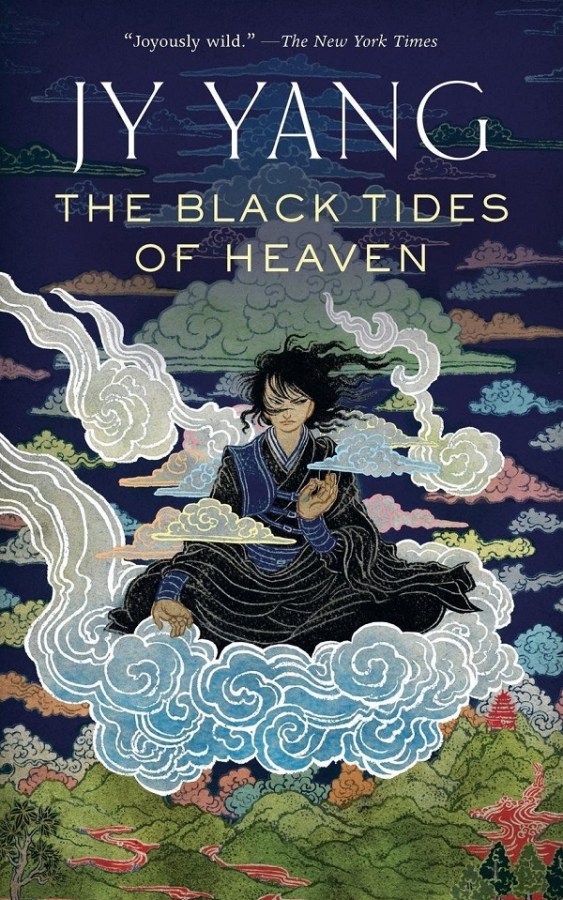
At four novellas in total now, Yang’s Tensorate series continues to delight readers with its gender creative silkpunk fantasy universe. Technology and spirituality are interwoven in this world that offers all children no assigned gender at birth and the opportunity to choose their own genders later (including continuing to identify as nonbinary). The story moves from different characters in different time periods, all of whom are caught up in the political intrigue the Protectorate, the land ruled by the supreme Protector. An investigator examines a terrible incident at the Institute of Experimental Methods. The Protector’s twin children explore their unique and dangerous gifts of the mind. An enemy and former lover of the Protector looks back on their youth. The inventiveness of the worldbuilding is matched only by the Yang’s vibrant prose.
Meanwhile, Elsewhere: Science Fiction and Fantasy from Transgender Writers edited by Cat Fitzpatrick and Casey Plett
 Honestly, if for some reason you could only read one anthology of trans fantasy and science fiction in a lifetime, this should be it. It’s simply a knock-out collection which at 450 pages somehow manages to keep up a very high standard of quality storytelling. One of my personal favorites was “Notes from a Hunter Boy” by Beckett K, a unique historical fantasy story told in the form of a diary discovered eons later the society has died. The concepts of ‘man’ and ‘woman’ are totally turned on their heads. “Matchmaker” by Dane Figueroa Edidi also delighted me, with its season 6 Buffy feel centred on a Black trans witch. “Satan, Are You There? It’s Me, Laura?” by Aisling Fae features a Satan who is a bad-ass trans woman; God is a bro who’s in love with her but obviously unworthy. Don’t miss this majestic book!
Honestly, if for some reason you could only read one anthology of trans fantasy and science fiction in a lifetime, this should be it. It’s simply a knock-out collection which at 450 pages somehow manages to keep up a very high standard of quality storytelling. One of my personal favorites was “Notes from a Hunter Boy” by Beckett K, a unique historical fantasy story told in the form of a diary discovered eons later the society has died. The concepts of ‘man’ and ‘woman’ are totally turned on their heads. “Matchmaker” by Dane Figueroa Edidi also delighted me, with its season 6 Buffy feel centred on a Black trans witch. “Satan, Are You There? It’s Me, Laura?” by Aisling Fae features a Satan who is a bad-ass trans woman; God is a bro who’s in love with her but obviously unworthy. Don’t miss this majestic book!
Special thanks this month to Bogi Takács and Corey Alexander, whose recommendations and/or reviews were super helpful to me in crafting this list. Check them out and support their work on trans and queer writing!
Have any fantasy with trans characters to recommend? Please share in the comments! If you’d like me to answer your question in a future column, send me an email at stepaniukcasey [at] gmail.com or leave a comment below. I love hearing from you all!
“Better Than Chocolate” Turns 20, Remains the Only Movie Where a Trans Woman Has a Lesbian Friend Group
“As an actor I should be able to play any person, or any tree, or any animal, because that’s my job and the requirements of my job.”
Last month, the highest paid actress in Hollywood, Scarlett Johansson made this statement, and was promptly met with backlash. Her failed attempt at playing a trans man had taught her nothing. She confirmed what most of us had assumed: she stepped aside because she had to, not because she understood.
There are a lot of reasons cis actors shouldn’t play trans characters. You’ve probably heard these reasons before. Trans actors are rarely cast as cis characters, so cis actors are taking away some of the few jobs they can get. Cis actors playing trans parts dangerously suggests that trans people are simply wearing a costume. Trans actors can bring a level of authenticity to a part especially when the writer and director are cis.
Of these reasons, the one that is most quantifiable, and, therefore, most understood by cis people, is the matter of giving trans actors parts. This also allows cis people to imagine a world where we achieve a level of equality where actors can just be actors. You wouldn’t believe how many people on the internet cherish the craft of acting.
It’s not that I don’t care about this. I, of course, want trans people to be employed in every field, including the entertainment industry. But a world where trans people are cast as cis characters in exchange for cis people getting cast as trans characters is not the world I dream about. Because there’s another really important reason it shouldn’t happen.
Cis actors are absolutely terrible at playing us.
Today is August 13, 2019, which means a lot of things. It’s Leo season. It’s International Left-Handers Day. It’s Andrea Gibson’s birthday. And, most importantly, it’s the 20th anniversary of lesbian classic Better Than Chocolate.
Better Than Chocolate is not a good movie. But if you were gay in the late ’90s or early ’00s you’ve probably seen it. Or you’ve seen it if, like me, you watch a lot of gay movies, regardless of quality.
Maggie is a lesbian. She works at a gay bookstore. She lip syncs at a local club. And she moves, falls in love, and begins hosting her mother and brother all in the span of about 24 hours. Chaos ensues. It’s a wild few days in Vancouver and we’re just lucky to bear witness.
Most people probably remember the movie for the sex scenes between Maggie and her new girlfriend, Kim. Notably there’s a scene where they paint each other’s bodies to make art and make love. They also fuck in a bathroom stall and are met with cheers by the lesbians in line, a reaction that seems… unlikely.
But the movie is ultimately an ensemble. Maggie and Kim are joined by Maggie’s recently divorced mother, her teenage brother, a horny bisexual who hooks up with her brother, Maggie’s boss Frances who is fighting to keep her bookstore alive, and Judy, a trans woman eager to have surgery and desperately in love with Frances.
Better Than Chocolate is silly and fun, especially when you’re accompanied by a group of friends and a bottle of wine. But the ’90s were a monumental decade for queer cinema. 1999 alone had Aimée & Jaguar, All About My Mother, But I’m a Cheerleader, Chutney Popcorn, The Matrix, Set Me Free, and the US release of Show Me Love. There’s really only one reason to revisit this movie that’s mediocre at best. And that reason is Judy.
Better Than Chocolate is the only piece of media that portrays a trans woman as a member of a lesbian friend group. Correct me if I’m wrong. Please, I beg of you, correct me.
When trans people are included in lesbian ensembles it’s always trans men. From The L Word to Itty Bitty Titty Committee to the latest Tales of the City to The L Word again, this has been the case. This isn’t inaccurate. Anyone who has spent time in cisdominant lesbian spaces knows there are more transmasculine people than transfeminine people. But if accuracy was truly the goal there would be far more than one transmasculine person, one or two transfeminine people, and a few more non-binary people thrown in for good measure. Turns out, in real life, we’re not all fighting to be the only one.
But in this Canadian cult comedy we get Judy. And her storyline is handled surprisingly well, despite some usual tropes.
After backup dancing Maggie’s opening number, Judy is introduced sharing a letter from her parents. She’s been estranged from them for years but now they’ve offered to buy her a condo so she has someplace to stay post-surgery. Maggie responds by complaining about her own mother coming to visit and telling Judy she should find a place for her mother too.
This happens throughout the film. The conversation is hijacked from Judy and she quickly adapts. Trans women and non-binary AMAB people often take on a caretaking role, so while it’s frustrating to watch, it feels realistic. Maggie and her mother lean on Judy. Her problems may be more serious, but she’s used to decentering herself.
Even though most of the film is very light, it doesn’t know how to tell Judy’s story with the same touch. She’s getting surgery, she’s trying to navigate estrangement from her parents, and, in one especially painful scene, she’s physically assaulted in a women’s bathroom. The movie cuts from this bathroom harassment to Maggie and Kim kissing on the dance floor and that juxtaposition sums up the difference in how we think cis stories and trans stories can be told.
While there’s value in watching Judy navigate her position in lesbian spaces and confront her family trauma, the reason I care about this movie is because Judy gets a love story.
At first, it seems like Frances isn’t interested. Judy boldly asks her out and Frances mutters something about being busy.
Then she sees Judy perform.
I’m not a fucking drag queen
I’m in another bracket
What you see before you
Is not some midnight racket
Judy’s song is vulnerable and angry. It’s delicious that Judy’s sexy performance is centered around this level of openness. She doesn’t win over Frances by hiding her transness. She wins her over by owning it.
When the performance ends, Frances is even more frazzled than usual. She is awash with confused cis horniness. “That was great! Really!” she shouts to no one in particular.
But then the doubts come back. “Judy, I’ve never been what you would call sexually adventurous,” Frances says. “I’ve had three girlfriends. All of them were exactly like me.”
“I’m exactly like you!” Judy insists. She shares that she was an English major and that they both love Gertrude Stein. Judy is trans. But she is more than that identity. She is also a literature dyke and wants to be treated as such. Frances, once again, seems stunned. Judy coolly lights her cigarette and they decide to leave together.
Back at Frances’ place, Judy kisses her hesitantly. There’s a beat. And then Frances lunges. They make out for a few moments before Frances’ doubts sink back in. This is the same night as the incident in the bathroom and watching Judy leave hurriedly with a bruise on her face and another on her ego is heartbreaking.
But during the climax, after Maggie has chained herself to the front of the bookstore, a gang of skinheads has tried to blow it up, and Kim has returned after the mandatory third act dip, Judy also gets a happy ending.
Frances tells her that she loves her. And they kiss.
This triumphant moment has only one problem. Judy is played by Peter Outerbridge, a cis man. This affects every moment in the film, good and bad.
It also happens to be my favorite performance of a cis person playing a trans character.
No trans actor has ever been nominated for an Oscar.
But Chris Sarandon, John Lithgow, Jaye Davidson, Felicity Huffman, Glenn Close, Janet McTeer, and Eddie Redmayne have been nominated for playing trans characters, and Hillary Swank and Jared Leto won.
Most of these performances are terrible.
The reason why I prefer Outerbridge’s performance to this acclaimed list is because he was decidedly not trying to win an Oscar. The strained importance that’s felt in those other performances is exhausting. Every single choice is meant to highlight the tortured inner struggle of being transgender. They perform femininity and masculinity like aliens mimicking human behavior.
Outerbridge is not without some of these tics. He pitches his voice up to near-Doubtfire levels and he moves his hands as if limp wrists were a core tenant of womanhood.
But there are moments where Outerbridge forgets to play trans, when he gets so tied up in being in love or being afraid that he’s just a person. This is when his performance is at its best. It’s also when he’s most obviously a man.
A man is ultimately a person and that’s what’s felt deepest. And that’s what’s most important. He’s a person. She’s a person. But it still feels fake. It becomes a heightened theatrical experience where the pleasure is not found in an immersion into the world, but rather in watching a story told. It’s like a parent reading all the parts in a children’s book. They aren’t convincing, but it’s the thought that counts.
Part of the problem is obviously medical. While every trans woman does not medically transition, this character is about to have surgery meaning she’s likely been on hormones for years. The subtle changes that occur to your face, your body, your mind, simply cannot be replicated by throwing some makeup on a cis man.
Then there’s the performance itself.
It’s nearly impossible to discuss whether or not acting feels authentic. Because of that word: feels. How does one quantify that feeling?
I have certainly met trans women who sound like Judy and move their hands like Judy. Maybe this is natural to them. Maybe they too are trying to perform femininity in a world that demands it from trans women. I might cringe when Outerbridge acts this way, but I cannot point to these tangible choices as a mark of inauthenticity.
Whenever I talk to cis people about this topic, I can see them salivating at the possibility of presenting me with a Pepsi-Coke Challenge. What if I didn’t know? Would my oft-said declaration that I can just tell hold true?
I think it would. I think it has. I also think it doesn’t matter.
Cis people act like trans stories are new. But since 1975 nine cis actors have been nominated for Oscars for playing us. So many more were nominated for Emmys and Golden Globes. So many more weren’t nominated for awards because their roles were little more than a joke or a one-note villain. Acting is not always about authenticity, but all of the performances listed above were intended to be so. And the ones that aren’t tend to be mean, portraying trans people for laughs or scares.
The first hundred years of cinema were cruel towards trans people. I will not apologize for my inability to watch a cis person on screen trying to be me, and not feel in constant danger of being mocked.
Better Than Chocolate is a lighthearted lesbian comedy. And yet we’re still beaten up, we’re still abandoned by our parents, we still have to convince someone who likes us that we’re dateable, and we still don’t get to have sex on screen.
My favorite moment in the movie happens during the climax when one of the skinheads punches Judy. She punches him back. He calls her a dyke. And she says thank you.
I like watching her fight back. I like her sense of humor. I like how it shows a specific trans experience: being harassed as a woman, as a lesbian, can be more validating than a compliment.
But I’m still aware that my favorite moment in this movie, the only movie to portray a social circle like my own, features a cis man.
For a moment, I am on screen. Yet, I’m nowhere to be found.
LGBTQ Characters Are Thriving on TV While the World Burns, GLAAD Report Finds
Last year, I built an internal database of every lesbian, bisexual and queer female character to appear on English-language television, which I’ll continue maintaining indefinitely. However, “maintaining the database” and, respectively, keeping our Fall TV Preview current, has turned out to be a bigger job than I anticipated. Sometimes it feels like the opposite of 2016, when updating the list of Dead Lesbian and Bisexual TV Characters eventually became part of my daily routine. We’ve amassed some bodies this year, sure, but we’ve gained a lot of new characters too. After an unprecedented summer for queer characters of color, the fall season has bestowed upon us surprise new lesbian and bi characters on Manifest, The Man in the High Castle, God Friended Me, Law and Order SVU, American Vandal, The First, The Deuce, Shameless, Atypical, The Purge, The Haunting of Hill House and Wanderlust. Those are just the shows that we weren’t aware would feature queer women — there are over a dozen more we knew about ahead of time.
Which is just to say that I wasn’t surprised that for the first time in all the years we’ve been reporting on the GLAAD Where We Are On TV Report, the news is mostly positive. “Where We Are on TV” accounts for and forecasts the presence of LGBTQ characters for the 2018-2019 TV Season (June 1, 2018 – May 31, 2019). This is the 23rd year GLAAD has done this quantifiable tracking.
Here are the major things GLAAD found about representation on broadcast television:
- Record high percentage of LGBTQ series regulars (8.8%, up from last year’s 6.4%)
- We have finally reached gender parity amongst LGBTQ characters: men and women are coming in at 49.6% each (last year: 55% men, 44% women)
- For the first time ever, LGBTQ characters of color (50%) outpace white (49%) characters! Just barely but still!
- Record-high numbers of Black (22%, vs. 18% last year), Latinx (8%, tied with last year) and API series regulars (8% vs. 7% last year)
- Lesbians are up slightly from last year (28% vs 25%), but we have yet to re-ascend to the 33% we had in 2015-2016, many of whom proceeded to die in 2016.
- Bisexual+ characters are up (29%), with 25 bi+ women and eight bi+ men.
The CW takes broadcast honors for the most inclusive network, and came up top in analyses of gender diversity, too, which backs up something we’ve noticed in Autostraddle Teevee HQ: The CW, often guided by Greg Berlanti, is really angling for the queer female audience. As Kayla noted in her piece about Cheryl Blossom’s confirmed bisexuality, “[The CW] should probably at least change their slogan from “dare to defy” to “dare to BE BI.” By our own count, 13 of The CW’s 17 current scripted offerings include LGBTQ women characters. Supergirl now has the first trans superhero on TV and we’re getting closer and closer to the debut of lesbian Batwoman.
GLAAD notes that many of these shows have only one LGBTQ character amongst a group of straight cisgender characters, which should change. As I’m sure many of you know and have experienced firsthand, being the only queer person in an entire town of straight cisgender people can often be a living breathing nightmare that nobody should have to endure in real life and perhaps not so frequently on our television screens either.
Findings from Cable:
- Lesbians (53 characters, 26% of the total) are up in number but down in percentage and bisexual women are down three percentage points (19% characters, representing 40 characters). The number of bi+ men on cable has increased for the first time in three years.
- The number of LGBTQ regulars on scripted primetime cable is up to 120, from 103 in the previous year. Recurring characters are up to 88 from 70, for a total of 208 characters.
- Gay men are still the majority of LGBTQ regular and recurring characters, at 43%.
- 3.9% of these characters are transgender: seven trans women, one non-binary person.
GLAAD notes that FX, with its hearty roster of Ryan Murphy programming, has overtaken Freeform as the most inclusive cable network. However, it’s worth noting that FX’s inclusive programming, while often featuring queer women, seems to always feature queer men; and Freeform was essentially the reverse — often featuring queer men, always featuring queer women.
Pose alone is responsible for more than half the trans representation on all of cable. GLAAD writes, “There has never been a scripted show with several ongoing trans characters who interact as chosen family in the same ways that lesbians and gay men were able to see and relate to on The L Word and Queer as Folk respectively.”
The fine print: 31 characters included in this year’s cable report won’t be returning for next year, and 27% of all LGBTQ representation on cable is on eight series that have six or more queer characters each. If any of those series were cancelled, there’d be a notable decrease in inclusion across cable generally — but this has also always been the case with these reports. See, for example, the few years lesbian numbers spiked but almost all of those characters were on The L Word.
Findings from Streaming:
- Streaming networks boast 112 regular & recurring LGBTQ characters, 42 more than last year
- 48% are people of color, up from last year’s 23%.
- Streaming is the only place where Latinx characters are significantly represented, at 24% (Cable has 9%, Broadcast has 12%, and Latinx people are 17% of the U.S. population.) Fifteen of those 27 characters are from foreign Netflix series. (I’m assuming this is Elite, House of Flowers & Cable Girls.)
- Gay men are at 35%, Lesbians at 33%, Bisexual women at 17%, and Bisexual men at 8%
- Streaming has the highest number and percentage of trans characters.
Netflix was awarded ‘most inclusive network’ honors, but they also have the largest number of shows, period, so it’s not really a fair fight. They also found 14 of Hulu’s 16 LGBT characters are women — Harlots and The Handmaid’s Tale both got even queerer this year, Desiree Akhavan’s The Bisexual premieres next month, and Marvel’s Runaways is returning in December. Hulu’s queer women abundance might be related to the fact that 62% of Hulu’s subscribers are women.
The “highest number and percentage of trans characters” is a little tricky too, as they include next year’s 2-hour musical finale of Transparent (I’m serious, that’s the plan) and Orange is the New Black, which’s also airing its final season next year. I’m not sure if Sense8‘s finale movie was part of that count, either, but that’s over too.
Cross-platform findings:
- Significant increases in LGBTQ characters of color
- Trans characters are up with 26 across all platforms — 17 trans women, five trans men and four non-binary characters.
There’s still plenty of room for improvement, which is a topic we touch on just about every day. We need more trans characters across all shows, and a lot more trans men, and more QPOC characters and more characters with disabilities and women and men should be even and wow there’s just a lot still to be done!
Last year, armed with our new database, I did an enormous piece on the year in queer TV, and I’ll be doing that again this year, too, so I don’t want to get too much into what we’ve observed on the topics GLAAD’s report covers or our theories about why it’s happening aside from the obvious — showrunners are listening to GLAAD, they’re listening to fans, and they’re increasingly aware of how specifically passionate queer women are about our stories. But I do wonder if maybe just maybe in general, the people of this devolving country are more open than ever to stories about women generally, and stories about women who date women instead of men specifically. Just saying.
“The Orville” Reinforces My Hunch That Seth MacFarlane Should Stop Writing About Trans People Forever
Family Guy and The Cleveland Show creator Seth MacFarlane is responsible for some of the worst trans representation on TV, and he’s up to his old tricks on his new sci-fi comedy, The Orville. In the third episode, “About a Girl,” MacFarlane introduces a baby born to an all-male species of aliens that has the “wrong genitals” at birth; the episode revolves around the fight the parents have with the ship’s human crew, including the captain and doctor, to give the newborn surgery to “fix the problem” and “make the baby male.” It presents that idea that gender and sex are binary in humans and, in fact, universally binary in all species in every universe even in the distant future. MacFarlane seems to think he’s making a progressive point about gender, but it’s really another huge miss for him.
In the galaxy where The Orville takes place, there seems to be a universal concept of sexual dimorphism, where every species has the stereotype that males are bigger and stronger and females are smaller and weaker. This isn’t even true of most species on earth. Where did the Moclans get this idea? If they only have one gender, where did they get a concept of a gender binary? Why would they even need a word for male if everyone is male? Shouldn’t any baby, regardless of how it is born, be male if that’s the only gender this species has? This is not how anything works. Presenting gender this way as a universal constant determined by your genitals at birth isn’t just lazy, it’s dangerous. It leads to the biological essentialism that leads to transphobia, transmisogyny and violence against trans women by the men who sleep with them.
There are so many frustrating things about this episode even outside the half-baked gender binary world-building. It completely ignores the existence of intersex people who actually do undergo nonconsensual surgery on their genitals shortly after birth. It uses ominous music and editing when it talks about trans issues. It makes it all seem like trans people are so confusing that even in the far future when we have intergalactic unions, starship captains and doctors won’t know how to deal with or talk about us. It turns being trans into a plot point and source of conflict.
The Orville is leaning heavy on Star Trek, a show that often addressed social issues and pushed them forward; the original Star Trek had the first interracial kiss on television. The Orville instead decides to look at social issues and push them backwards. The tone of the show makes it even more confusing, as it has an air of self importance and intellectualism about it, but mixes that with a complete lack of understanding about the current cultural and political climate, and dick jokes.
“Seth MacFarlane was attempting to be a progressive ally with his latest Orville episode,” wrote Jessie Earl at The Advocate. “Yet, while he may have failed on the progressive side, he still was being an ally to the intersex and transgender community.”
While it’s true that the LGBT community often comes down way too hard on allies for their attempts at LGBT representation — and that community includes us here at this website a lot of the time — Seth MacFarlane might be one of the few who has officially exhausted any remote benefit of the doubt we could possibly summon. Don’t forget that MacFarlane is also a misogynist who told a series of disgusting rape jokes at the 2013 Oscars. You’d think after so many past failures, he might actually consult with GLAAD before taking another hack at a trans storyline.
Like… what exactly is Seth MacFarlane’s problem with trans people? Does he have a personal bet going with Ryan Murphy — the creator of terribly-treated-trans-characters like Unique from Glee, Liz Taylor from American Horror Story and so many trans women seeking surgery on Nip & Tuck — to see who can be more irresponsible, offensive and harmful in their depictions of trans people on television while congratulating themselves for portraying trans characters at all?
Throughout his career, MacFarlane has made a habit of turning trans women into jokes and objects of derision. Riese wrote about several of his attempts in her GLAAD-Award nominated piece about the history of trans women characters on American television.
One of the more infamous depictions of trans women on TV in recent years is Quagmire’s dad on Family Guy. His dad is a trans woman, who sleeps with Brian the dog, and when this dog finds out that she is a trans woman, he “vomits for a solid 60 seconds and screams in terror.” Seth McFarlane described this portrayal as “probably the most sympathetic portrayal of a transsexual character that has ever been on television, dare I say.” When the LGBT community expressed deep loathing towards this episode, McFarlane responded with, “that surprised me. I don’t meet a lot of stupid homosexuals. They seem to be a pretty smart bunch. But it seemed that they were not picking up on the fact that it was a very sympathetic portrayal of a transsexual character.”
In his Family Guy spinoff, The Cleveland Show, when Cleveland finds out that a character named Auntie Momma is a trans woman and that his dad slept with her, he “vomits for about 45 seconds.” When Cleveland tells his dad that he slept with a trans woman, his dad also vomits for 45 seconds. MacFarlane repeatedly teaches his viewers that not only should they feel tricked if they sleep with a trans woman, but they should feel absolutely disgusted as well. This is exactly the attitude that gets trans women murdered.
Because it’s a show created by a popular and established showrunner on a broadcat network like Fox, The Orville has a wider reach than shows like Transparent, Sense8 and Doubt — the latter of which which got canned after only a few episodes at CBS and burned off on Friday nights after wide backlash — that have worked hard with actual trans people and activists to make sure they’re getting representation right. That makes it even more imperative that when shows like The Orville tackle trans issues, they do a good job. It’s especially important right now as the Trump administration rolls back protections for trans people, bans trans people from the military, and props up state legislatures that continue to try to keep trans people out of public facilities that match their gender identities and, in some cases, even prohibit them from gaining access to their vital records.
MacFarlane has proven he can’t be trusted to tell trans stories, in this or any galaxy.
Drawn to Comics: We Need More Slice Of Life Trans Comics Like Melanie Gillman’s “Pockets”
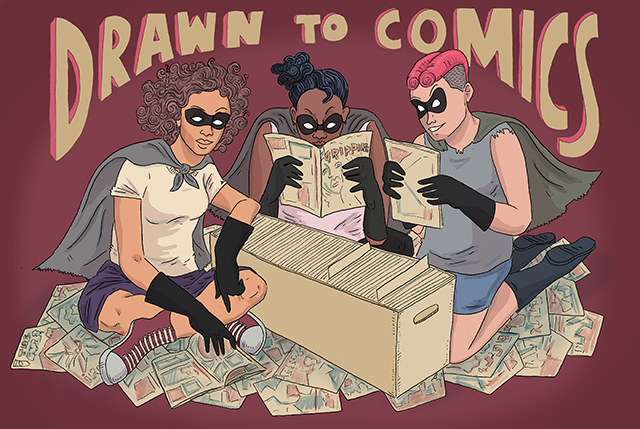
by rory midhani
Sydney, the young trans girl who co-stars in Mel Gillman’s artistic triumph of a webcomic As The Crow Flies is a wonderfully delightful creation. She’s spirited, she’s sure of herself, she’s realistic and she won’t compromise her love of skirts and cute shoes for a hiking trip. Now, thanks to the support Gillman got during their Kickstarter campaign for the book version of their webcomic, they’ve released a short — but not too short — prequel comic called “Pockets” about Sydney before she went to the Christian girl’s summer camp that As The Crow Flies takes place at. It’s cute, it’s complicated and it’s a great addition to the ATCF world. It also helps show that the more we flesh out our trans characters and the more stories we tell about them, the better representation is going to be.
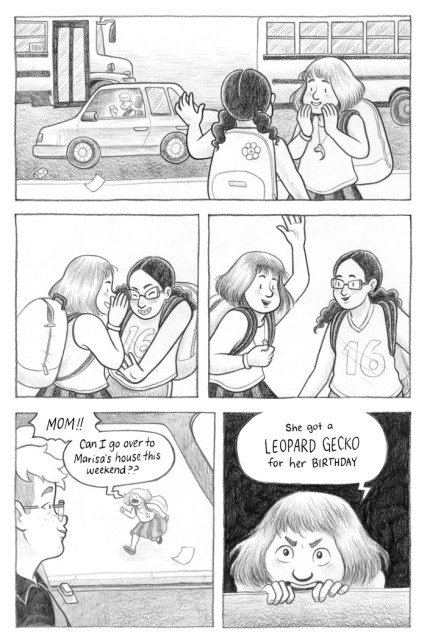 In “Pockets,” Sydney and her mom are on their way to go shopping for some hiking boots and shorts for Sydney’s trip. She’s normally wearing skirts and cute flats, but her mom is understandably concerned about those kind of clothes while she’s hiking up a mountain for a week. But Sydney has other plans. She’s a smart girl and places more importance on fashion than function, and wants to just wear more cute flats and skirts. Another thing that complicates this shopping trip is that Sydney’s mom is a struggling single mother who works long shifts at a diner in order to support her and her daughter. She’s worked extra hard and has $14 to spend at the Goodwill for Sydney’s trip. She’s using every last ounce of strength she has to make sure her daughter has the best life she can give her, but sometimes she gets stressed out and sometimes she feels like she doesn’t have enough.
In “Pockets,” Sydney and her mom are on their way to go shopping for some hiking boots and shorts for Sydney’s trip. She’s normally wearing skirts and cute flats, but her mom is understandably concerned about those kind of clothes while she’s hiking up a mountain for a week. But Sydney has other plans. She’s a smart girl and places more importance on fashion than function, and wants to just wear more cute flats and skirts. Another thing that complicates this shopping trip is that Sydney’s mom is a struggling single mother who works long shifts at a diner in order to support her and her daughter. She’s worked extra hard and has $14 to spend at the Goodwill for Sydney’s trip. She’s using every last ounce of strength she has to make sure her daughter has the best life she can give her, but sometimes she gets stressed out and sometimes she feels like she doesn’t have enough.
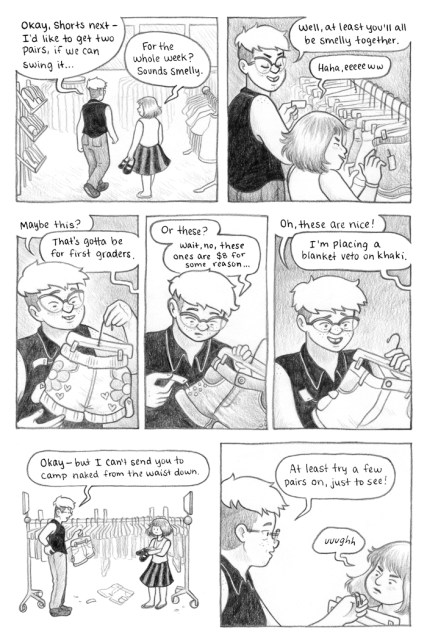 In this comic we get to see Sydney smiling and talking with friends, we get to see her excited and happy, we get to see that she has a mom who loves and supports her. But we also see that not everything’s perfect. The story is realistic, but it doesn’t fetishize or even focus on trans suffering. So often if there’s a trans character, her entire story focuses on the grief and trauma she deals with because she’s trans. It’s a story about how brave the trans character is for overcoming all the obstacles that being trans has placed in her life. And, it’s true, being trans sucks sometimes. But we also need happy trans stories, and we also need boring trans stories, and we also need mostly happy with a little sad stories.
In this comic we get to see Sydney smiling and talking with friends, we get to see her excited and happy, we get to see that she has a mom who loves and supports her. But we also see that not everything’s perfect. The story is realistic, but it doesn’t fetishize or even focus on trans suffering. So often if there’s a trans character, her entire story focuses on the grief and trauma she deals with because she’s trans. It’s a story about how brave the trans character is for overcoming all the obstacles that being trans has placed in her life. And, it’s true, being trans sucks sometimes. But we also need happy trans stories, and we also need boring trans stories, and we also need mostly happy with a little sad stories.
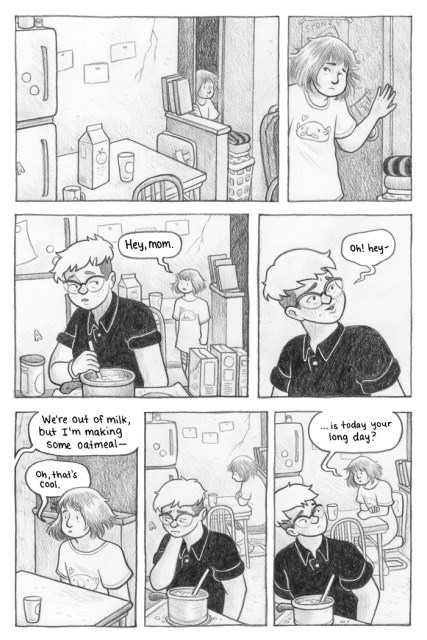 Gillman has been constantly writing some of my favorite trans characters in comics for years. There’s of course Sydney, the young trans girl in “Pockets” and Gillman’s regular webcomic As The Crow Flies that’s going to be published as a book soon. When they were writing the monthly Steven Universe comic, they wrote a wonderfully sweet issue about non-binary character Stevonnie that I loved. They’re also working on another trans character that is one of my all-time favorite trans characters in anything that I’ve read or seen. Gillman themself is non-binary and understands that the best way to get quality trans representation is to have trans creators and cis creators who care, to put out as many different kinds of trans stories and characters as they can. Melanie Gillman is pushing the quality of trans representation forward every day, and this story is one great example of that.
Gillman has been constantly writing some of my favorite trans characters in comics for years. There’s of course Sydney, the young trans girl in “Pockets” and Gillman’s regular webcomic As The Crow Flies that’s going to be published as a book soon. When they were writing the monthly Steven Universe comic, they wrote a wonderfully sweet issue about non-binary character Stevonnie that I loved. They’re also working on another trans character that is one of my all-time favorite trans characters in anything that I’ve read or seen. Gillman themself is non-binary and understands that the best way to get quality trans representation is to have trans creators and cis creators who care, to put out as many different kinds of trans stories and characters as they can. Melanie Gillman is pushing the quality of trans representation forward every day, and this story is one great example of that.
New Releases (October 4)
Harley & Ivy Meet Betty & Veronica #1
Supergirl by Peter David Book 3 TP
Wonder Woman & The Justice League of America Vol 2 TP
Wonder Woman Rebirth DLX Coll Book 1 HC
Journey to Star Wars: The Last Jedi: Captain Phasma #3
Miraculous Adventures Ladybug Cat Noir #3
Welcome to Drawn to Comics! From diary comics to superheroes, from webcomics to graphic novels – this is where we’ll be taking a look at comics by, featuring and for queer ladies. So whether you love to look at detailed personal accounts of other people’s lives, explore new and creative worlds, or you just love to see hot ladies in spandex, we’ve got something for you.
If you have a comic that you’d like to see me review, you can email me at mey [at] autostraddle [dot] com
Laverne Cox’s Latest Role Is a Turning Point for Black Trans Women in Fashion
Last week, Laverne Cox made her debut as the face of Ivy Park with trademark confidence. Cox’s inclusion in such a major campaign is significant, especially considering what Beyoncé, the line’s designer, represents for her — in an interview about the project, Cox told Glamour that “Throughout [her] transition, Beyoncé has been there as a style icon, an example of excellence, of beauty, of vulnerability.”
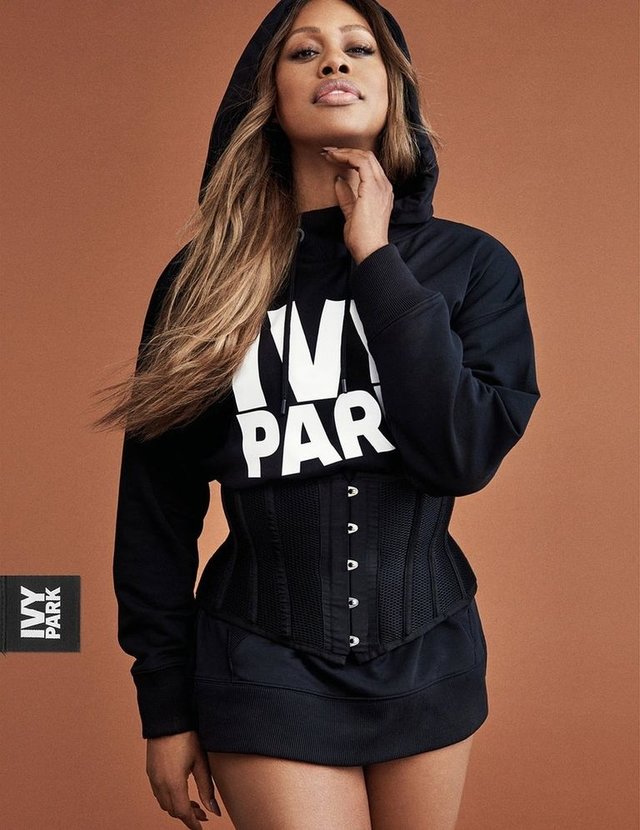
Image via Ivy Park
Cox’s take on Queen Bey is echoed by black trans writer and advocate Janet Mock, who expressed a similar sentiment in her 2014 memoir Redefining Realness.
“I was not represented in the media, but Beyoncé and Destiny’s Child validated me,” wrote Mock. “She was my style icon, the epitome of a graceful, talented strong woman. She was the mold for me. She made me love being brown, she made me love my adaptable curly hair, she made me love that my thighs touched.”

Image by lev radin / Shutterstock
As a cisgender woman, my relationship to Beyoncé is obviously not the same as that of Laverne Cox or Janet Mock — but as a black queer woman who’s purposeful in my femme identity, I connect deeply with their adoration. There are countless punchlines out there about Beyoncé’s loyal LGBT+ fan base, but her role in black queer communities can’t be overstated. As an icon, she’s created a home for so many black women and femme-identified folks, allowing us to find one another — and by choosing Laverne Cox as a brand ambassador, Beyoncé has brought that recognition full circle. She’s turning the spotlight onto her black, queer supporters, and allowing us to be seen.
Cox looks strong and stunning (and, I say with utmost respect, damn sexy) in the campaign alongside 60-year-old choreographer Karen McDonald, Haitian-born model Ralph Souffrant, and Sudanese model Grace Bol.
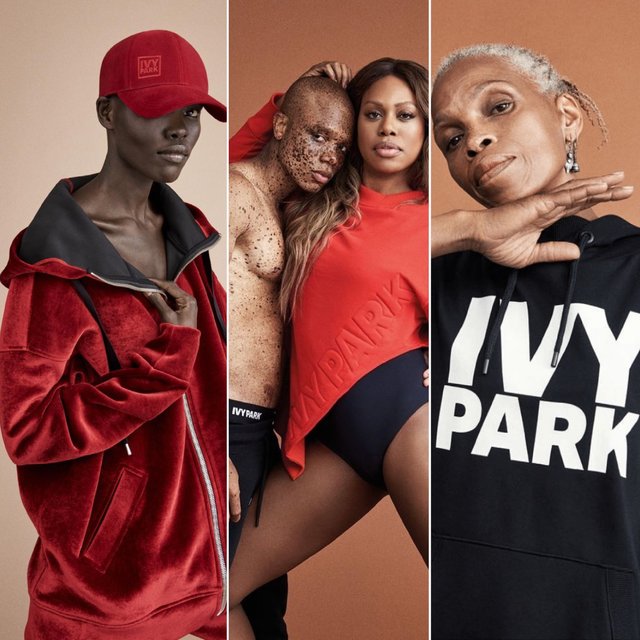
Images via Ivy Park
All that beautiful melanin is striking, but not entirely surprising; Beyoncé has shown her commitment to diversity by casting talent like Jillian Mercado, a prominent Latina model living with muscular dystrophy, and Blackish star/“woke” teen Yara Shahidi in previous fashion campaigns.
That’s not to say that Ivy Park has all the answers. Most items in the collection are around $100, which isn’t exactly affordable, and though Bey has hired dancers of all sizes on her tours, the activewear brand does not reflect that same inclusivity. As a size 14/16 with large breasts, I can’t wear most of the clothing offered — and in 2017, I find it inexcusable to create a brand that won’t fit more than half the women in America. But considering the long history of black trans women models who have been forced to live stealth to ensure their livelihood, Cox’s casting feels like a victory. I look at these photos, and I can’t help but feel uplifted.
I’m reminded specifically of Tracey Norman, the first black trans woman with a national modeling contract. In the 1970s, when fashion work was rare for black models in general, Norman’s face graced everything from Clairol boxes to Italian Vogue and Essence magazines. After being outed on a photoshoot in 1980, Norman continued to work as a showroom model for Balenciaga in Paris, and eventually became Mother of the House of Africa in the ballroom circuit — but her career was never the same.
https://www.youtube.com/watch?v=DdqbYjivr1o
“I’ve always said that the person that walks through the door first leaves the door cracked,” Norman told The Cut in 2015, reflecting on her legacy. “I left the door cracked for [other trans women] to walk through.”
How would Norman’s career look different in 2017 as opposed to 1980? I’m not sure, but after L’Oreal’s recent firing of black trans model Munroe Bergdorf in response to her Facebook post about white supremacist violence in Charlottesville, VA, I know we still have a long way to go. The backlash against the brand has gained groundswell, and another black L’Oréal spokesmodel, Clara Amfo, even ended her contract with the company in solidarity with Bergdorf. Still, the firing is a cruel reminder that our presence and visibility as black or queer or trans people is always conditional. The price of a career is often keeping our mouths shut, even when that means turning our backs on our own community. Which is why having a proud, pro-black woman like Beyoncé as an industry gatekeeper is so important, and why we need more.
https://www.instagram.com/p/BYtqJ50lp8Y/
“The message for this campaign is to celebrate everyone’s uniqueness,” Beyoncé said in a statement about her choice of models — a lesson for which Cox is the perfect messenger.
“My life changed when I stopped thinking about the things that made me different as something that would hold me back,” Cox told The Los Angeles Times, “and started thinking of them as the things that would be my salvation.”
Thank you, Laverne, Bey, for the reminder — and for all the black, queer, and trans foremothers who’ve left the door cracked. Slay, Queens, slay.

Image via Ivy Park
58 Trans Women Actresses You Should Know and Also Love
Y’all are probably familiar with the dearth of positive trans representation out there in the world, and also the oft-problematic situation in which the few trans women characters that do exist are rarely portrayed by actual trans actresses. Those roles usually go to cis men, and often go to cis women. This issue has gotten increasing attention over the last few years as high-profile trans female roles have been snagged by cis male actors like Eddie Redmayne, Jared Leto and Matt Bomer. There’s no need for this to happen when there are so many trans actresses out there who are ready and willing to do the work, as explained in a video released last month in which trans actors demand Hollywood cast trans actors in trans roles. “We’re not saying that cis people can’t ever play trans parts,” the video declares, “Just that right now, in this culture, there are consequences: bad ones.”
I recently witnessed a trivia game in which a group of queer people were unable to name more than three trans actresses (which sadly is two more than most Americans can name). Nothing makes me more bananas than seeing human beings incorrectly answer questions I know the answer to, which’s why I was VERY popular in elementary school. BUT SERIOUSLY that situation is what inspired me to make this list, a process through which I learned about so many women I’d never heard of before. Probably neither have you!
So, here we are: 55 trans actresses y’all should know and love and that we’ll hopefully see on some screens or stages more often than we do currently.
Alexandra Billings

Alexandra Billings in “How To Get Away With Murder”
Alexandra Billings is brilliant barrier-busting actress, cabaret performer, director, activist and playwright. She’s one of the first trans women to ever play a trans woman on television, and she’s since popped up on shows like How to Get Away with Murder, Grey’s Anatomy, ER and Eli Stone; as well as playing Davina, Moira’s HIV-Positive best friend, on Transparent.
Alexandra Grey
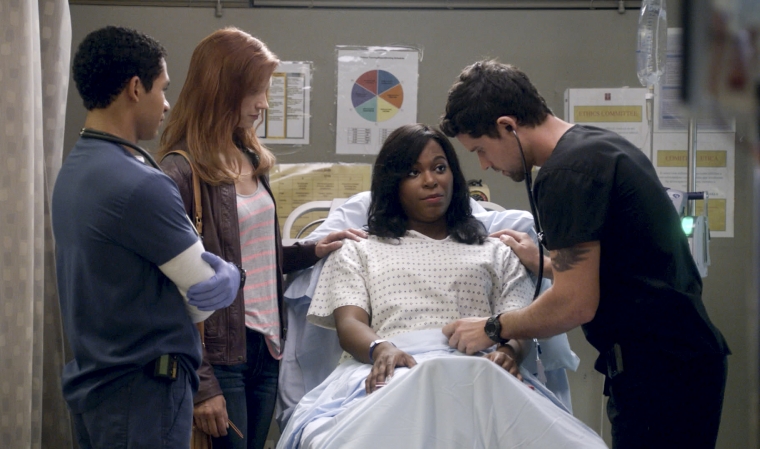
Alexandra Grey in “Code Black”
Grey’s first role was as a Dancer on the TV series Braxton Family Values in 2011, and she went on to snag a featured role as Lisa Knight in the TV series Jess Like Me as well as parts in a bunch of other TV shows and movies, including Chasing Life, DTLA, All About Lizzie, Glee, Transparent, Code Black, Chicago Med and Doubt. She played the legendary Marsha P. Johnson in Drunk History: Bar Fights and Seville in When We Rise.
Alexis Del Lago
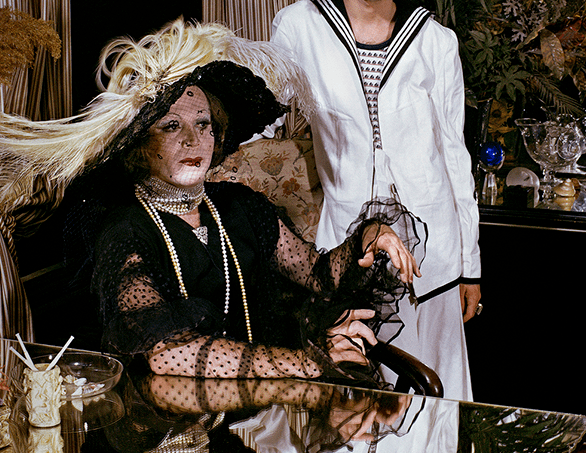
Prior to her appearance on Transparent in 2014, Del Lago’s last big acting job was in the TV show Wings in 1997. She’s also a costume designer, makeup artist and filmmaker.
Amanda Lepore
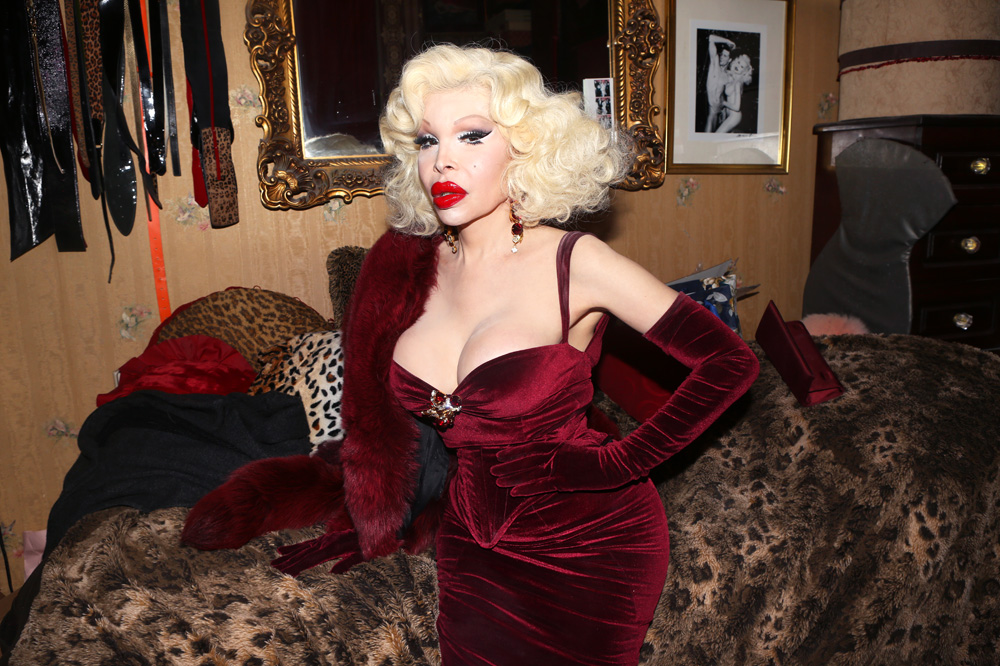
Amanda Lepore is a legend. She’s perhaps best known as a former Club Kid and the muse of photographer David LaChapelle. She’s also a singer, a performance artist, a model and an actress who appeared in movies like Another Gay Sequel: Gays Gone Wild!, Party Monster, Zoolander and Sex and the City.
Aneesh Sheth
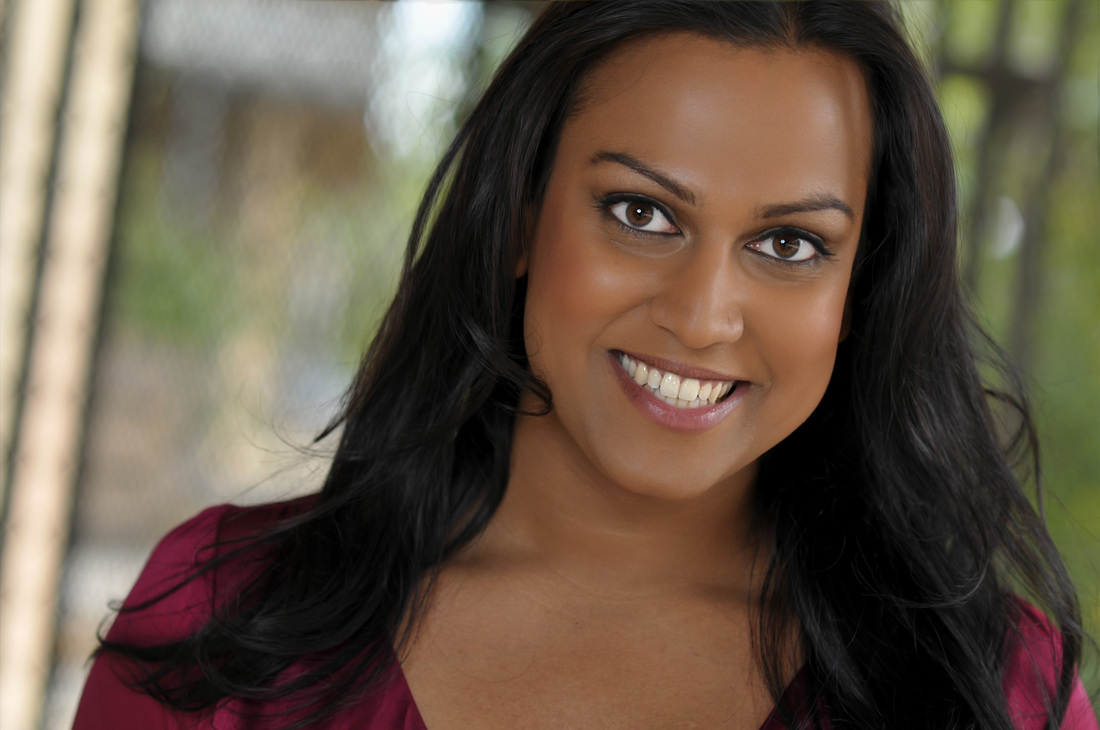
Sheth played Kami Sutra on the TV series Outsourced as well as appearing in several shorts, the TV series Crave, and the documentaries Blow Out, In the Life and Mores for Gays. She’s a singer with a BFA in Musical Theater who toured in many theaterical productions prior to coming out as trans. After coming out, she worked as a volunteer at The Trevor Project and has been active in theater, including a recent turn in the Public Theater’s production of Southern Comfort.
Angel Qinan
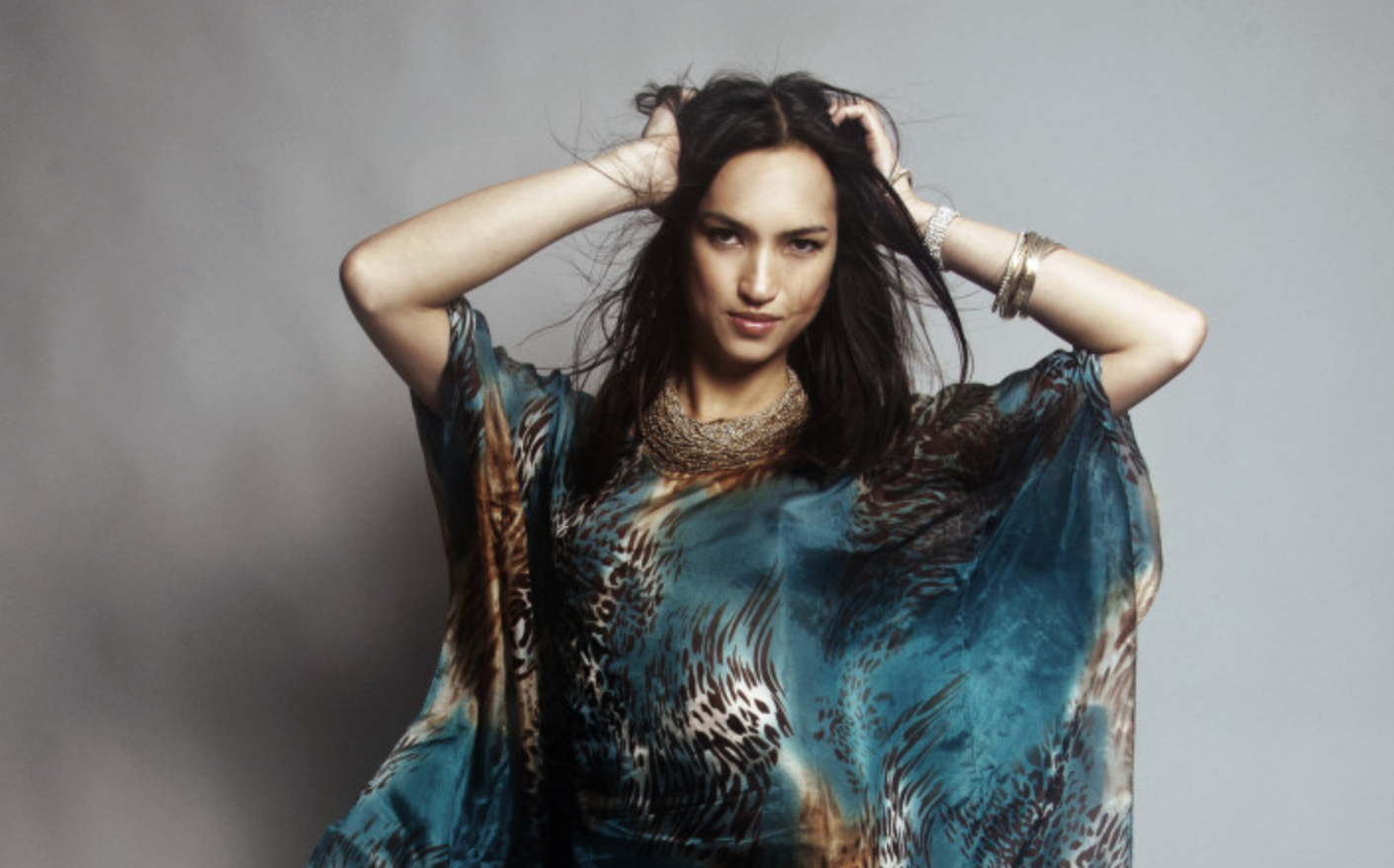
Photo Credit: © Jennifer Maria
Angel Qinan is a Filipina model and actress known for The Fosters,The Real O’Neals, Transparent, NCIS: Los Angeles, Crossing Fingers and Strut. She made her runway debut as the first transgender model in Sacramento Fashion Week and has since walked for New York Fashion Week and performs with the Trans Chorus Los Angeles.
Angelica Ross
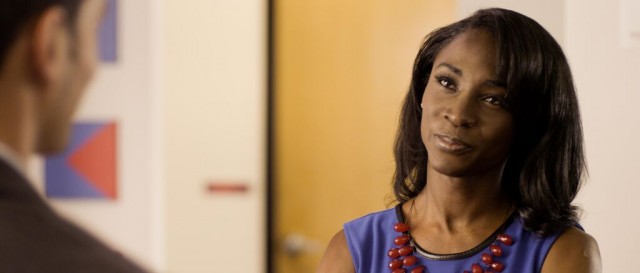
Angelica Ross in “Her Story”
Ross, an activist and the founder and CEO of anti-poverty program TransTech Social Enterprises, starred in Her Story and also has a recurring role on the upcoming female-fronted TNT comedy Claws, and did guest spots on Doubt and Danger & Eggs. She won a GLAAD Award in 2017 for an episode of The Daily Show with Trevor Noah and a 2016 Human Rights Campaign Visibility Award.
Annie Wallace
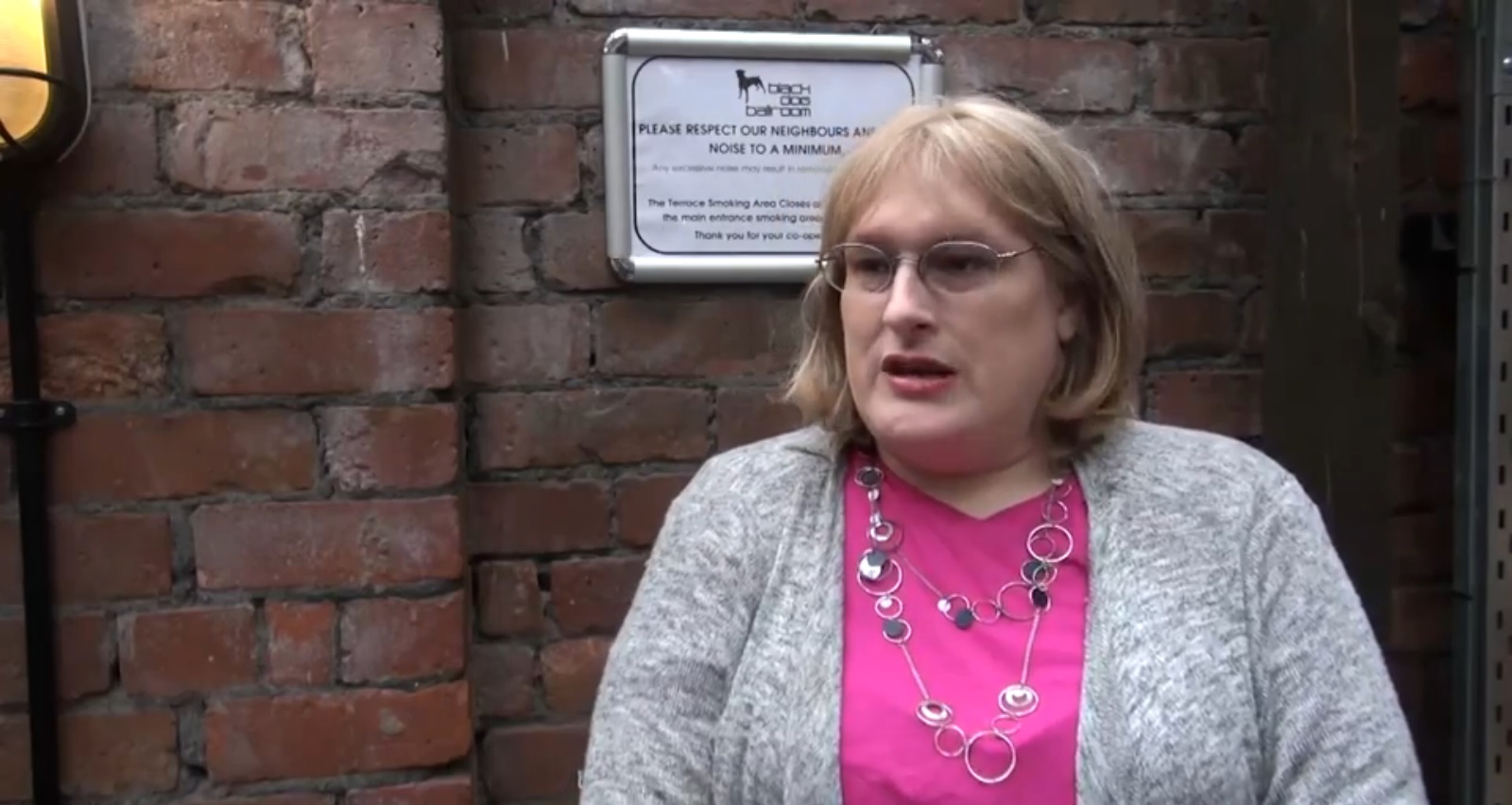
Wallace, a Scottish actress, made history in 2015 when she became the first transgender person to play a regular transgender character in a British Soap opera when she earned the role of Sally St. Claire in Hollyoaks. She’s also appeared in Shameless and Dream On, and is a composer.
Arisce Wanzer
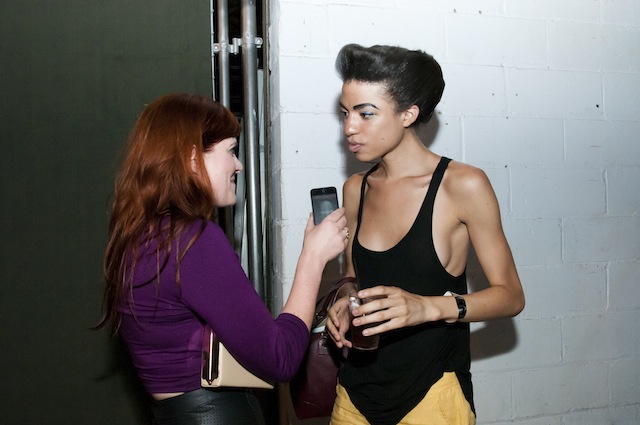
Autostraddle’s Lizz interviewing Wanzer at New York Fashion Week
A model best known for being featured on the Oxygen Reality TV show Strut, she also played Kristal in the TV series Cheetah in August as well as roles in several other Film/TV projects.
Bethany Black
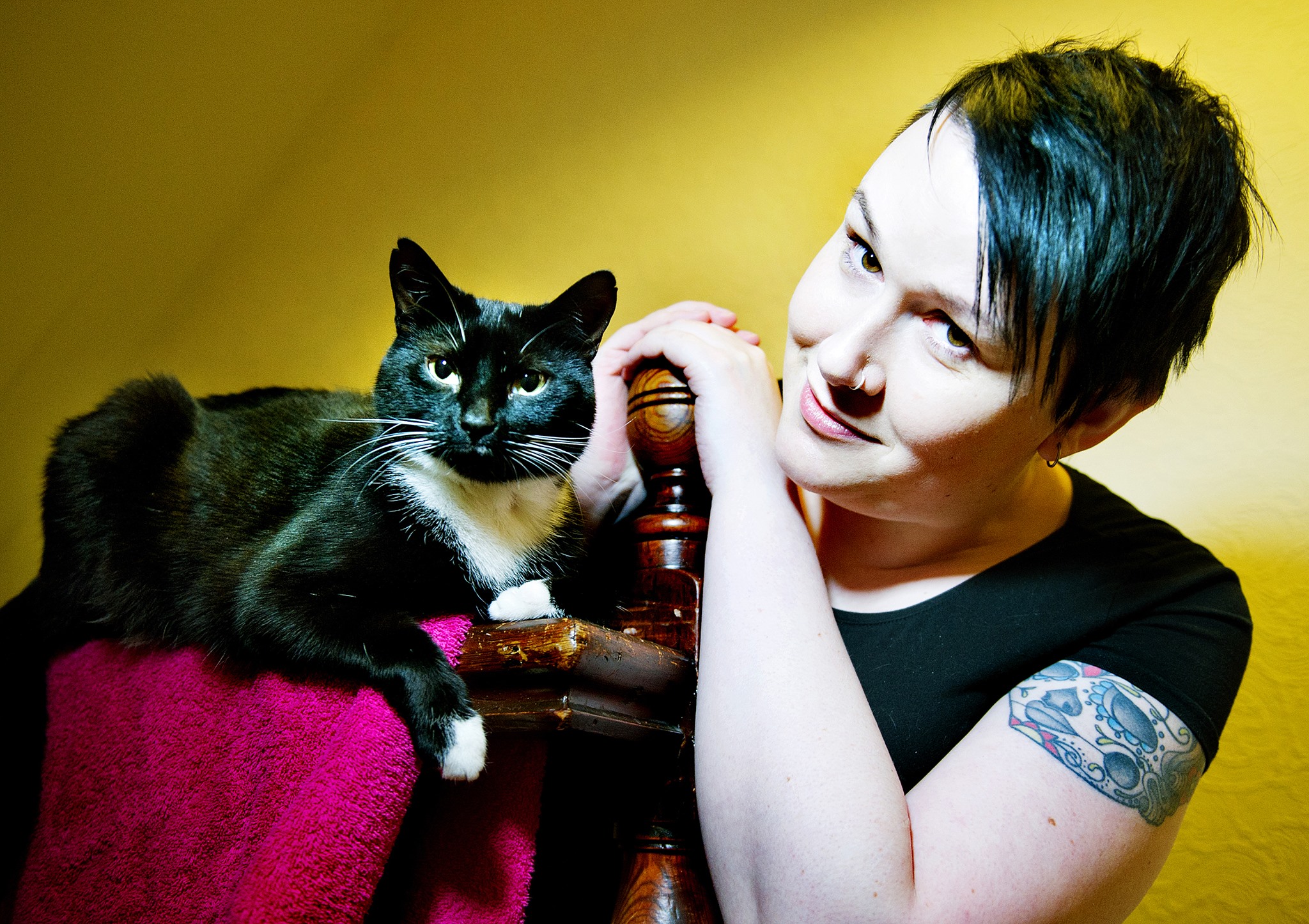
This British stand-up comedian played Helen in the TV series Cucumber/Banana and appeared in a 2015 episode of Doctor Who. She also played herself in the TV series documentary short Tofu. She describes herself as “Britain’s only goth, lesbian, transsexual comedian.”
Bianca Leigh
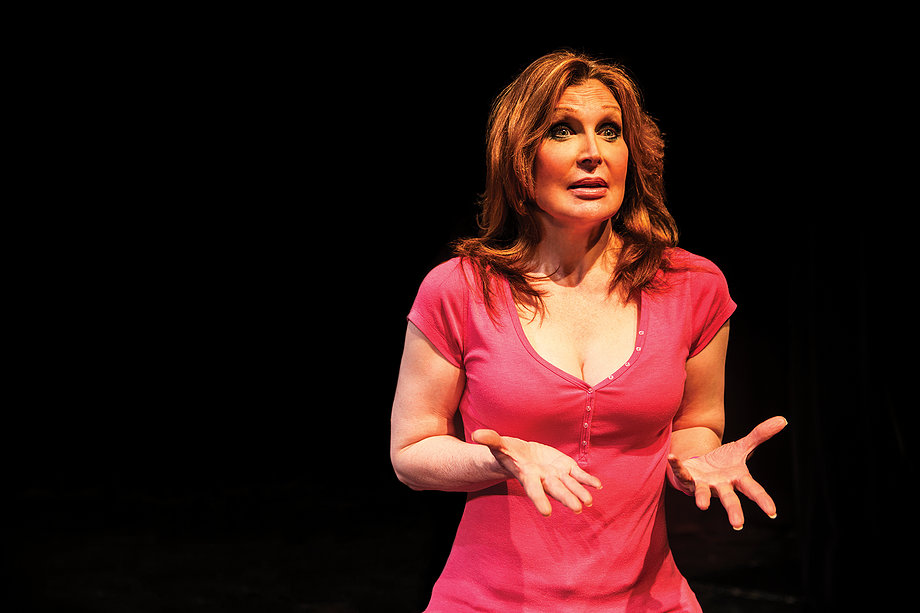
Bianca Leigh in “Trans Scripts”
Leigh made her film debut in 2015’s Transamerica, played Karma Johnstone in Hurricane Bianca, and had a guest spot on Law & Order: Special Victims Unit. She appeared onstage in the U.S. premiere of “Trans Scripts” this past January.
Bianca Von Krieg
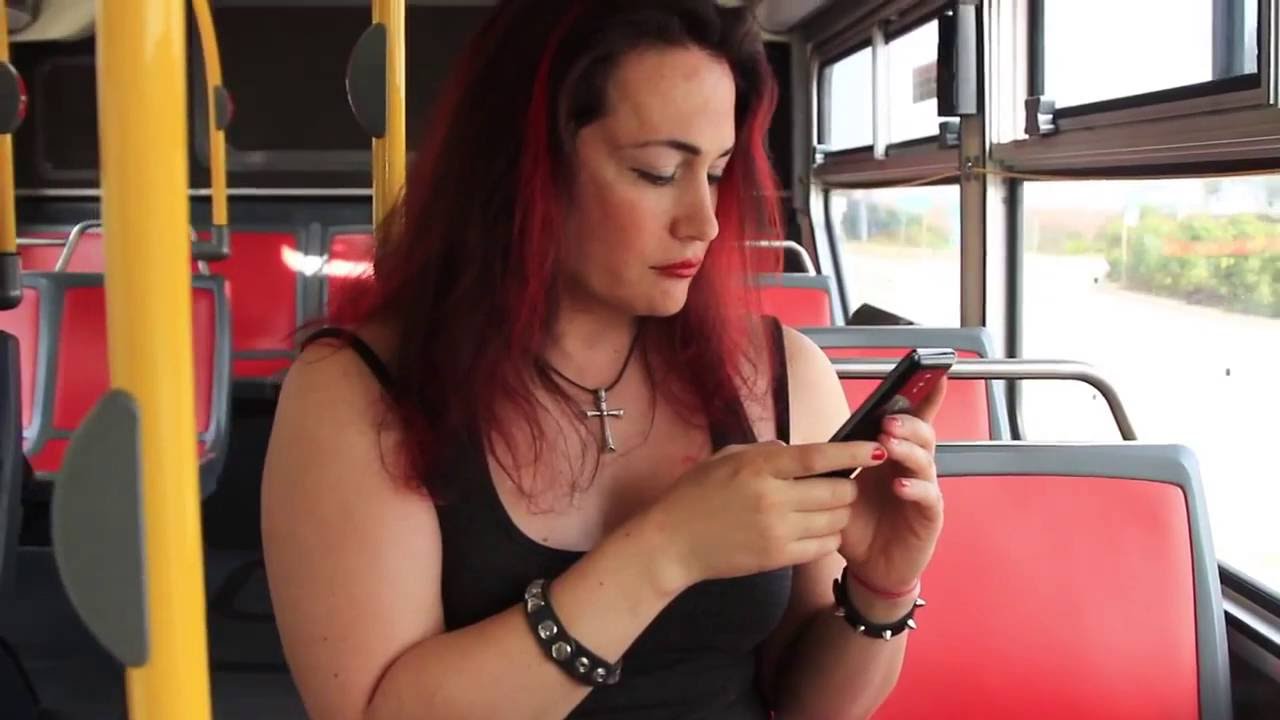
Bianca Von Krieg in the “Faces of Muni” Campaign
Bianca Von Krieg is an actual baroness with degrees from Stanford and MIT who has appeared in 2 Broke Girls, Murder in the First, Looking, Glee and several independent films.
Calpernia Adams
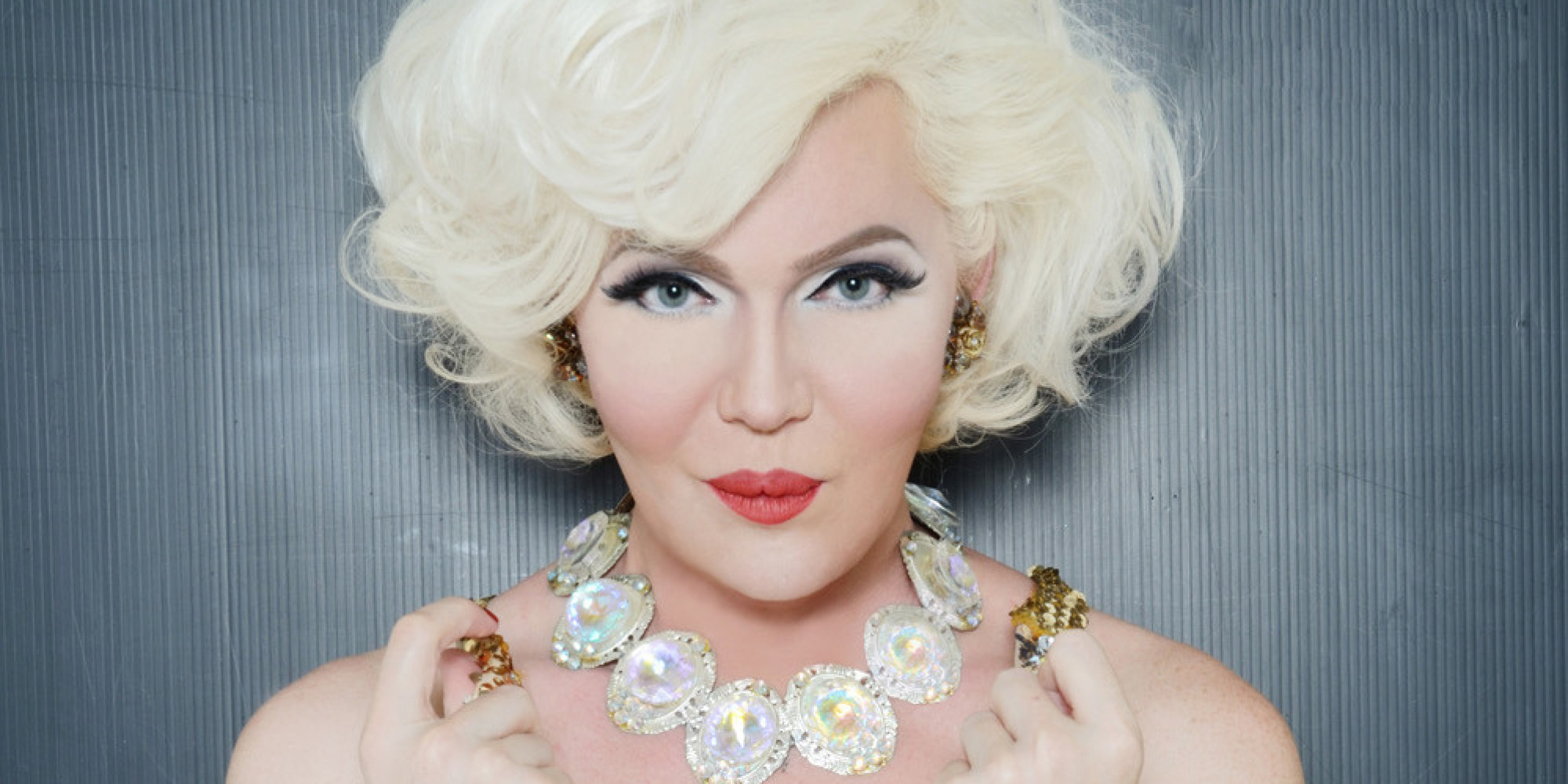
Actress, producer, editor, writer, director and activist Calpernia Adams has been in a lot of shorts and TV shows, like Hey Qween, In the Moment, Transproofed and Transamerica. Her production company, Deep Stealth, creates educational and entertainment material around gender-identification issues. She has also performed in all-transgender and mixed-status productions of The Vagina Monologues and was the lady-looking-for-love in the 2008 Logo TV series Transamerican Love Story.
Candis Cayne
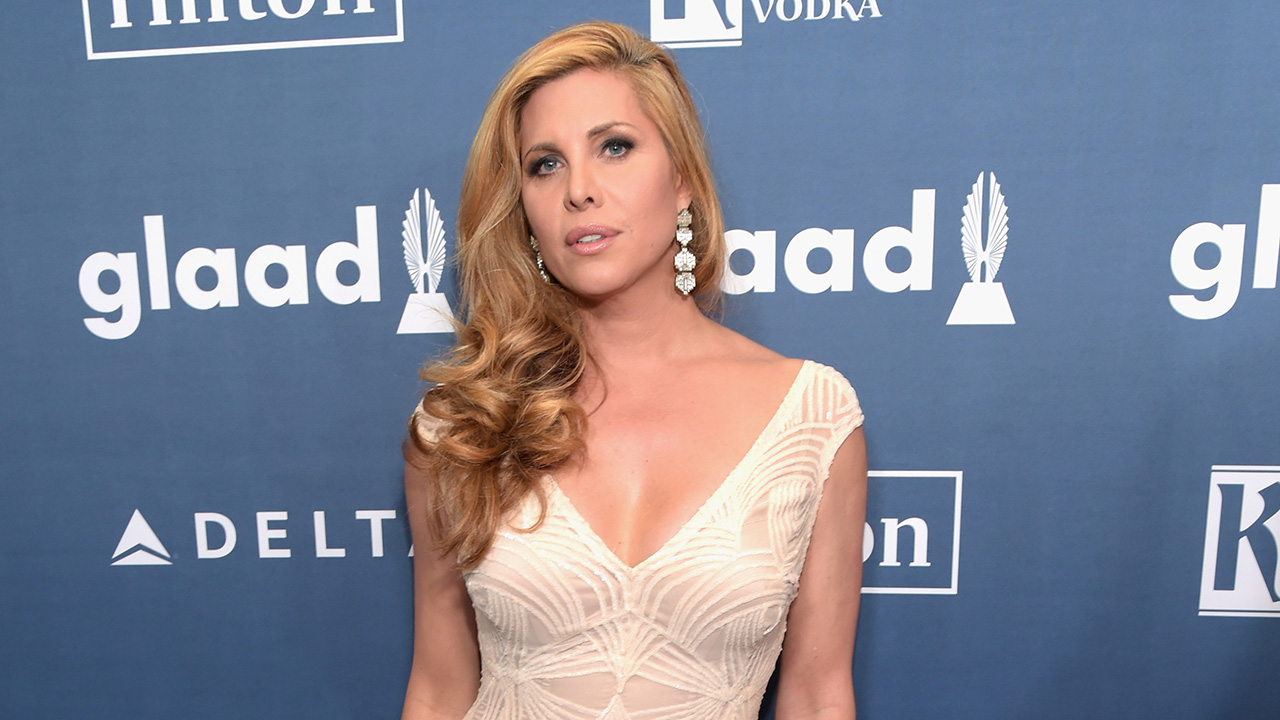
Actress Candis Cayne attends the 27th Annual GLAAD Media Awards
Cayne is one of the first actresses I ever interviewed on a red carpet and she was so incredible and nice and I will always love her for that. Also! In addition to being cool, she played Carmelita Rainer on the great but short-lived TV series Dirty Sexy Money, Alexis Stone on Nip/Tuck, Ms.Hudson on Elementary, and has shown up in a dozen or so other TV shows and various films AND also some reality TV shows, like I Am Cait, RuPaul’s Drag Race and Hey Qween.
Carlie Guevara
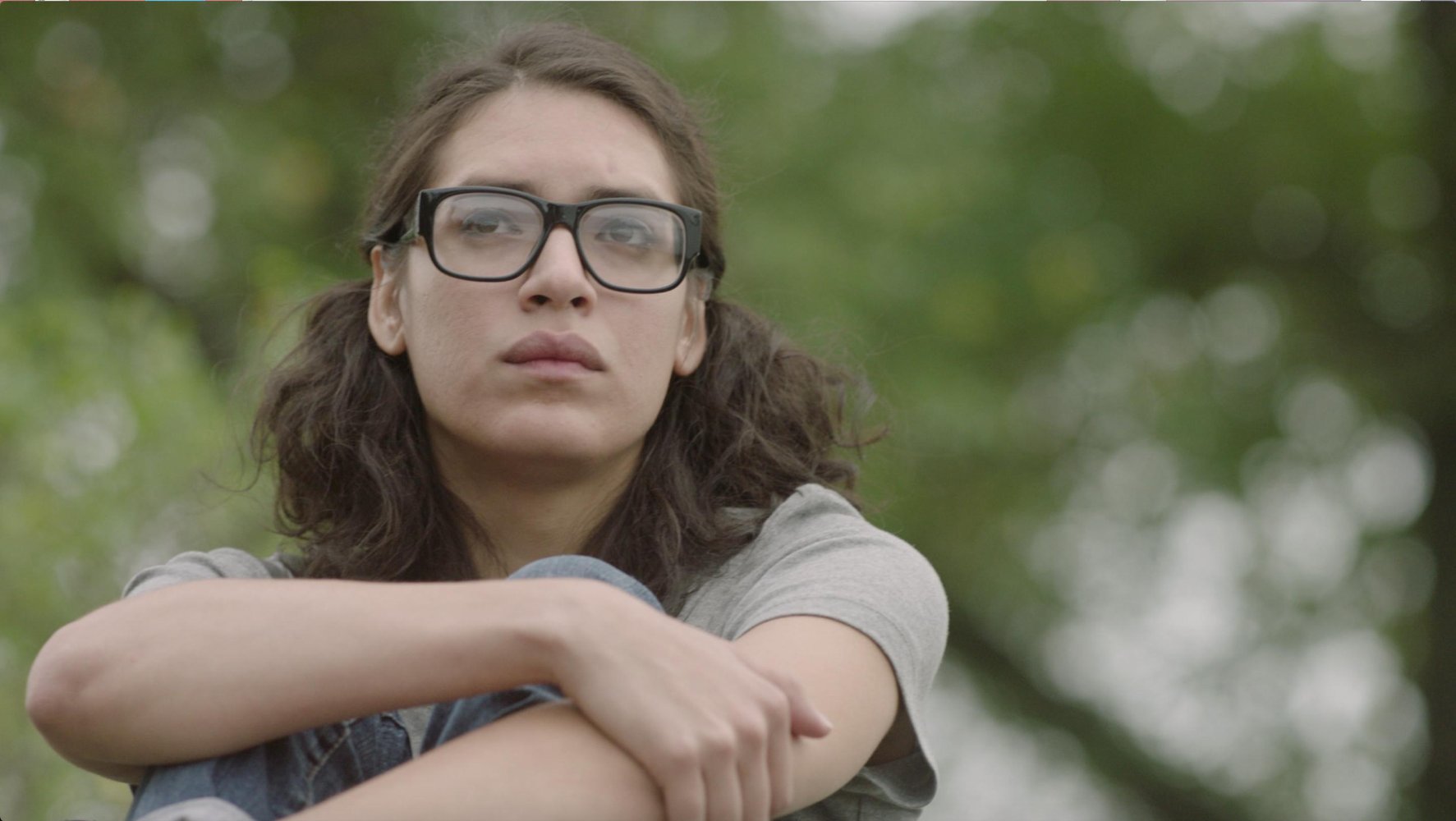
Carlie is making her film debut in the 2018 movie “The Garden Left Behind,” in which she plays Tina, an undocumented woman who emigrated from Mexico with her grandmother as a child and now want to stay and transition, while her grandmother longs to return. Carlie is also an artist/photographer.
Carmen Carrera
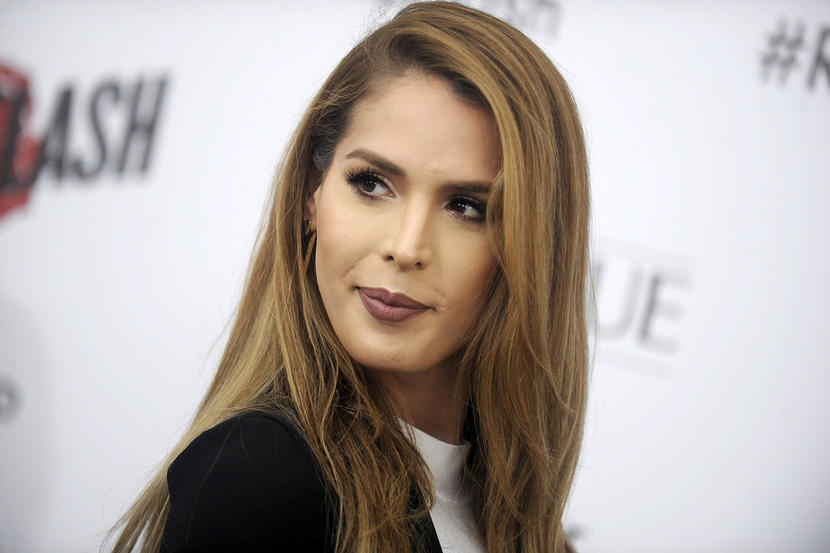
(Photo by: Dennis Van Tine/Geisler-Fotopres/picture-alliance/dpa/AP Images)
Model Carmen Carrera had a three-episode turn on The Bold and the Beautiful and appeared in the show Jane the Virgin as well as playing herself in RuPaul’s Drag Race, Cake Boss and Couples Therapy.
Caroline Cossey
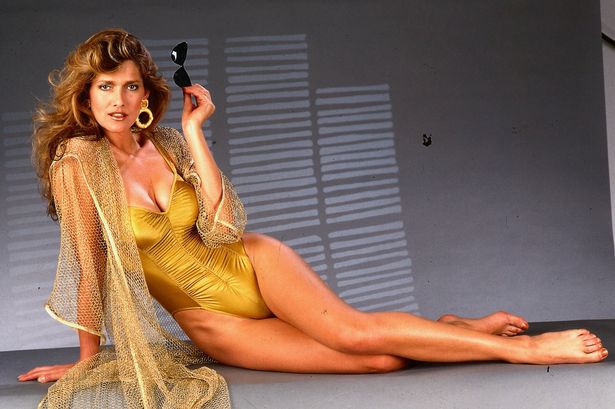
Cossey would’ve had a very different career if she’d been born in a different era — but, alas, her on-screen debut in the 1981 James Bond film For Your Eyes Only led Caroline, a very popular model who appeared on the cover of Vogue, to be outed as transgender. The ensuing press hounding thrust her into a deep depression. She appeared in the Duran Duran music video “Rio” in 1992, and in Power Station’s “Some Like it Hot” in 1986, and also was the first transgender woman to appear in Playboy. In the early ’90s she appeared on Donahue, The Joan Rivers Show, The Howard Stern Show and The Geraldo Rivera Show, and was in 2016’s The Trans List.
CeCe Suazo

CeCe appeared plays including the Off-Broadway production of “Incongruence” at the New York Theater Workshop and “Street Children” at the Vertigo Theater Company. She directed “A Month of Sundays” Off-Broadway and played the Senator’s Mistress on Adult Swim’s “Your Pretty Face Is Going To Hell.” She got her start as Cinna in the Los Angeles Shakespeare Company’s production of Julius Caesar.
Clair Farley
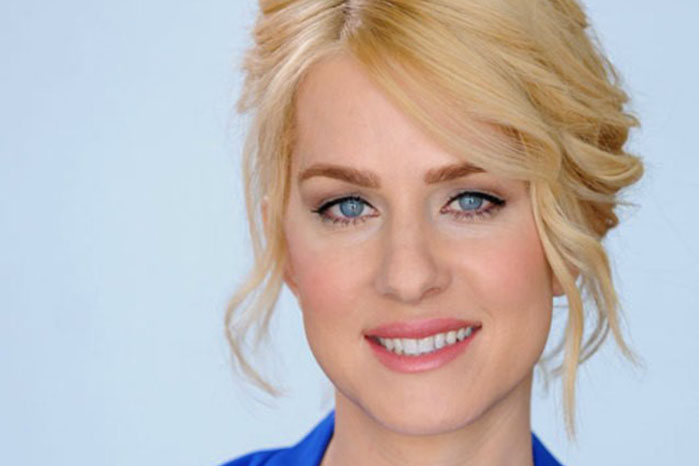
Farley is a community activist who has told her story in the documentaries Red Without Blue and American Transgender, as well as popping up in scripted shows Sense8 and When We Rise. Her husband, Jim, is also transgender.
Dina Nina Martinez
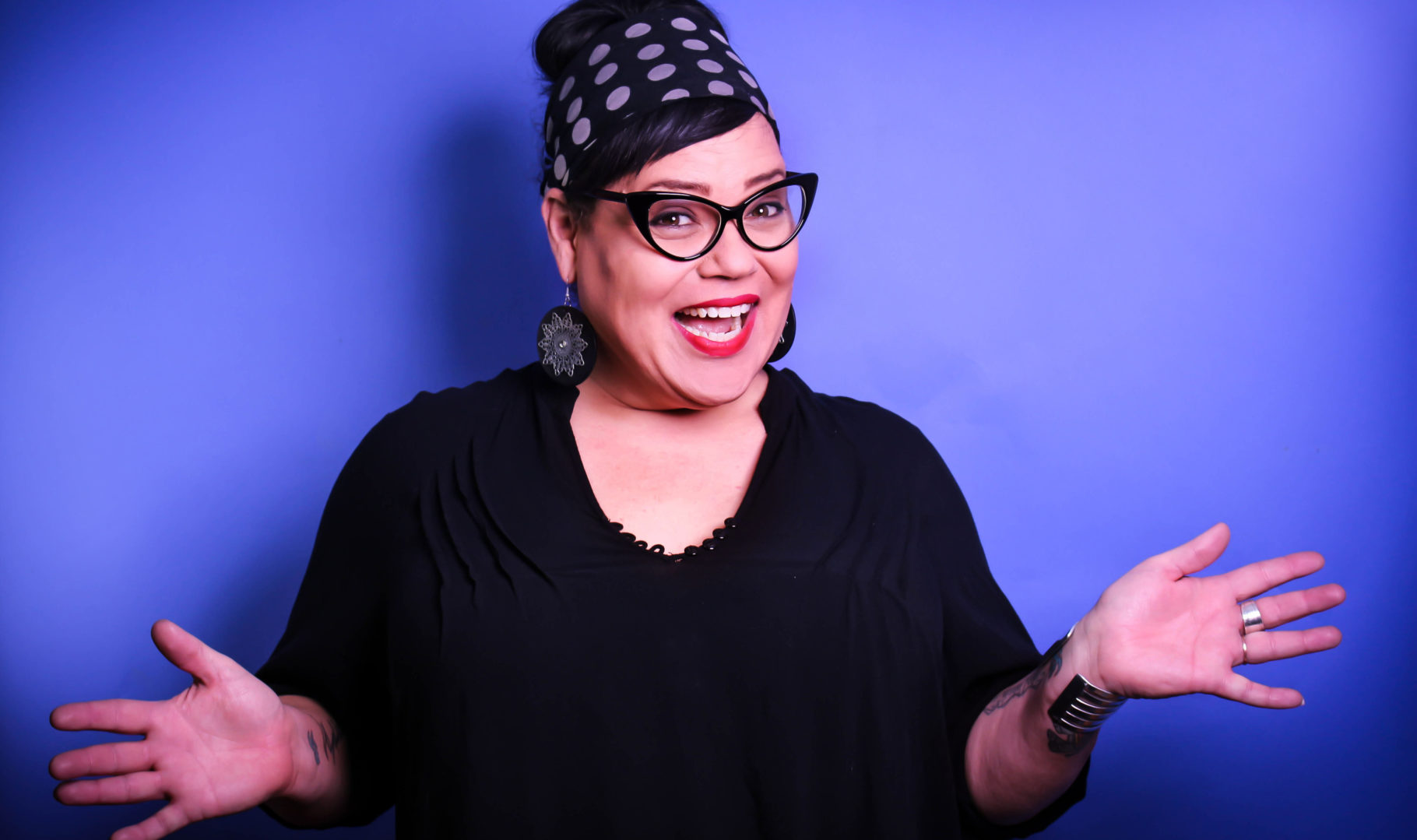
Dina Nina Martinez is a comedian who plated Delilah James in The Misadventures of Delilah James and a character named Dina Martinez in The Cavanaughs. She’s done stand-up at venues including LA’s The Comedy Store, the Madison queer comedy show Alphabet Soup, LA Pride, and The Chicago Women’s Funny Festival.
Eden Lane

As America’s first out transgender television reporter, Lane has hosted/produced/reported segments and shows for outlets including PBS affiliates, CNN Tonight, ET and Huffington Post. Lane got her start in the theater, and returned to the stage this year for a production of “Trans Scripts.”
Eve Lindley
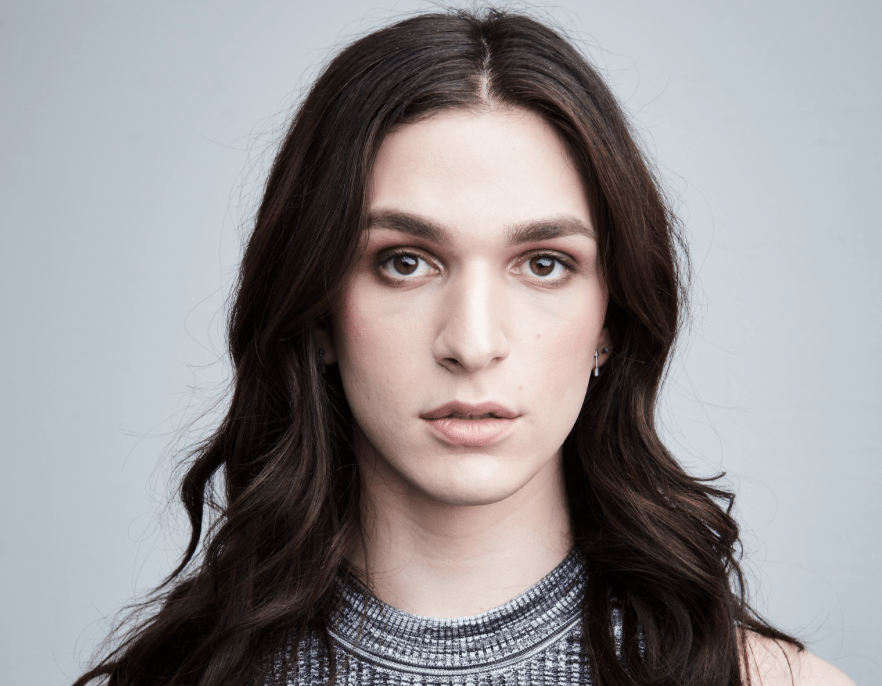
Eve Lindley at The Tribeca Film Festival via Teen Vogue
Eve Lindley plays Sylvia Rivera in the short film Happy Birthday, Marsha! and had recurring roles as Frida in the TV series Outsiders, Hot Carla in Mr. Robot and trans female character Peter Pam in the film “All We Had” with Katie Holmes.
Erika Ervin
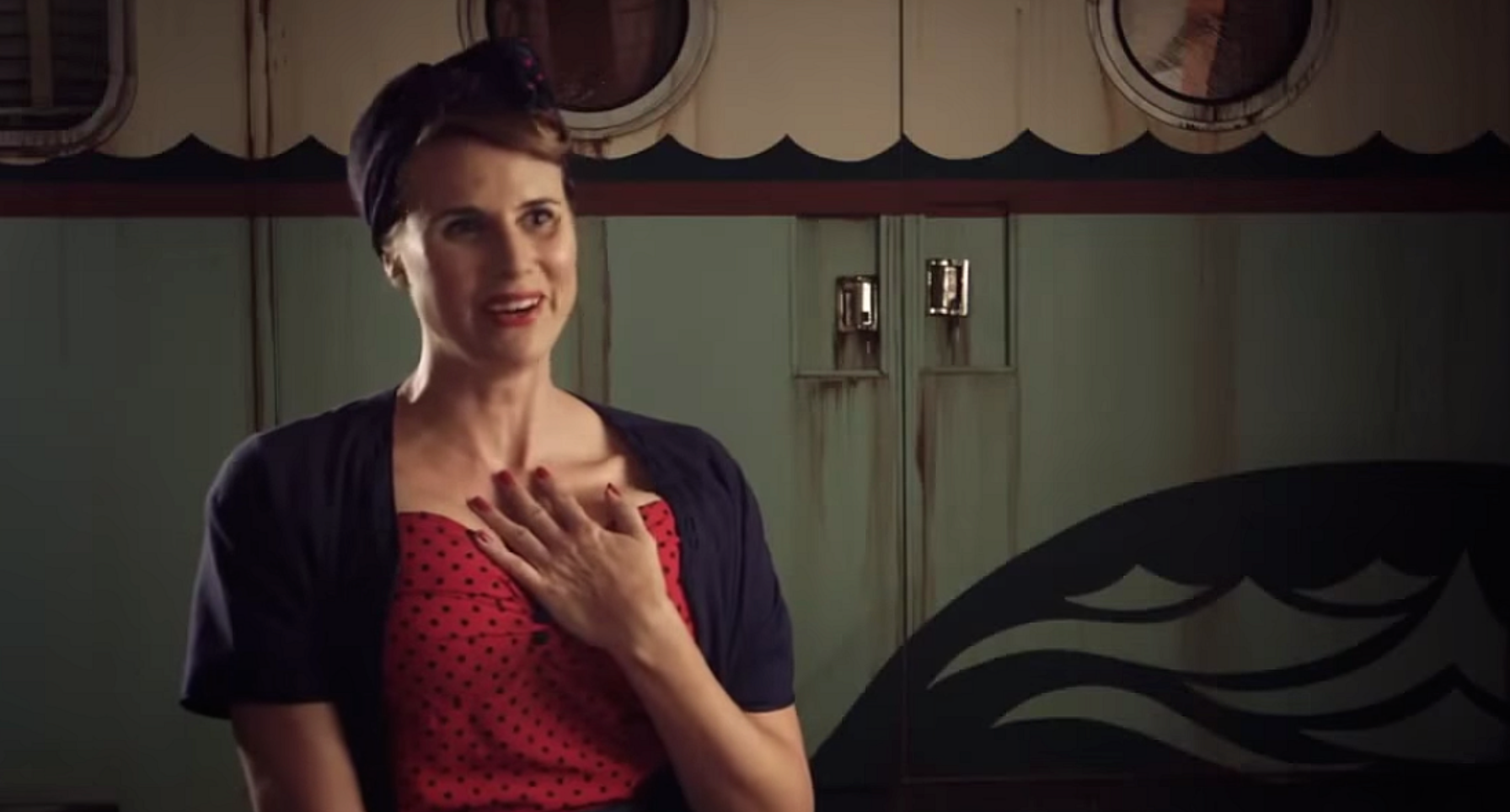
Erika Ervin in “American Horror Story”
Ervin, who often goes by the name “Amazon Eve,” earned a spot in the Guinness Book of World Records in 2011 for being the world’s tallest model (she’s 6’8!). She’s appeared in the television shows Hemlock Grove and American Horror Story: Freak Show.
Gigi Gorgeous
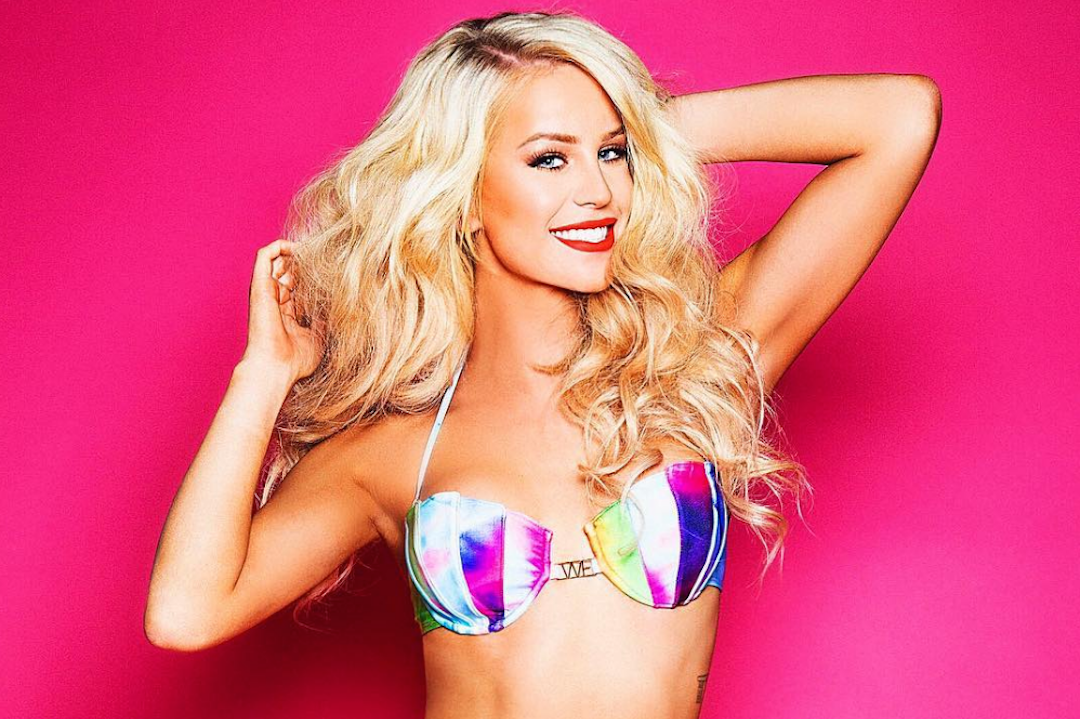
Gigi Lazzarato tends to play herself when she’s onscreen, which is a lot — like in her feature length documentary, This is Everything: Gigi Gorgeous. But she’s also appeared on the YouTube TV series Me and My Grandma and Nightcap.
Hari Nef
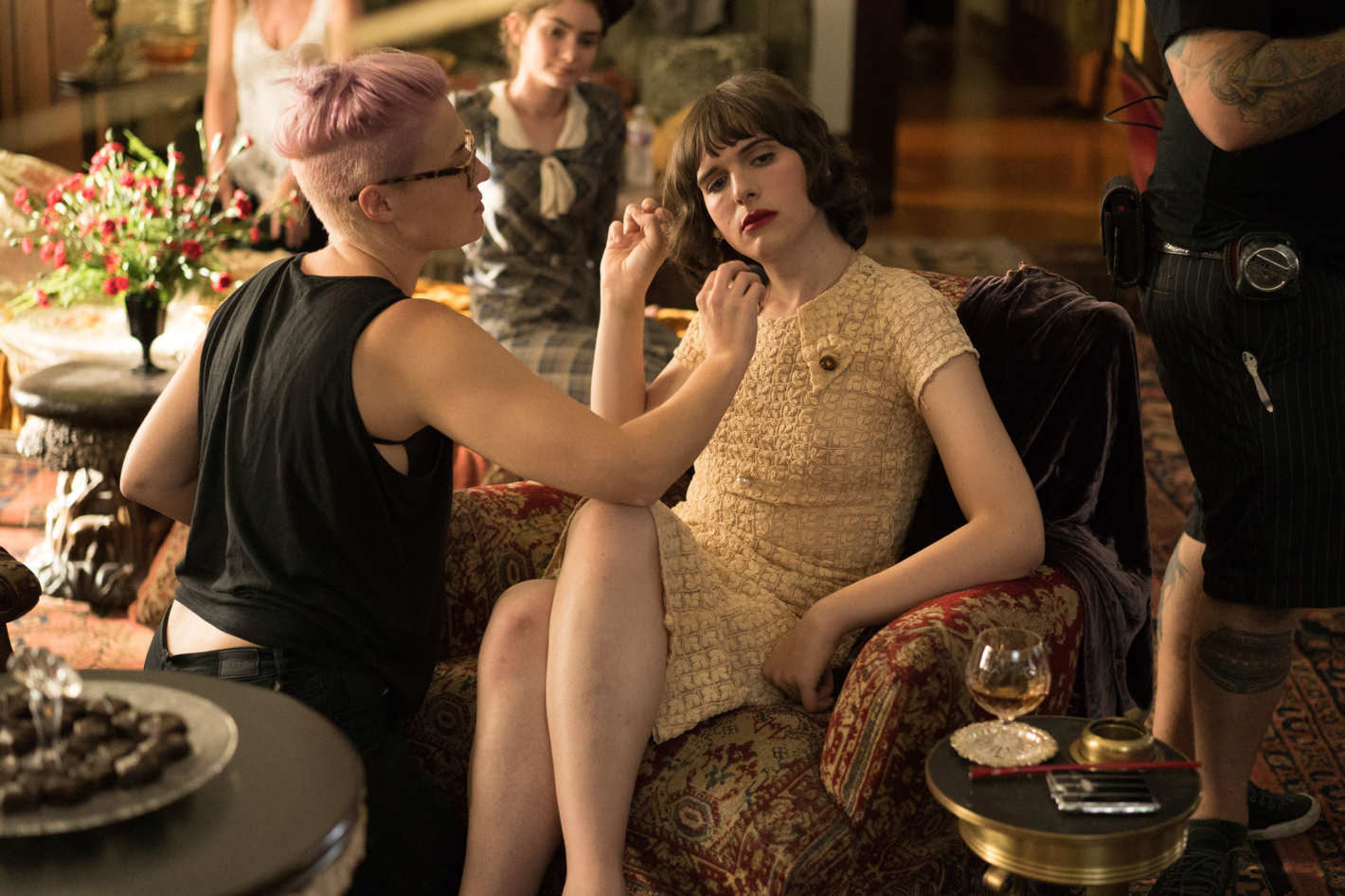
Hari Nef in “Transparent”
Nef’s career as an actress and model has really taken off the past few years. She played Gittel in Transparent and Bex in Assassination Nation, was the first openly transgender model signed to IMG Models, walked the New York Fashion Week runway, appeared on the cover of Elle Magazine, in commercials for L’Oreal Paris True Match and is a spokesmodel for Everlane’s 100% Human Campaign.
Harmony Santana
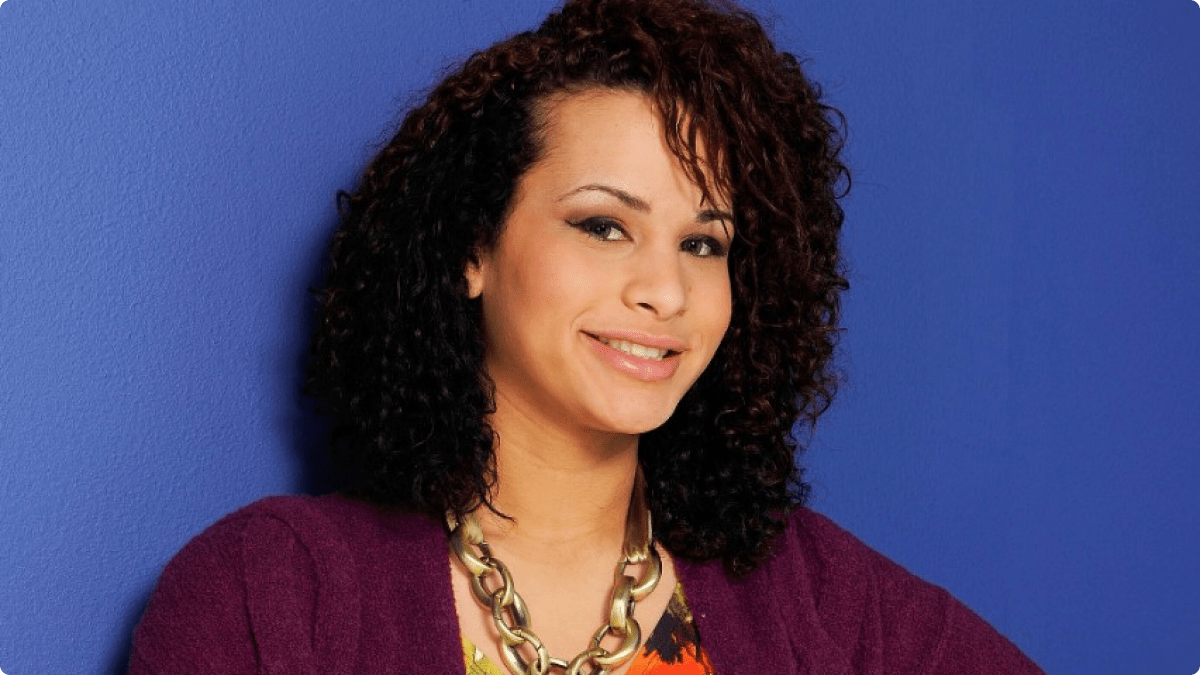
In 2011, Santana became the first openly transgender actress to be nominated for a major film acting award in the United States when she appeared in Gun Hill Road. She’s also appeared in two Eating Out films and the TV series Futurestates as well as Transparent.
Isley Reust
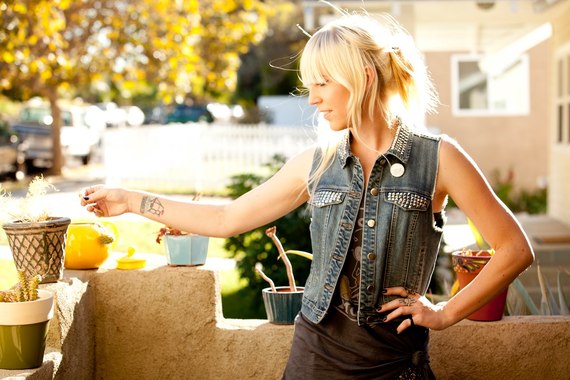
photo by Joseph Viles for The Huffington Post
Reust, a musician, actress & producer, appeared in Glee‘s transgender choir, and also in the TV shows Chasing Life and Faking It and movies like And Then There Was Eve and Mothers and Daughters. She was a composer for two episodes of Her Story and her band is called Spectacular Spectacular!
Ivory Aquino
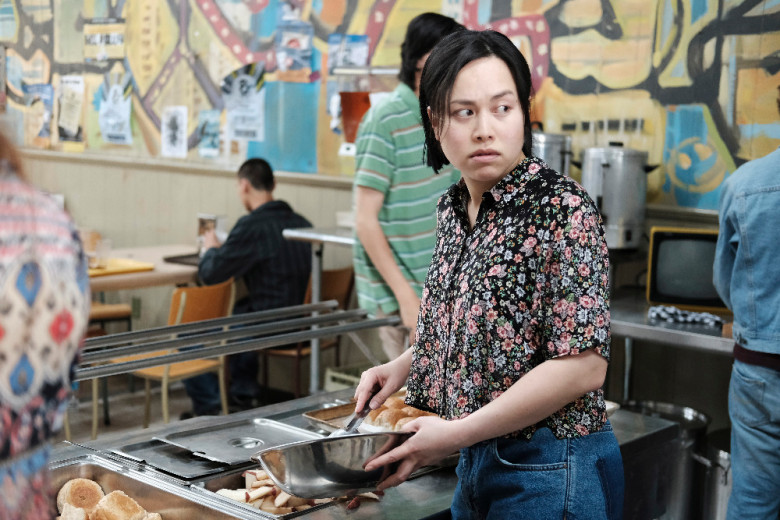
Ivory Aquino in “When We Rise”
Prior to her role as legendary transgender activist Cecelia Chung in the ABC miniseries When We Rise, Aquino spent ten years in theater. She came out as trans before her network television debut on the Dustin Lance Black miniseries.
Jamie Clayton
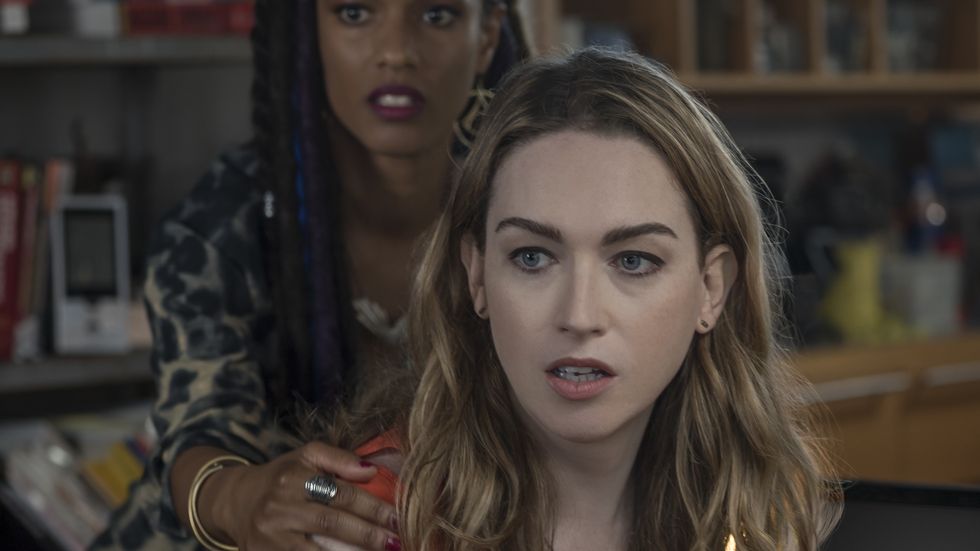
Jamie Clayton in “Sense8”
Before playing lead ensemble character on the 2-season Netflix show Sense8, model/actress Clayton appeared in The Neon Demon, Hung and Dirty Work. She got her start on a 2010 Vh1 Reality Show, Transform Me, which was co-hosted by Laverne Cox and Nina Poon.
Jazzmun Nichcala Crayton
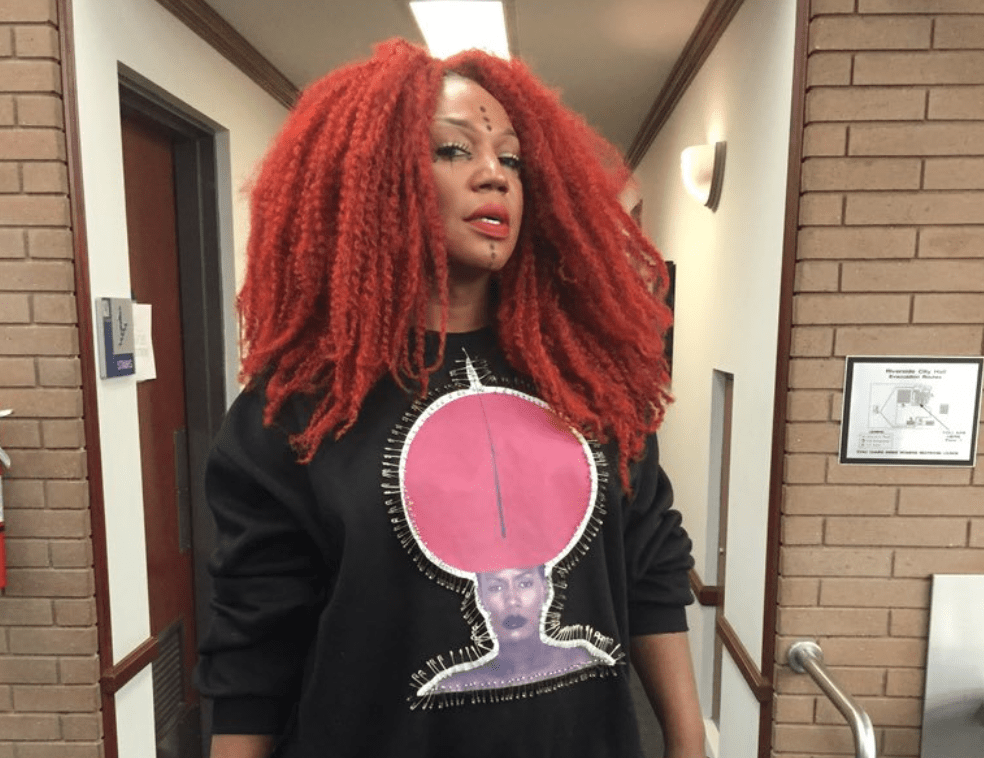
Jazzmun’s career began with her appearance on the 1984 variety show Putitn’ on the Hits. From there, she performed onstage all over Los Angeles, playing her stage character Jazzmun, Whitney Houston and Diana Ross, eventually catching the eye of Gloria Estefan, who cast her in the “Everlasting Love” music video. RuPaul did the same. Her television resume includes Desperate Houswives, CSI: NY, Nip/Tuck, The Shield, ER, The Closer, NYPD Blue, Sons of Anarchy and Gilmore Girls. She played Bobbi Jean Baker in When We Rise.
Jen Richards
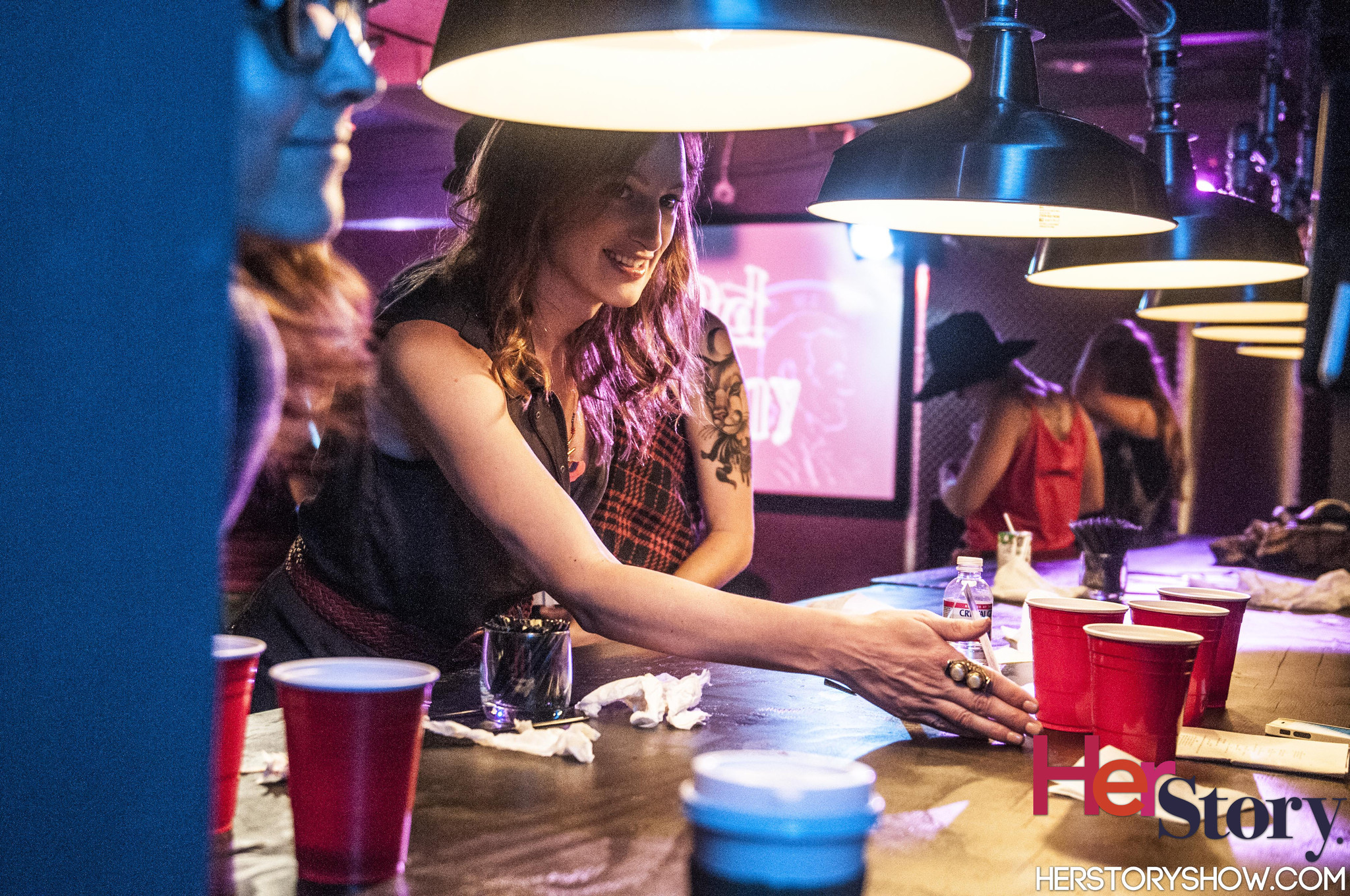
Jen Richards in “Her Story”
Richards is the writer and star of the trans mini-series Her Story, and has also appeared on Nashville and Doubt. The advocate and consultant also appeared as herself on shows like I Am Cait and AOL’s True Trans with Laura Jane Grace, and writes for NewNowNext. She is the writer and creator of We Happy Trans.
Jessica Crockett
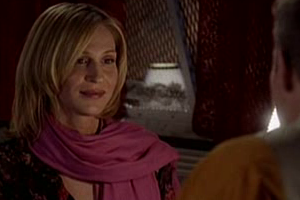
Crockett was the first-ever trans actress to play a trans woman on American television when she played a lesbian who went on one date with Original Cindy on an episode of Dark Angel.
Kitana Kiki Rodriguez
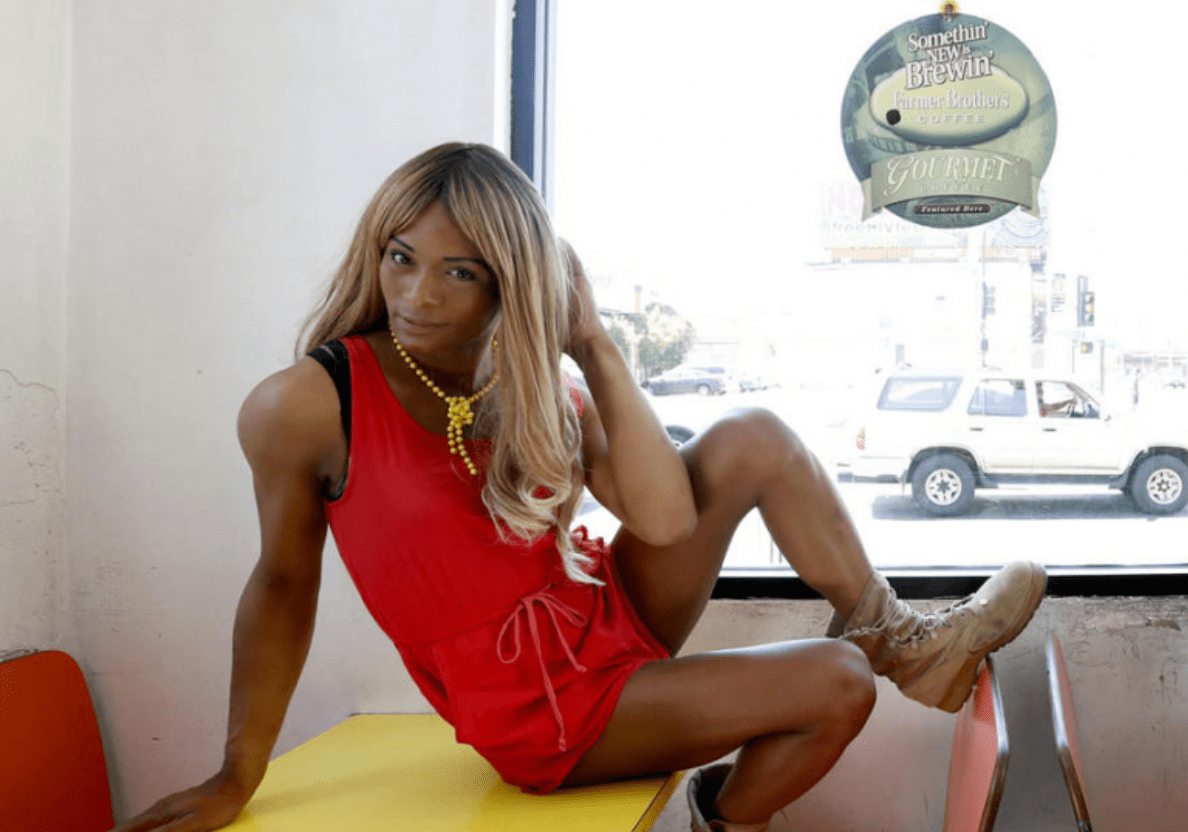
Rodriguez played Cin-dee in the acclaimed independent film Tangerine.
Kita Updike
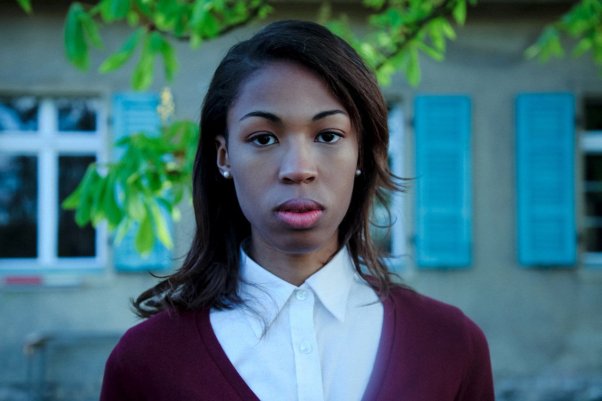
Updike, an accomplished model, will make her film debut this year in the Bruce LaBruce indie The Misandrists, and has appeared onstage in Ireland as well as in her home state of Indiana.
Kristen Parker Lovell
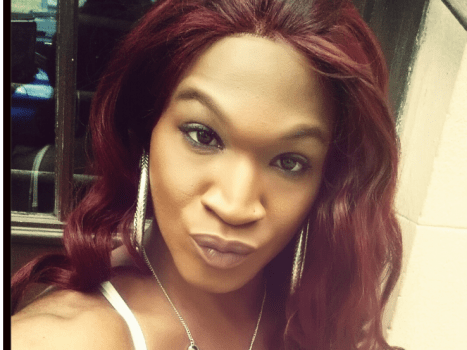
Lovell is an activist, artist, producer and actress known for her roles in the upcoming film The Garden Left Behind and her appearance in Happy Birthday Marsha! She was honored in the 2015 Trans List for her vigorous work carrying on Sylvia Rivera’s legacy by supporting transient young people. In 2011, she produced a documentary about trans representation in the media.
Lady Dane Figueroa Edidi
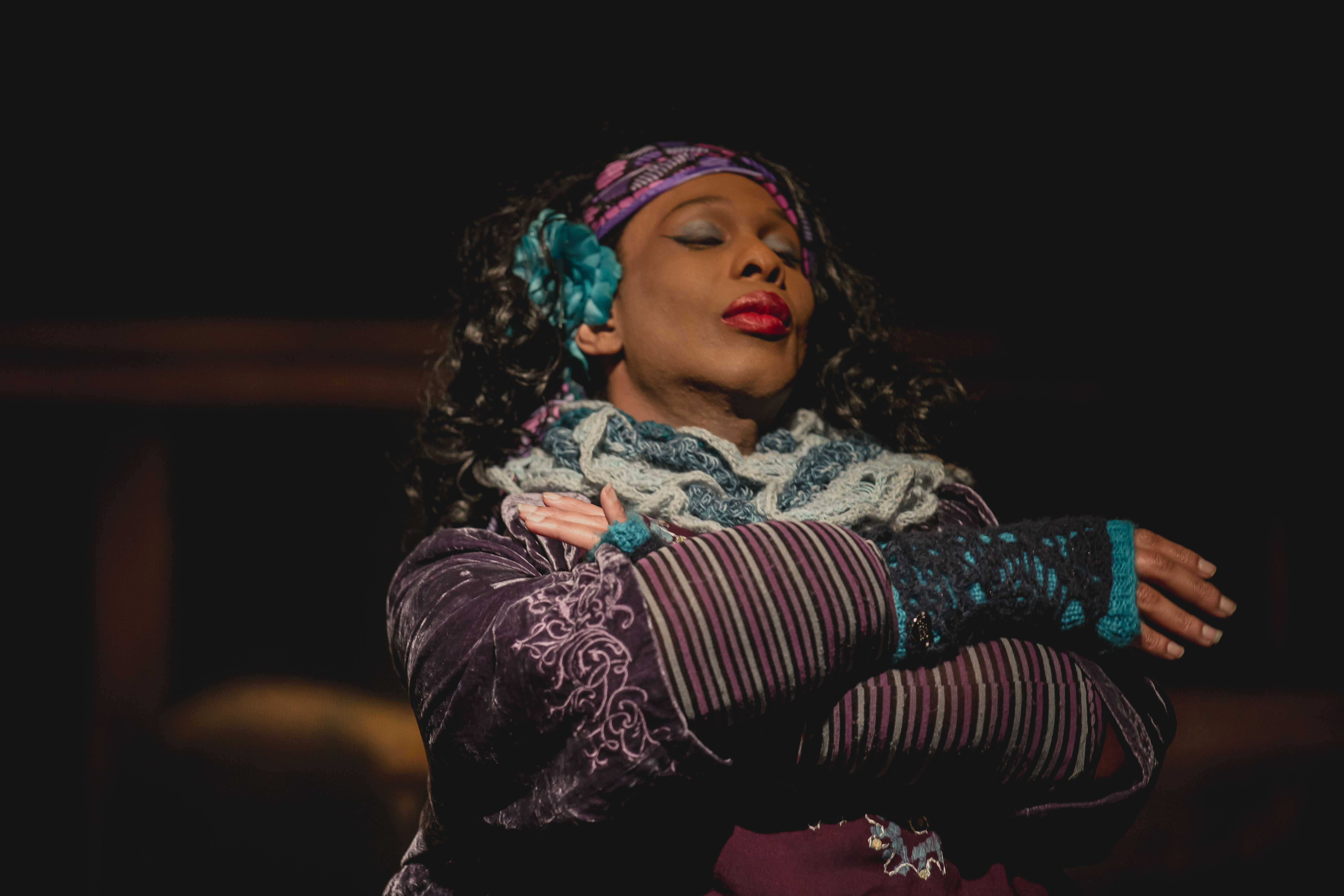
Lady Dane Figueroa Edidi in ‘Last of Wyos.’ Photo by K-Town Studio via DC Metro Arts
Lady Dane is an actor, singer, performance artist, dancer and writer who has been putting together her own cabaret shows since she was a teenager and debuted at Don’t Tell Mamas in 2011. She’s worked for a number of theater troupes and starred in her one-woman show “Klytmnestra” at the SpookyAction Theater. In 2015, she became the first Trans playwright to have her work showcased in the Theater Alliance’s Hot House New Play Reading Series.
Laverne Cox
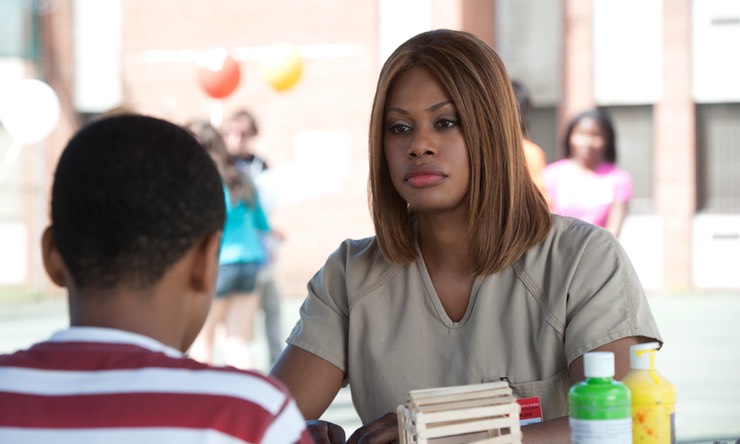
Laverne Cox plays Sophia Bursett on the Netflix series Orange is the New Black and was a series regular on Doubt, a short-lived legal drama. She’s also guested on numerous TV programs, including Bored to Death, Law & Order, Law & Order:Special Victims Unit, Faking It and The Girlfriend’s Guide to Divorce. She starred as Dr. Frank-n-Further on The Rocky Horror Picture Show Live! and had prominent roles in independent films like Grandma (starring Lily Tomlin) and Musical Chairs.
Michelle Hendley
Hendly was a cosmetology student with her own YouTube channel when she was recruited to star as a bisexual trans woman in the 2014 romantic comedy Boy Meets Girl. In 2016, she appeared in an episode of Crazy Ex-Girlfriend.
Mizz June / Julienne Brown

Mizz June is a musician and actress who has appeared in All My Children and the new pilot Vin & June. She recently starred in the The Movement Theater Company’s production of “And She Would Stand Like This.”
Mya Taylor
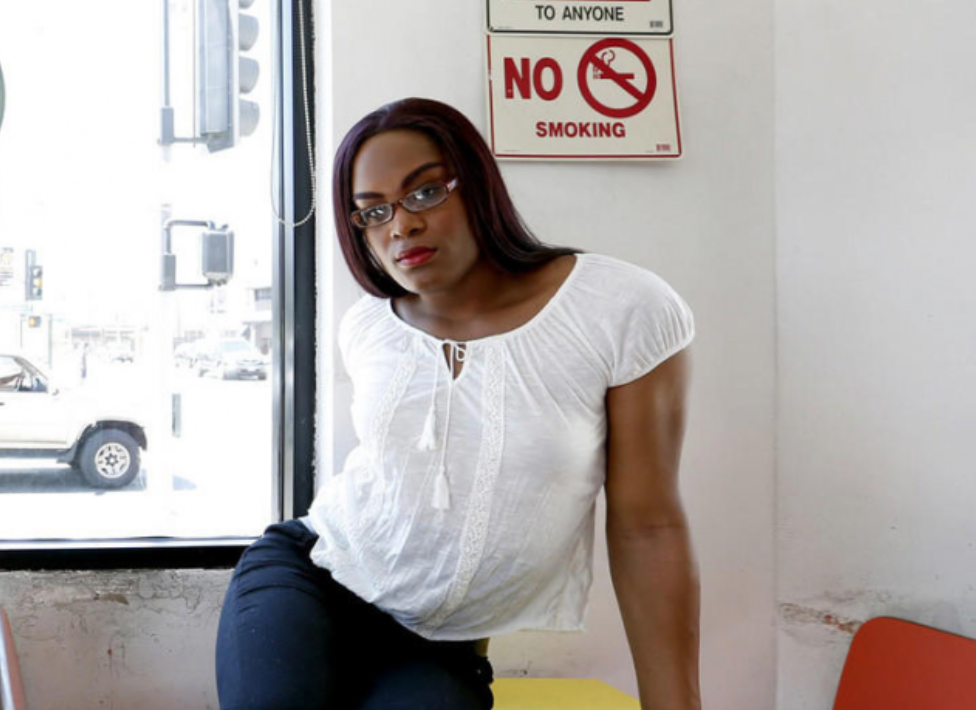
Mya Taylor’s only film credit prior to co-starring in Tangerine was a spot on the TV series Hollywood Wasteland, but now she’s racking ’em up! She has since appeared as Diane in Diane from the Moon and Marsha P Johnson in Happy Birthday, Marsha! She also stars in Myra, a film about a transgender sex worker in an unwanted love triangle, set to debut in 2018.
Nicole Amber Maines
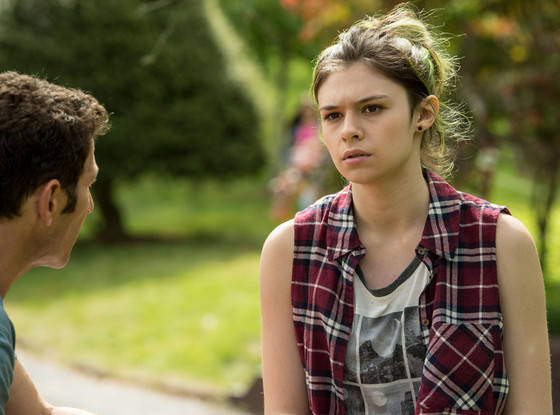
Nicole in “Royal Pains”
Mains did a guest spot on Royal Pains in one of the least problematic transgender television episodes of all time. She also was “Susan Doe” in Doe v. Clenchy, a landmark case in which her parents sued her school district for her right to use a female restroom. She’s currently in art school in Maine.
Marlo Bernier

Marlo Bernier in “Myrna”
Bernier began her acting career before coming out as trans, with roles including Roy Cohn in a Baltimore production of Angels in America and John/James in Love! Valour! Compassion! She’s also guested on shows like Cold Case, Alias, Homicide and Las Vegas. She wrote, produced and starred as Myrna Michaels in the TV Movie Myrna in 2014, and in the America Repertory Theater’s production of “Trans Scripts.”
MJ Rodriguez
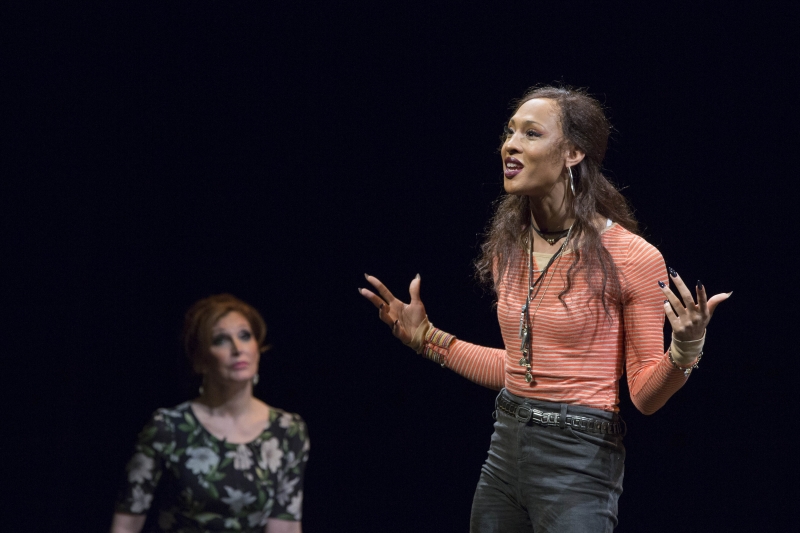
MJ Rodriguez in “Trans Scripts”
Rodriguez played Angel in the 2011 Off-Broadway revival of Rent, of which she told Playbill, “It wasn’t like being a character. I was in character, of course, but I was also living me and telling my story through Angel.” She made her television debut in Nurse Jackie, went on to guest in The Carrie Diaries, [Blank] My Life and Luke Cage and appear onstage in “Trans Scripts.” She was nominated for an acting award at the Tribeca Film Festival for her role as Ebony in “Saturday Church.”
Our Lady J
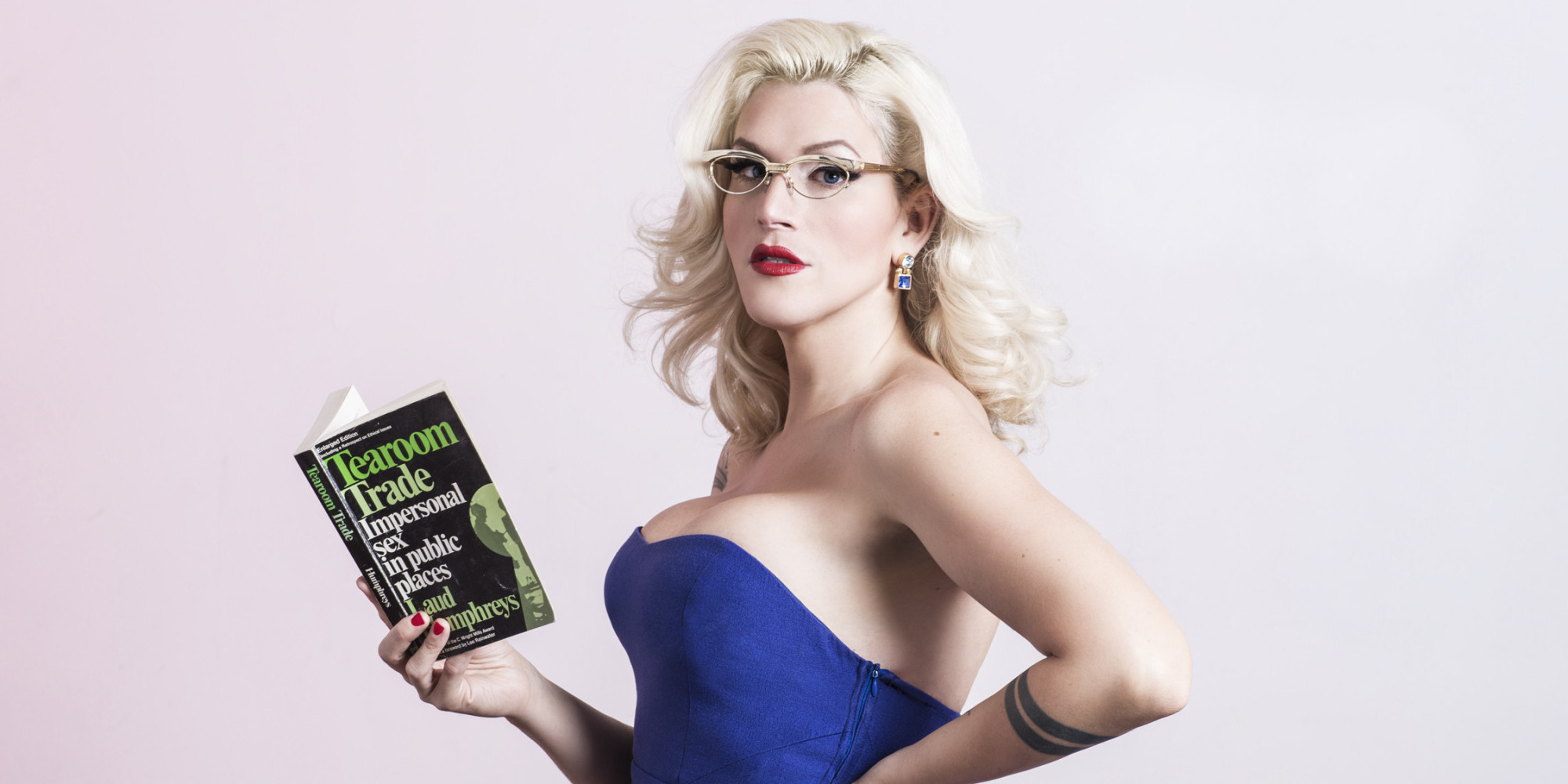
Our Lady J became the first trans woman writing for Transparent, and also appeared in a few episodes in 2015 as “Yorna.” She’s a singer/songwriter who has collaborated with Sia and Lady Gaga and was the first openly trans woman to perform at Carnegie Hall.
Patti Harrison
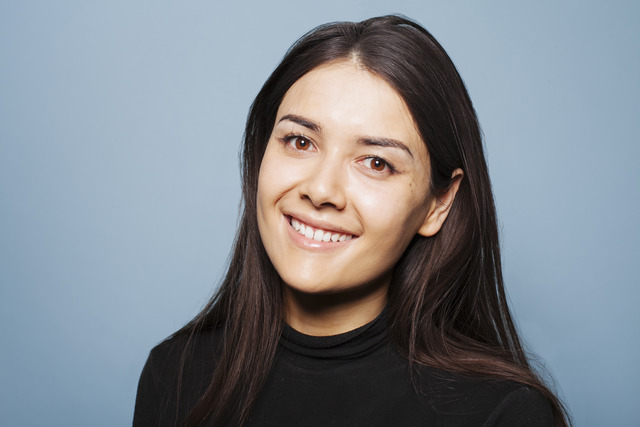
Harrison is a comedian who dropped out of Ohio University and moved to New York to live the dream, where she’s quickly made a name for herself doing live shows and appearing in videos for Seriously TV. She appeared with Patti Harrison on 5 Transgender Tropes That Need To Stop.
Pooya Mohseni

Pooya is an Iranian-American actress who has appeared in a whopping 22 short films, nine TV series and ten movies. The most recognizable credits on her resume were spots on USA’s Falling Water and the CBS series Madam Secretary.
Rachel Crowl
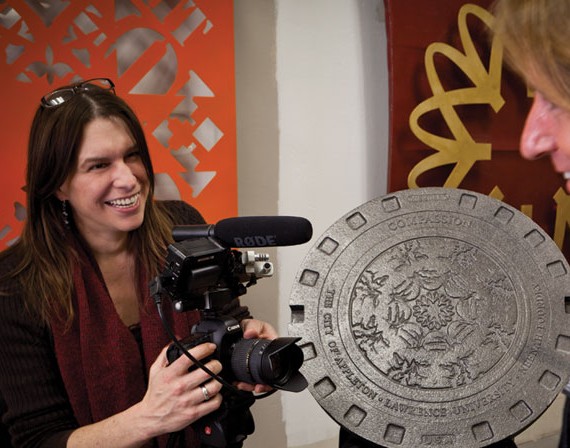
Rachel Crowl serving as Web Content and New Media Coordinator for Lawrence University
Crowl’s career began in the New York Theater scene, where she played Henry in an Off-Broadway production of Henry V. She’s making her screen debut this year in the indie film And Then There Was Eve.
Rain Valdez
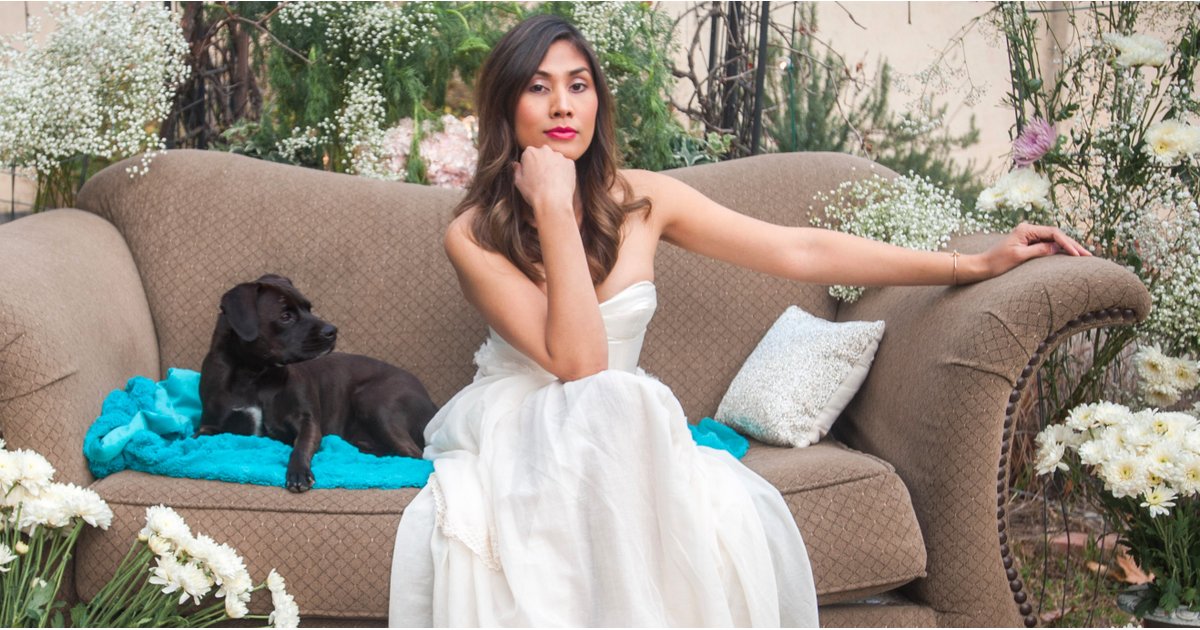
This year, model/editor/voiceover actress Rain Valdez was cast in the recurring role of Coco in Lopez, George Lopez’s TV Land sitcom. She’s also appeared in shorts like Trans-R, Ryans and Over the Counter. She has worked on the set of Transparent as the Director’s Assistant and Coordinating Producer since 2015.
Rebecca Root
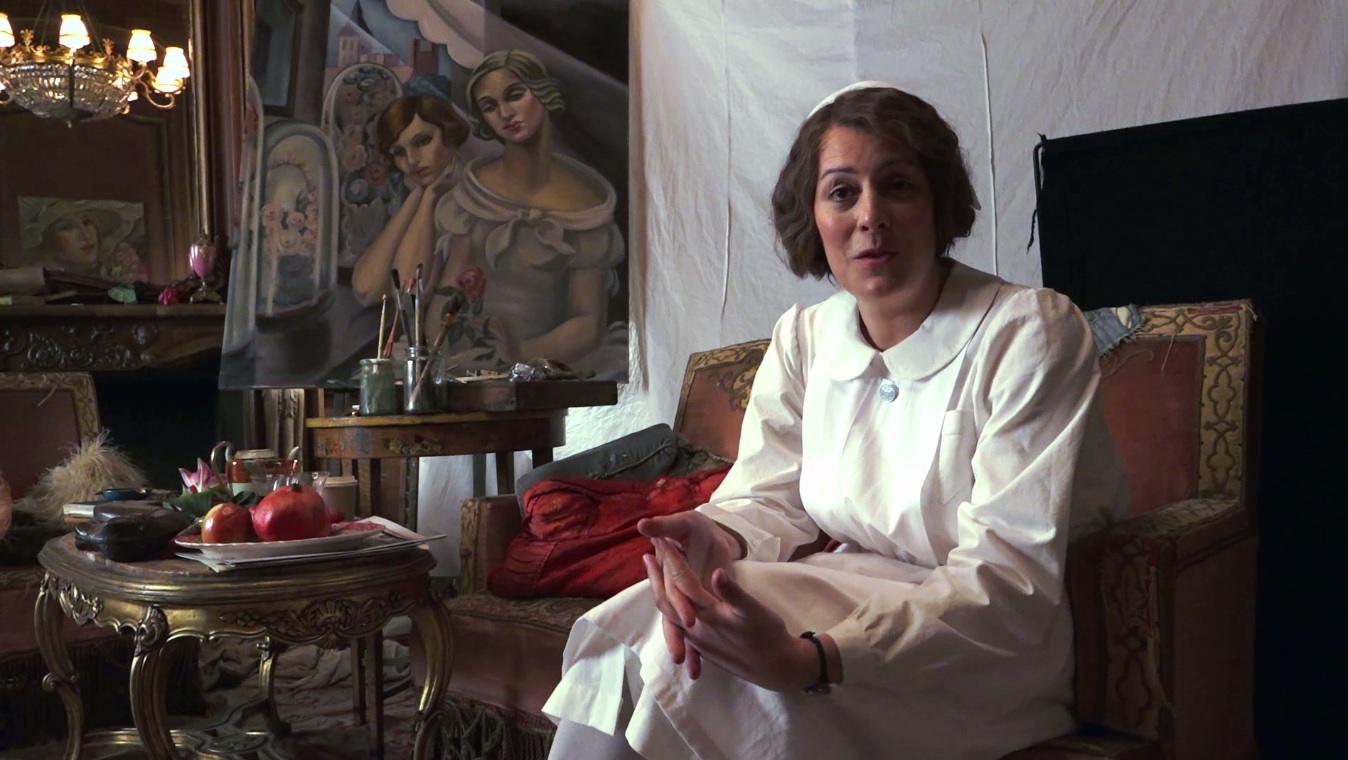
Root in “The Danish Girl”
Root, a British actress, starred in the UK TV Mini-Series Boy Meets Girl and also had parts in Hollyoaks, Casual and Doctors. She played a cisgender nurse in the film The Danish Girl.
Roxy Wood
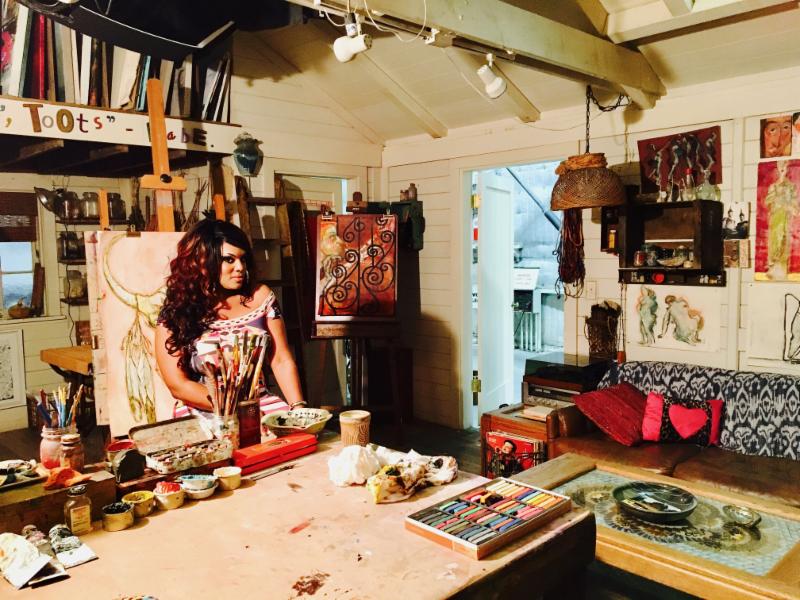
Roxy Wood on the set of “Grace and Frankie via Bingo Boy Inc
Wood is a performer and actress who has appeared on TV shows including Girlboss, 2 Broke Girls, Grace and Frankie, Wicked City, Transparent, CSI: Immortality and BoysTown.
Sadie O’Neil
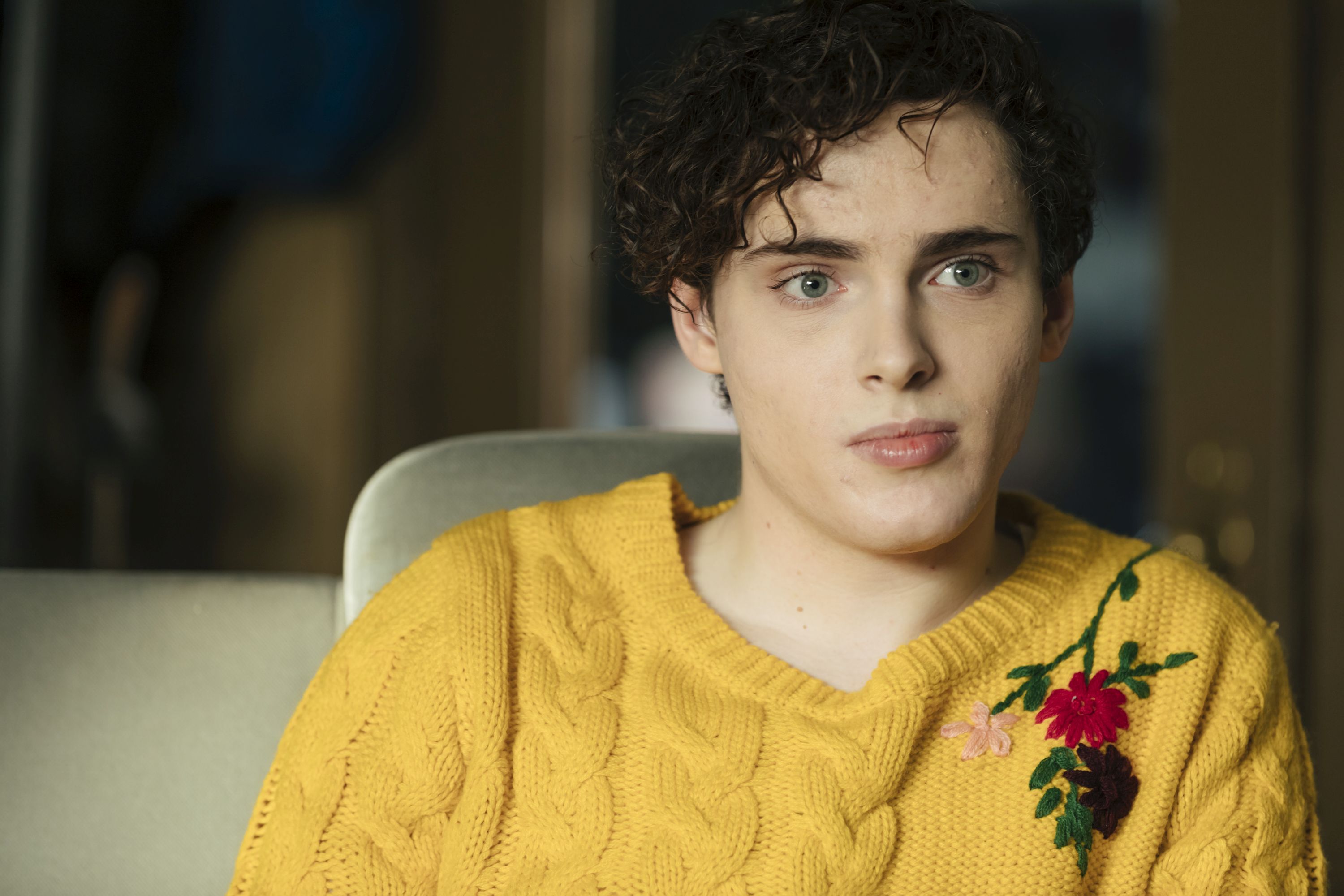
Sadie O’Neil as Jessie
O’Neil played Jesse Sweetland, a closeted trans girl hockey star, in the CBC mystery series “Bellevue.” Of her performance, show star Anna Paquin told the CBC, “I don’t think there’s probably anyone better to embody that than somebody for whom that experience reflects their own,”
Savannah Burton
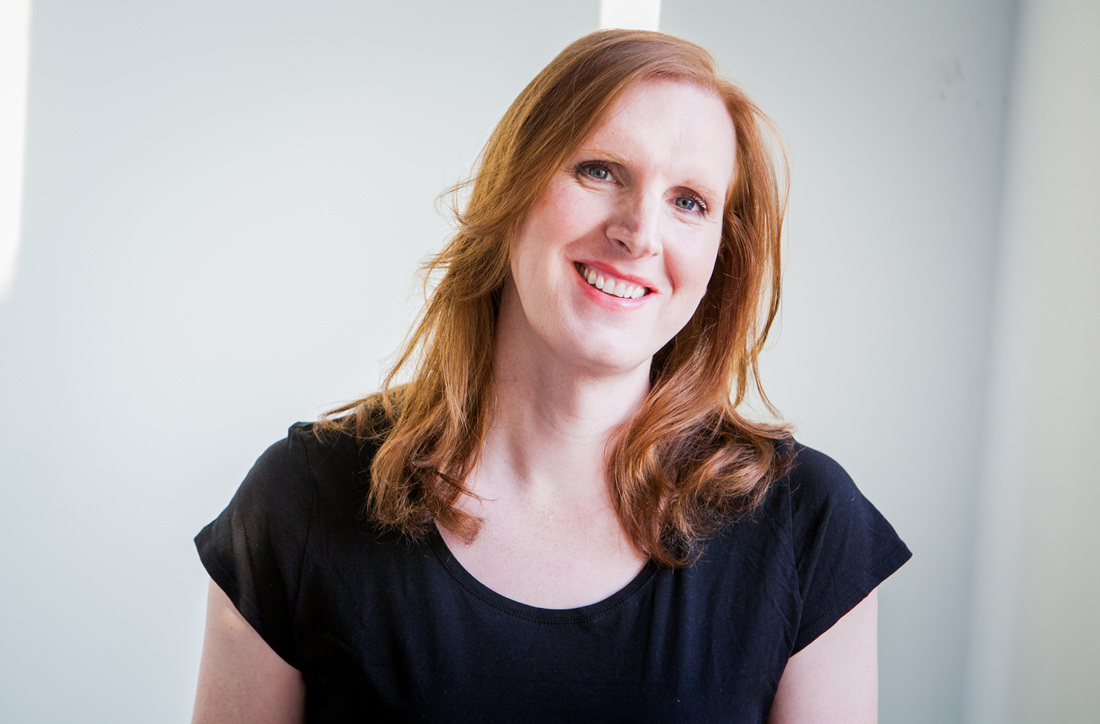
Savannah is a Canadian actress who has recently appeared in Beauty and the Beast on the CW and Killjoys on SyFy, as well as the mini-series The Secret Life of Marilyn Monroe and a number of shorts. She’s also the first out Trans athlete in Canadian history to compete in team sports internationally, as a member of the 2015 Canadian National Women’s Dodgeball Team.
Shakina Nayfack

Nayfack is a celebrated director and choreographer with dozens of plays and cabaret shows under her belt, but she’s an actress too: in her one-woman show Post-Op at Joe’s Pub, a recurring role on Hulu’s Difficult People as Lola, and a number of other indie films and theater productions. She’s the founding Artistic Director of the Musical Theater Factory, which has developed over 100 new musicals.
Sophia Grace Gianna
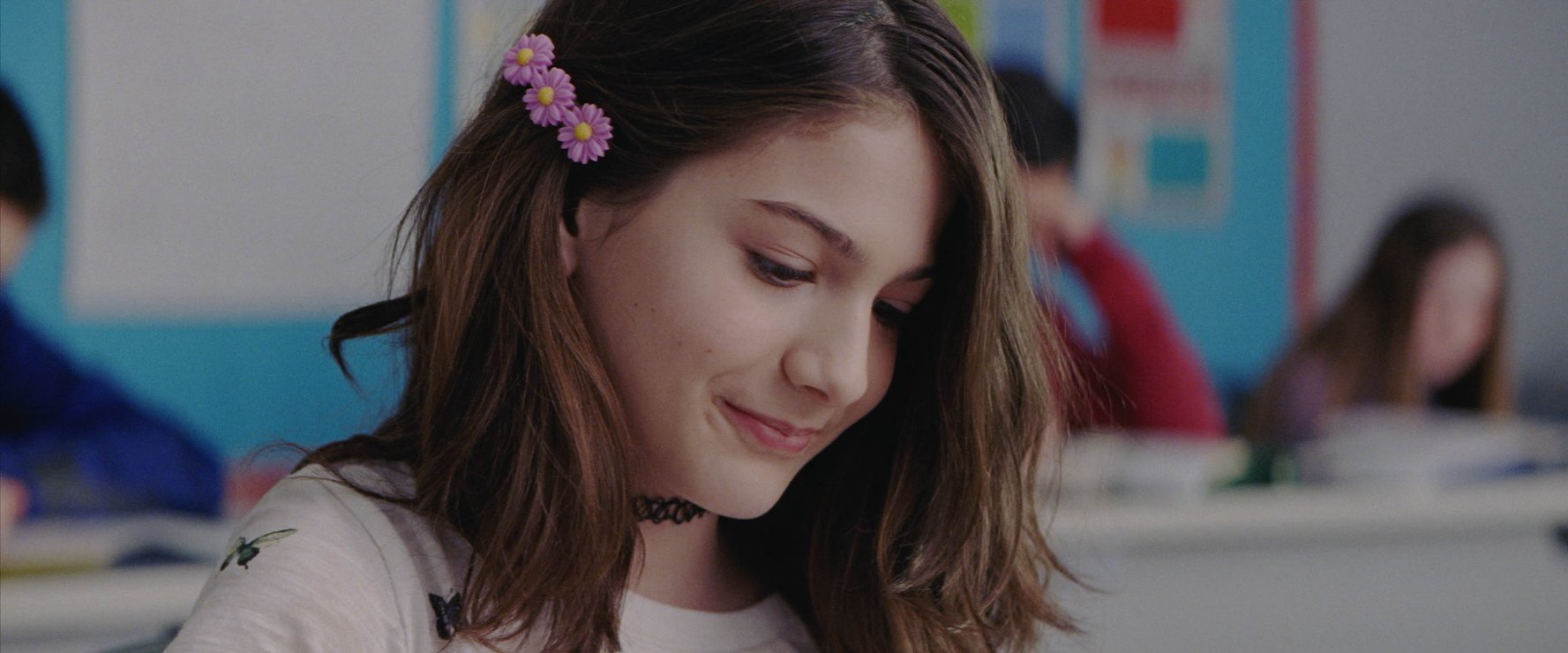
Sophia Grace Gianni in “The Real Thing”
12-year-old Sophia played Young Moira in flashbacks during Transparent‘s third season, and also stars in the 2017 short The Real Thing, in which a soldier returns home to meet his daughter, who transitioned while he was on tour.
Tamara M. Williams

Tamara Williams in “The Garden Left Behind”
Williams appeared in No Shade in 2013, and plays Carol in the upcoming 2018 film The Garden Left Behind.
Trace Lysette
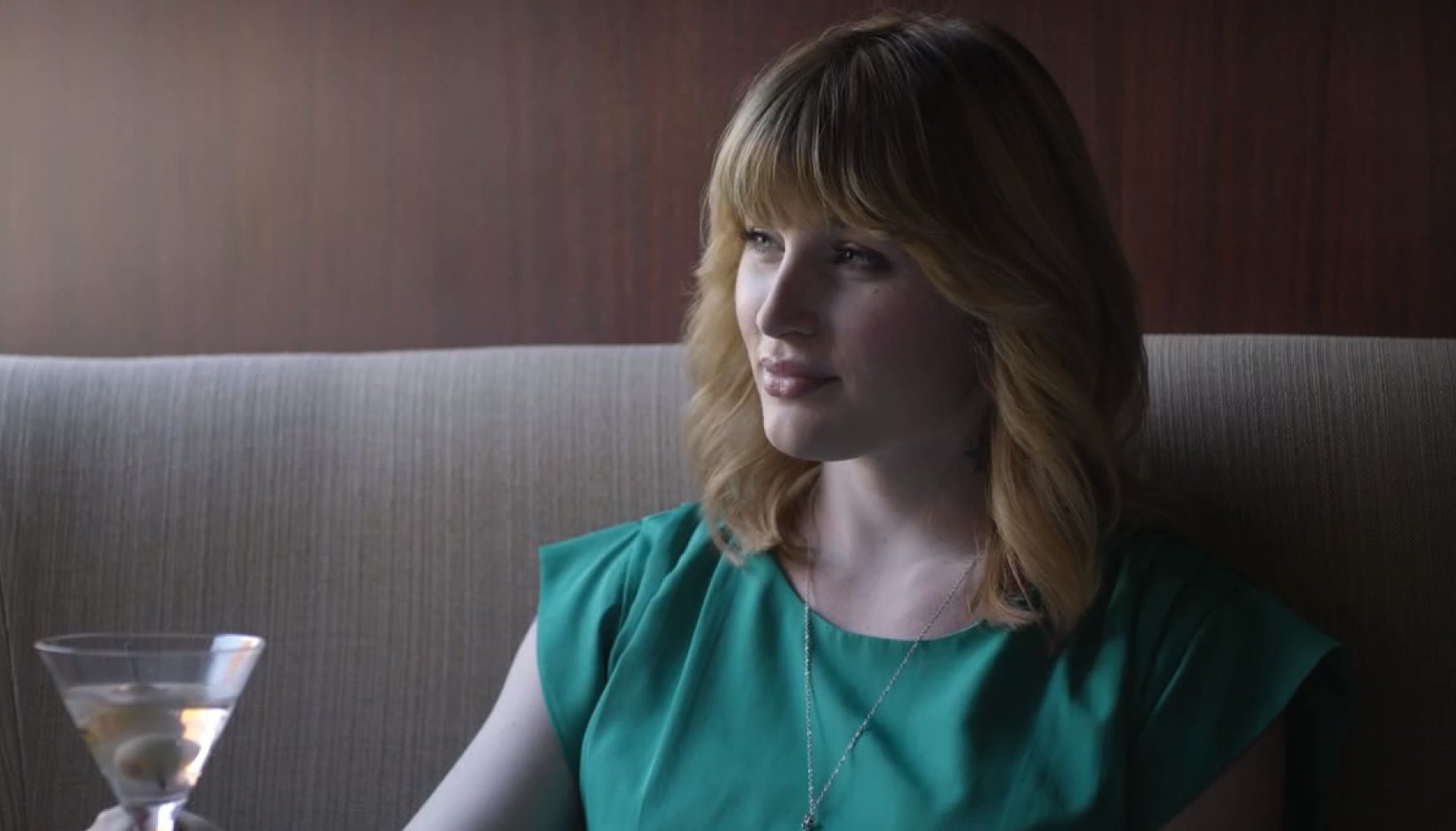
Lysette has played a few roles besides the one she’s best-known for, Shea on Transparent — she starred as Sylvia Rivera for an episode of Drunk History, Gisele in Blunt Talk and, of course, started her on-screen career with an episode of Law & Order: Special Victims Unit.
Zackary Drucker
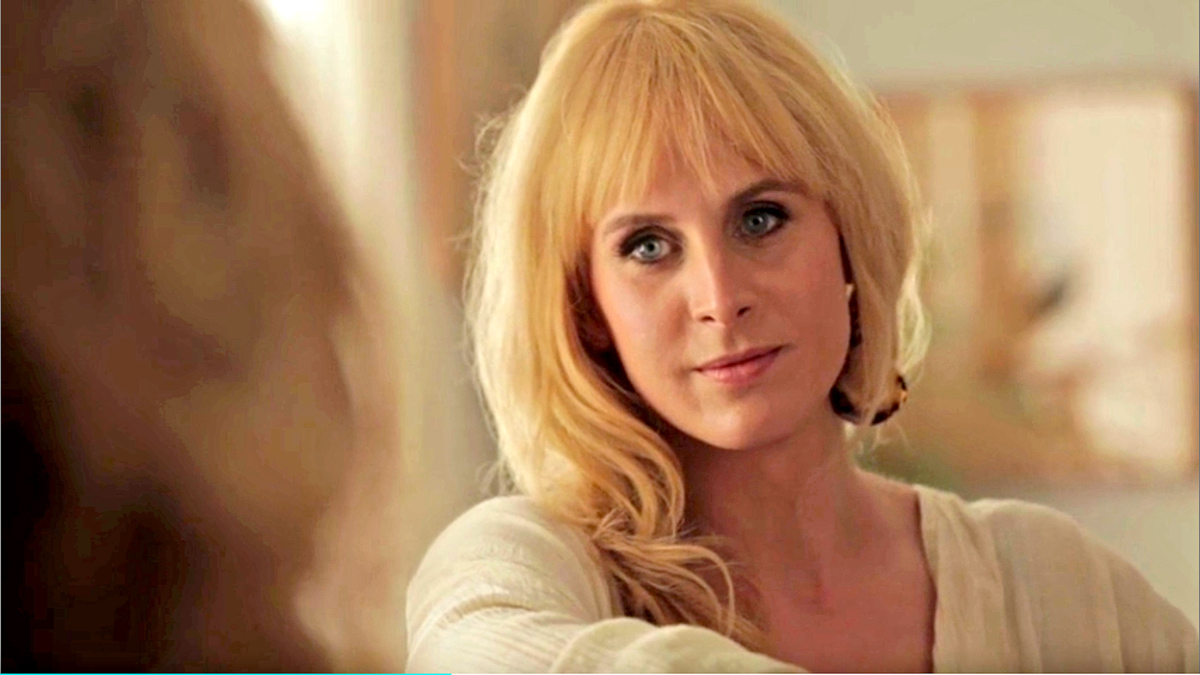
Drucker in “Transparent”
Drucker is primarily an artist and producer, but she’s also appeared onscreen in two of her production/co-prodiuction projects — She’s Gone Rogue and Transparent.
Be Your Own Dream Daddy in the Dad Dating Simulator of All Our Dreams
Listen, I get it: we’re in the year of the Mommi. But Daddy will always have my heart. I am who I am, and while I love a powerful femme woman who drinks iced chardonnay, I’m always gonna choose Daddy. Which is why when I found out about Dream Daddy, my heart soared. I’d never felt so seen!

Dream Daddy: A Dad Dating Simulator (DDADDS) is exactly what it sounds like. A simulator game with the goal of dating all of the dads in your neighborhood. You begin the game being woken up by your perfect daughter Amanda — side note, I love her so, so, so much—after which you get to make your very own Dadsona.
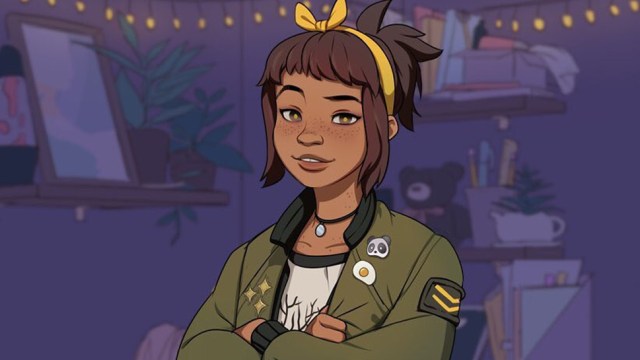
I LOVE YOU MANDA PANDA
Besides the amazing storylines you get to play out, and all the terrible dad puns you get to make, this is by far my favorite part of the game. On top of the typical options like skin tone, hair color, eye shape, etc, you also get the opportunity to decide whether or not your dad is canonically trans. I’ve designed three dads so far: one who’s chubby and wears a big ponytail, one who is the fuckboi of my dreams, and one who looks like Alison Bechdel circa 1998.
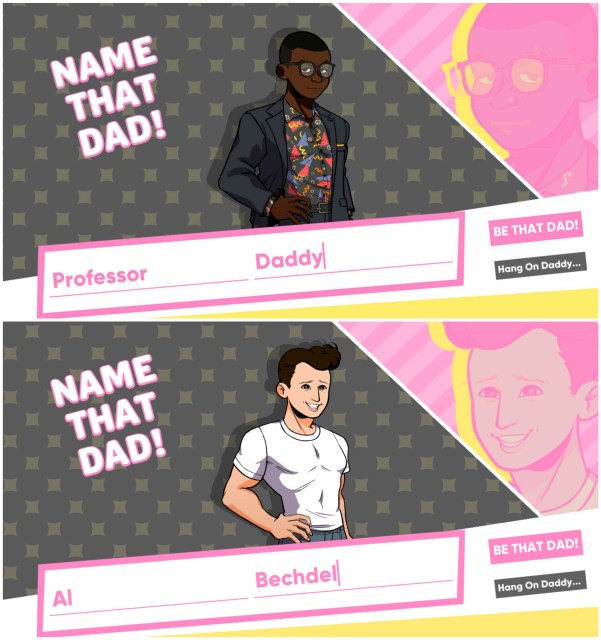
I want to marry them both
The game also has some amazingly cool and strange characters. The first dad you meet is Mat, who is my dream Daddy, but who is so sensitive and difficult to have a date with. Then there’s Damien, a trans goth dad whose son Lucien sells oregano and pretends it’s marijuana. Brian is a redhead who is too competitive, Hugo is an overworked teacher, Joseph is a cool youth pastor with the hottest wife, Mary, our Lady of Wine Moms. Craig is an old bro-y friend from college who won’t leave his damn baby at home, and Robert is… well, he’s the fuckboy of the group. I found out through a guide on Steam that if you sleep with him on the first date, you never get to have another good date with him. Rude.

FUCK. ME. UP. MARY.
The game was scheduled to come out on June 13th but ended up taking almost a full week longer than expected to release, and it was so worth it. The game is so smart! Like, in addition to the fact that everyone is bisexual or gay, there are also trans characters and it’s no big deal! Are you telling me that someone’s trans-ness doesn’t have to be the only part of their identity?? Say it ain’t so. There are also a bunch of different storylines that can happen between you and each character. I’ve played through three times so far, and I date the same four dads every time and have had different dates with them each game. And I hear if you win (actually getting a dad to be your boyfriend) you get a pinup of the character. Hot.

Hugo actively monitors what’s happening on #cheesetwitter
For hours and hours of fun, for just $14.99 you can buy play Dream Daddy on Steam (They also sell enamel pins!!). You can also check out their twitter, where they’re constantly posting fan art. Listen, this summer is kinda trash, you deserve something nice. You deserve to create and date the dad of your dreams.
“Daytime Divas” Inspires Happy Tears With Its 8-Year-Old Trans Character and Also Janet Mock
Daytime Divas, a new VH1 program about the lives of five dynamic women hosting a daytime panel talk show called The Lunch Hour, is our new favorite trash show. It’s based on Star Jones’ behind-the-scenes book about her time as a co-host on The View, and stars Vanessa Williams as the show’s host, Maxine; Chloe Bridges as Kibby, a bisexual and newly sober former child star; Camille Guaty as “serious journalist” Nina and, finally, Fiona Gubbleman as Heather, the “Elisabeth Hassleback” of the crew. Heather is the white super-conservative Christian and she’s my favorite. Sure, I’m sort of obsessed with rich, mean, pretty, white Christian female characters (hello Quinn from Glee), but Heather’s story is surprisingly complicated in other ways that appeal to me, too. Specifically, Heather has a transgender daughter, Ella. Heather supports and tries to help Ella despite the fact that her husband thinks he can “cure” her just by making her wear boy clothes and do “boy stuff.” In fact, Heather’s disappointment with his tactics and lack of support for their daughter is a huge part of why the couple is currently separated. This week’s episode of Daytime Divas, with guest star Janet Mock, dug deeper into this issue and provided us with an all-too-rare uplifting trans story on primetime mainstream television.
Early in the episode, Heather is driving her kids to school and giving them advice on how to deal with questions about her very-public separation from her also-famous husband when Ella tells her Mom that her stomach hurts and she doesn’t wanna go to school. Apparently this happens a lot — Heather gives her a nice try and Ella’s sister Savannah asserts that Ella’s just trying to skip school to avoid getting bullied in gym class or having to use the boy’s bathroom, ’cause the school won’t let her use the girl’s bathroom like she wants to.
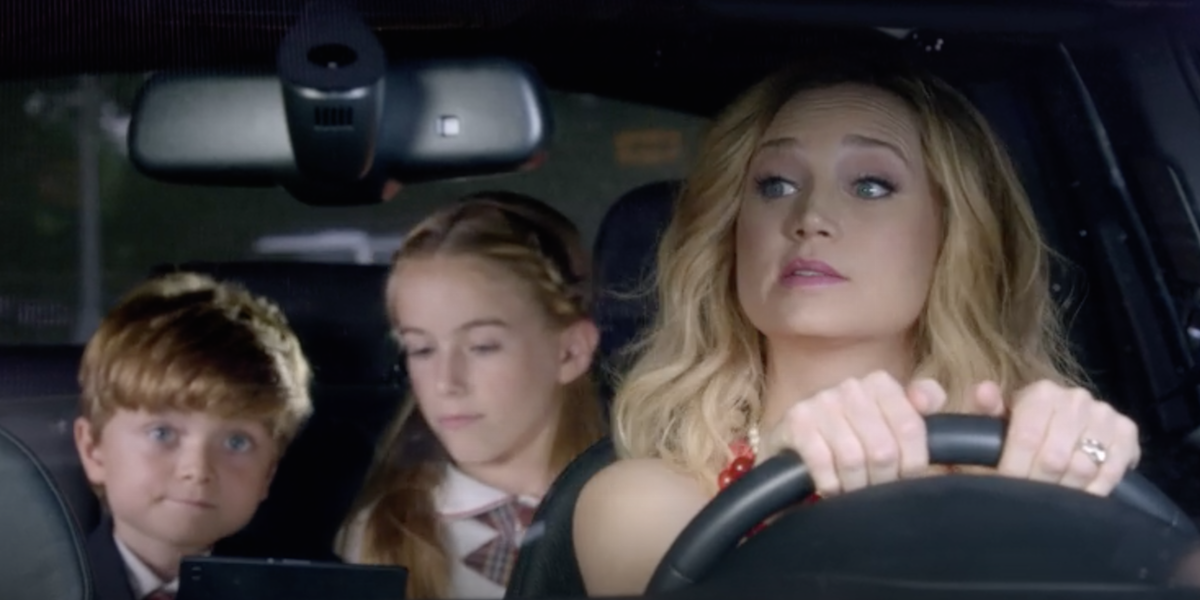
Ella, Savannah and Heather
This brought me back to seventh and eighth grade, when I hated going to school every single day because for the first time in my life I was taking Gym class and I had to get undressed in a locker room full of boys and I had to use bathrooms full of teen boys. This is a nightmare for any girl, and when you also have to deal with dysphoria and bullying from your own Dad, it’s even worse. When Heather finds out about Ella getting bullied, she’s sad, but doesn’t quite know what to do. She’s not ready to let Ella be Ella in public and to fight for her right to be herself.
The episode takes a turn for the wonderful when Janet Mock shows up as The Lunch Hour’s guest host of the week. She’s gorgeous and brilliant and look at that smile!
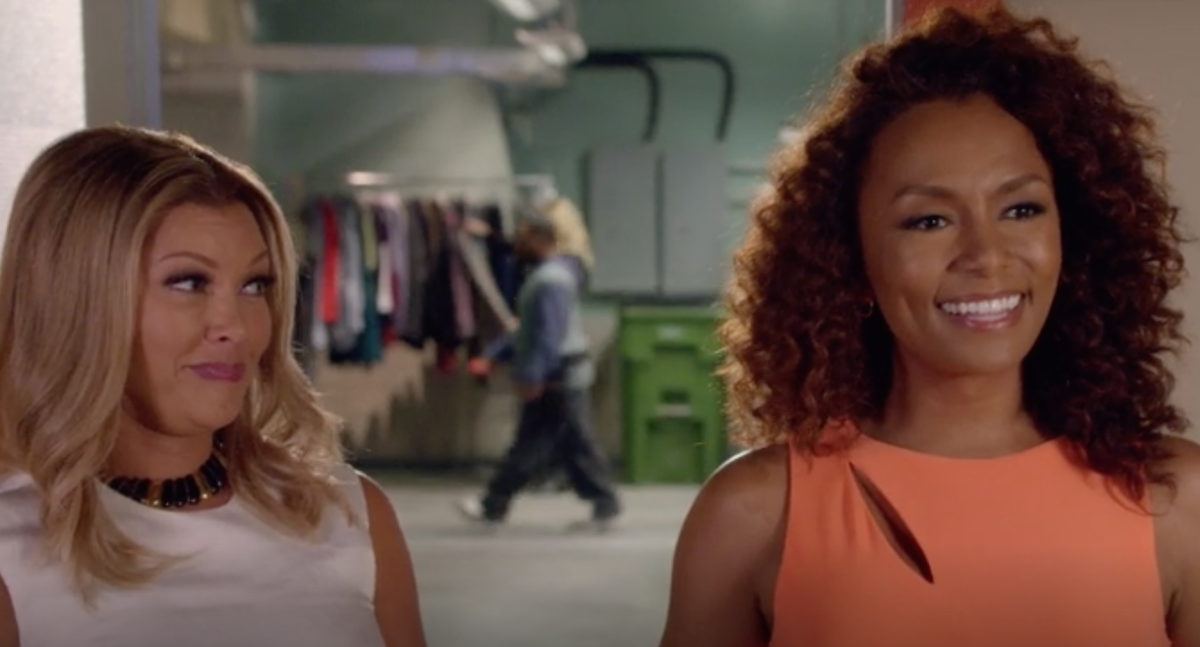
As soon as Heather sees Janet, she’s drawn to her. It looks like she’s never met an openly trans person other than her daughter before and Janet Mock is one hell of a gorgeous and successful openly trans woman. Heather stammers out some words regarding Janet being beautiful and shock when she hears that Janet has her own show on MSNBC and then, during the taping, she jumps in: “Janet, are you happy? Would you say that you’re a happy person?” to which Janet says, “Yes, I’m a very happy person.” Heather is visibly relieved, like maybe she feels okay about her daughter’s future for the first time. She blurts out, “That makes me feel better!… about you!”
The other hosts suspect something shady is going on with Heather — after all, she’s a Conservative Christian who seems unnaturally obsessed with Janet Mock, and nobody knows about Heather’s trans daughter. So it just looks like Heather’s setting Janet up to slam her down. “Heather’s making Janet think she’s her BFF,” Kibby confides to Nina. “But just wait — as soon as the cameras start rolling, she’s gonna go all right-wing on her ass.”
In the dressing room later that week, Heather’s shocked again to hear that Janet is married, and then of course has more questions for Janet about growing up trans.
Heather: In school, did teachers understand what you were going through?
Janet: No, it was a different time. You know, Caitlyn hadn’t transitioned yet and Transparent wasn’t streaming then.
Heather: It must have been very difficult for you growing up.
Janet: Yeah, but you know I was lucky, I had parents who were there for me and wouldn’t take crap from anyone. Their love is the reason why I turned out okay.
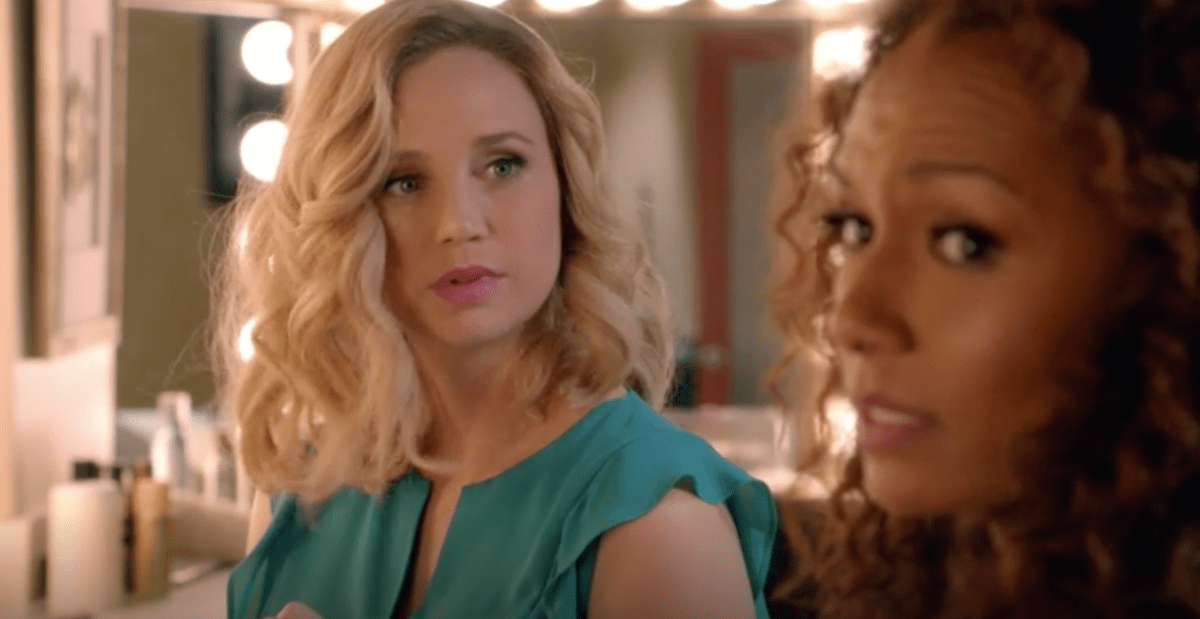
There are also these great moments where Heather’s whiteness is full on display and she wants to touch Janet’s hair, and Janet is like “hahaha, NOPE.” When Heather tries for a second time, Janet straight up smacks her hand away. Janet Mock is incredible.
Once they get on air, the other hosts struggle to keep the conversation focused on Janet’s book because Heather keeps interrupting to ask Janet questions about being trans. They’re questions that seem cute if you know why she’s asking them, but terrible if you don’t — questions about surgery and if she has friends. Eventually, Janet says it sounds like Heather might be working out her own gender issues, with all these questions, and Heather immediately laughs, brushing it off: “Oh no no no I’m definitely a real girl.” Not cool, Heather. Really not cool.
Janet calls her an idiot on air. Cool, Janet. Really cool.
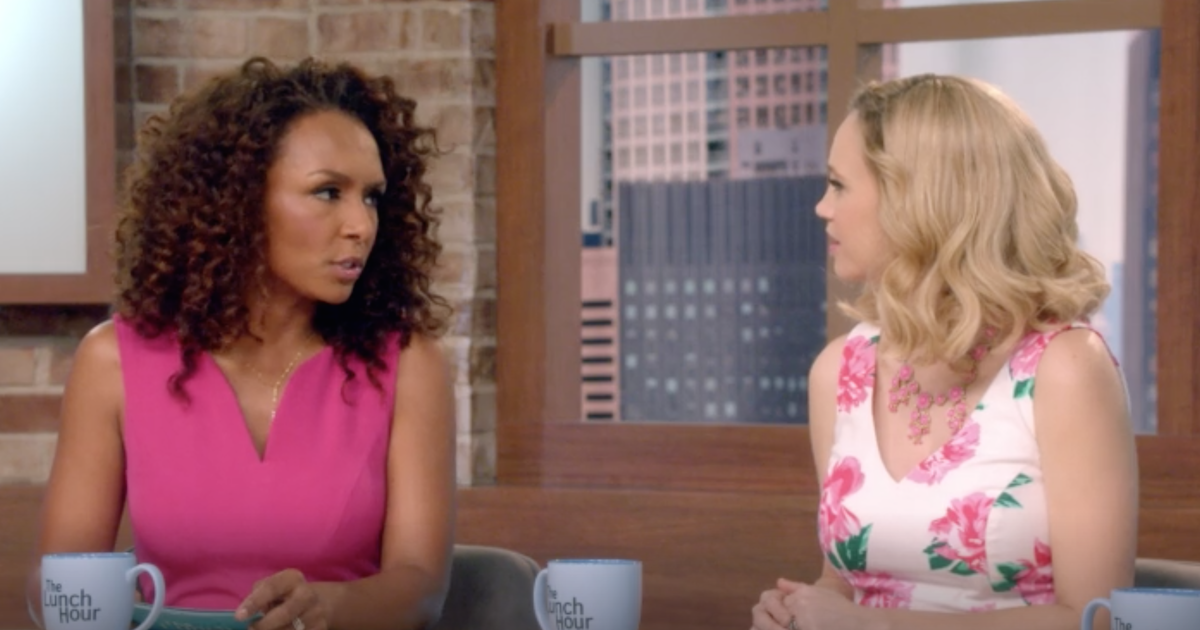
Heather spends the next day trying to find Janet to apologize. Janet, rightfully, spends the day avoiding Heather. Finally Heather gets her moment, says she’s sorry, and then adds that she’s “not judging” and “not transphobic,” which inspires eye rolls from her co-hosts. Then, clearly struggling to find the words to say or even just to say the words out loud, Heather says that her daughter Ella is “a trans,” and that’s why she’s been asking so many questions to Janet.
It’s a really wonderful moment. It’s also super real. So often parents of trans kids are trying really hard, but they definitely mess up a lot. So often they’re afraid to publicly support their kids because they just don’t know very much about being trans. Janet makes a really great point after Heather’s on-air apology when she says, “Look, if we’re too afraid to talk about things no one will ever talk about anything. Mistakes will happen. It’s ok to be trans ignorant but it’s never ok to be transphobic.”
The episode ends on some really nice notes for Heather and Ella. Kibby puts her ongoing feud with Heather behind her and gives her a sparkly hair clip to give Ella, saying, “little girls love sparkly things to put in her hair.” At that point I obviously started sobbing. Kibby had been calling Heather transphobic and bigoted, but now she sees a kindred spirit and her support of Ella is heartwarming.
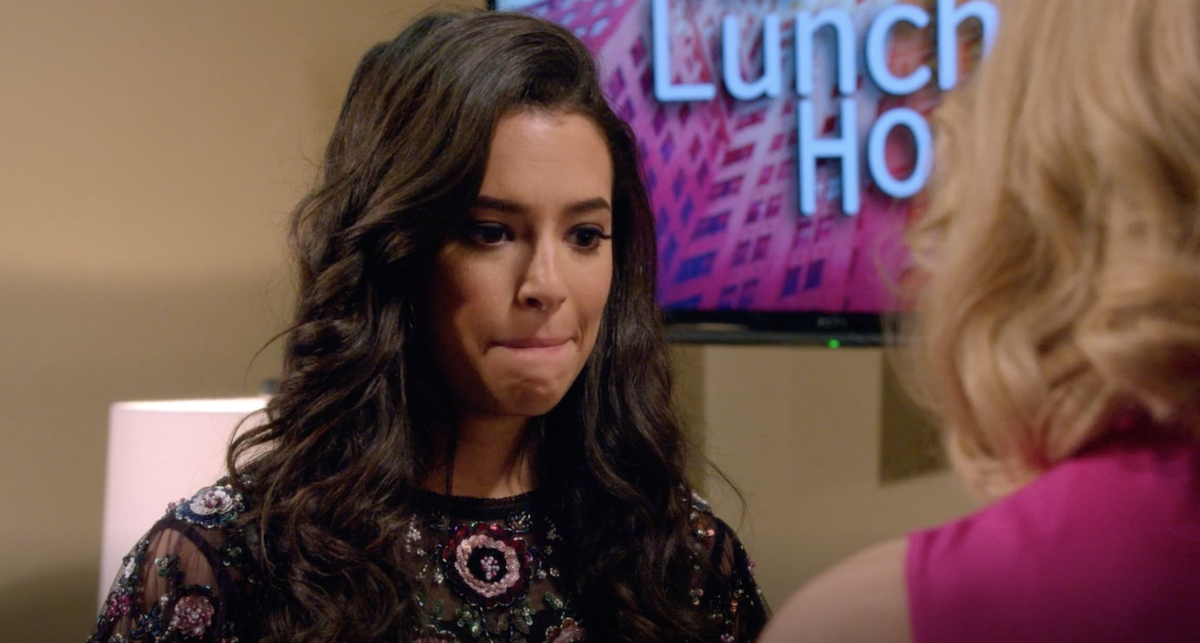
Even more heartwarming is Heather’s final scene in the car with her daughters, when she’s just given Ella the hair clip.
Ella: It’s so pretty!
Heather: Why don’t you put it on?
Ella: But we’re not at home!
Heather: Mommy’s changing the rules a little. From now on you get to be you anywhere. And we’re gonna start looking for a new school for you. And until then, Mommy’s gonna homeschool you.
As far as I know, Ella’s the youngest recurring trans character currently on television. Amazon Prime has had young trans kids on two of their shows, Transparent and Danger and Eggs, but so far those characters (both played by trans actors, which is also hugely important) have only appeared once. Plus, Daytime Divas is on VH1, a mainstream cable network. Steaming services have more leeway with queer storylines and have always been pioneers in that arena, so it’s especially remarkable to see a cable network doing this work. It’s so important to depict parents supporting their trans children in a recurring fictional storyline, and this is the first time I’ve seen that. It’s beautiful. Parents will be watching this show. Probably some parents of trans kids or kids who will one day come out as trans. And maybe they’ll think of this episode when that day comes.
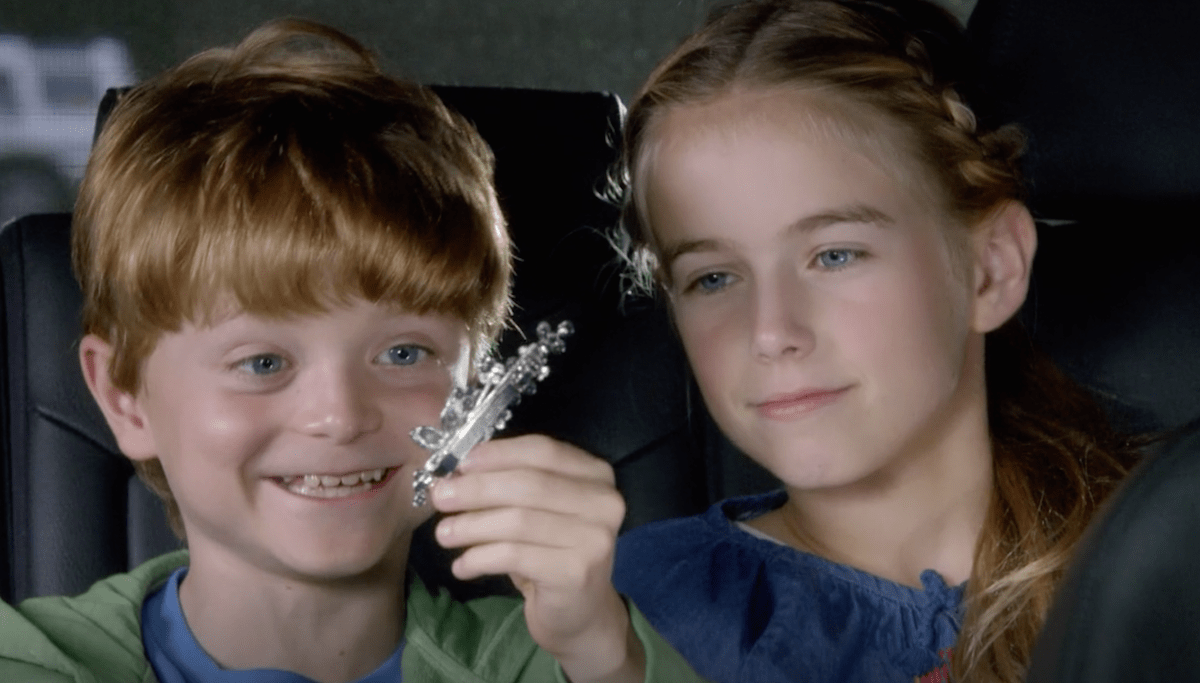
“Danger & Eggs” Is The Greatest Weirdest Queer-and-Trans Inclusive Kids Show Ever
We’ve been seeing some super amazing strides in queer representation in kids media with shows like Steven Universe and Loud House, and wow, am I happy to see even more strides being taken right now. Representation in All-Ages media is one of the most important things in the world; it allows kids to love themselves and parents to love their kids and kids to stay alive and kids to be themselves. And we’re making progress, like real progress. Amazon Prime’s Danger & Eggs, now streaming, is the next step in this progress. Not only are there queer characters and themes, but the co-creator, Shadi Petosky (who created the show with Mike Owens) is a trans woman and the cast is absolutely packed with queer and trans (and Autostraddle favorite) voice actors like Stephanie Beatriz, Jasika Nicole, Angelica Ross, Cameron Esposito, Rhea Butcher, Tyler Ford, Jazz Jennings, Laura Zak and Petosky herself.
The show is about a girl named DD Danger (voiced by SNL‘s Aidy Bryant) and her best friend, a giant egg with a face, arms and legs named Phillip (voiced by Eric Knobel). They go on wacky adventures together in Chickenpaw Park, like riding an abandoned water slide, forming a band, inventing games, hanging out with raccoons and discovering a secret underground lab. See, DD is the latest in a long line of stunt people and she’s just as reckless and wild as they were, and Phillip is a neurotic and rules-following egg. It’s super fun and full of enough wackiness to make sure that you never get bored. There are also a ton of great messages and themes that are important for all kids, but might have a special meaning for queer kids, like finding your own identity, questioning rules and being willing to change your mind.
This show especially makes trans kids know they are valid and deserve happiness and representation. In one episode, DD and Phillip form a band with a kid named Milo who uses they/them pronouns. The other characters never question this, there isn’t a clumsy conversation explaining non-binary pronouns, instead everyone just calls them either by their name or “they” or “them.” It’s transnormativity in action in a kids cartoon and I love it. Milo is voiced by agender model and speaker Tyler Ford which means there’s an extra added layer of authenticity to the character, which is especially fitting given so much of the show is centered around being yourself and being true to who you are and to your friends and passions. There’s been a lot of non-stop conversation about the casting of trans actors as trans characters over the past few years and Danger & Eggs nails it, with more than just Milo though.
My favorite character in the entire show is a young girl named Zadie, played by teen trans activist Jazz Jennings. First of all this kid is an adorable and precocious, recently-out trans girl who gets on stage at Pride (yeah, that’s right, this show has an entire episode that takes place at a Pride day celebration) with a cute haircut and equally cute dress and sings a song about her first day at school as the real her. Plus she’s super smart and explains chosen families to Phillip. This episode, “Chosen Family,” serves as the season finale and is one of the best and most important episodes of any kids show I’ve ever seen. It’s super queer, super sweet and full of love.
Other AS favorites have amazing roles as well. Her Story star Angelica Ross plays the Mayor who flies in on helicopters, sings to announce whenever she’s showing up and is just an awesome and powerful lady. Also, seriously, Ross’ voice acting is amazing and she needs to get a ton of roles in cartoons right now. I loved every time she had lines. Jasika Nicole plays Reina, a girl DD’s age who quickly becomes one of her closest friends. The friendship between these two girls is magical and I love it so much! Esposito and Butcher show up as the Chill Twins, a pair of sparkly-spandex-wearing, alternative-lifestyle-haircut-having people who try to convince everyone in the park to just be chill instead of caring so much about a political issue. The cast is so freaking good you guys, and by having so many diverse actors, the show has something that many shows can’t have: authenticity.
Aside from the amazing representation, this show is so weird and wacky. Like obviously one of the main characters is an egg but you don’t get it, like, it’s so much weirder than that. There are weird space robots and a giant chicken and a pigeon lady who sings in the park and magic that’s perfectly in the language kids speak. I laughed so much, this is so clearly a show designed to entertain kids, which is such a brilliant and important goal. Petosky, Owens and their crew have really created something special that kids will love, adults will cherish and young queer people will thank for giving them the courage to be themselves and love who they are.
Add Queer & Trans Developers to One 52-Hour Train Ride, Get Rad Inclusive Games
In February I was a part of Indie Train Jam, a 52-hour game jam that takes place entirely on the Amtrak California Zephyr train between Chicago and San Francisco. For the first time in Train Jam’s history, the entire train was booked out for the Jam: about 300 people from around the world with differing skill sets came together to create 80 games under the theme of “Unexpected Anticipation,” covering everything from the Travel Ban to entertaining alien guests to dentistry.
A significant number of Train Jam attendees, including myself, were queer and trans women and non-binary people. Whether through choices in game design or getting to know other Train Jammers, many of us found Train Jam to be an amazing opportunity to express our identities, learn new skills, and build valuable community.
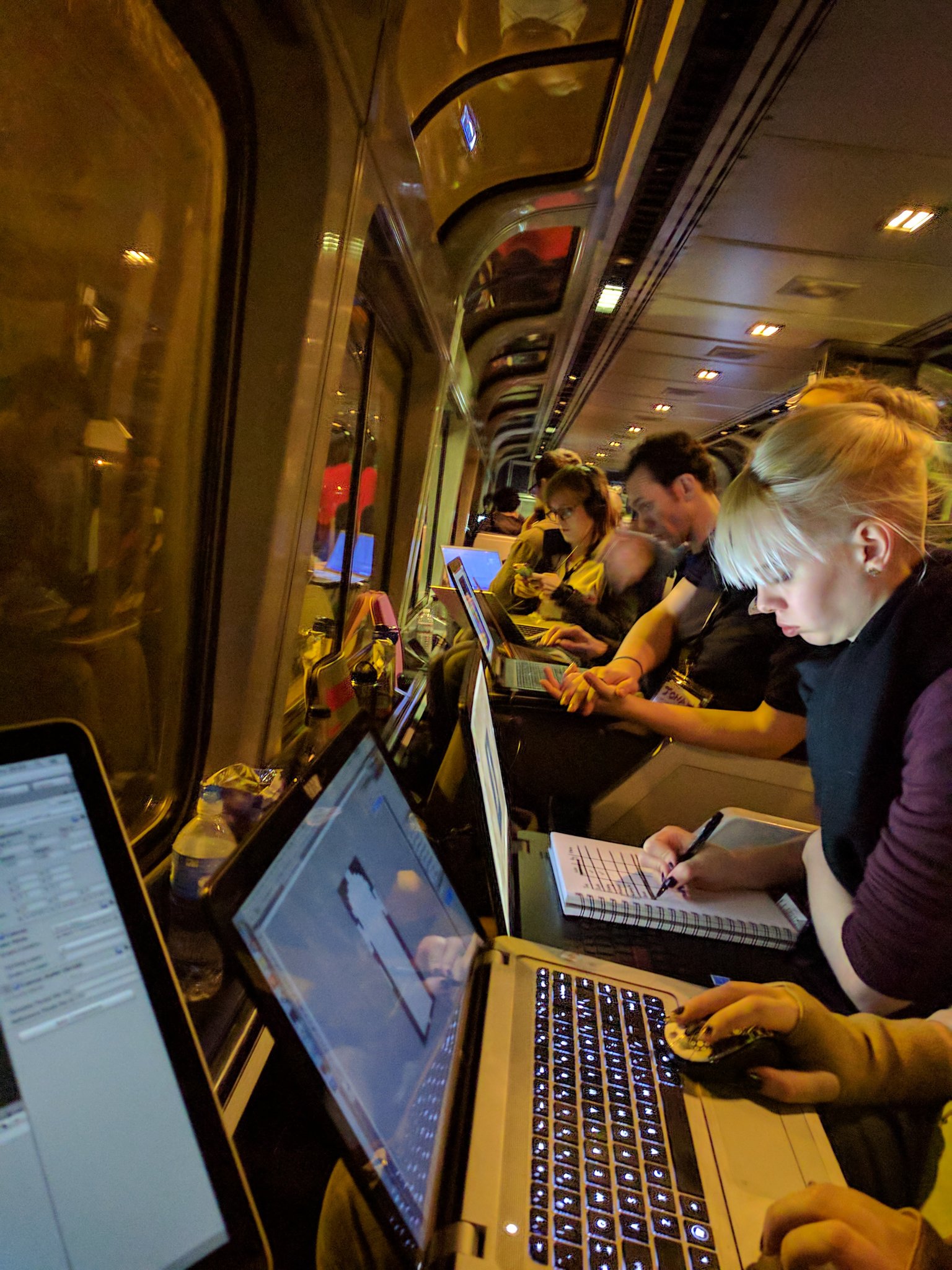
First night by Ciro Continisio
Montreal-based game designer, developer, writer, artist, streamer, speedrunner, and queer trans woman Alex Zandra Van Chestein had queer representation in mind when designing Entertain My Alien Friends, I’ll Be Right Back, where players direct a party full of aliens to specific spots in their alien friend’s apartment based on their needs, such as food or music. “I made sure that the aliens weren’t gendered and that your alien friend (seen on the title screen) was queer-coded,” she explains. Van Chestein is committed to incorporating queer representation and diversity in her games: “I firmly believe that we as content creators can change the world, even just a tiny bit, by making more of what we want to see in it.”
Elie Abraham, a music-making, sound-designing, and voice-acting superqueer from a mixed background in Helsinki, Finland and one half of game design studio Ian & Elie, had their hands full on Train Jam after bouncing around the pre-boarding meeting room with a sign stating “I WANT 2 MAKE MUSIC 4 UR GAME.”
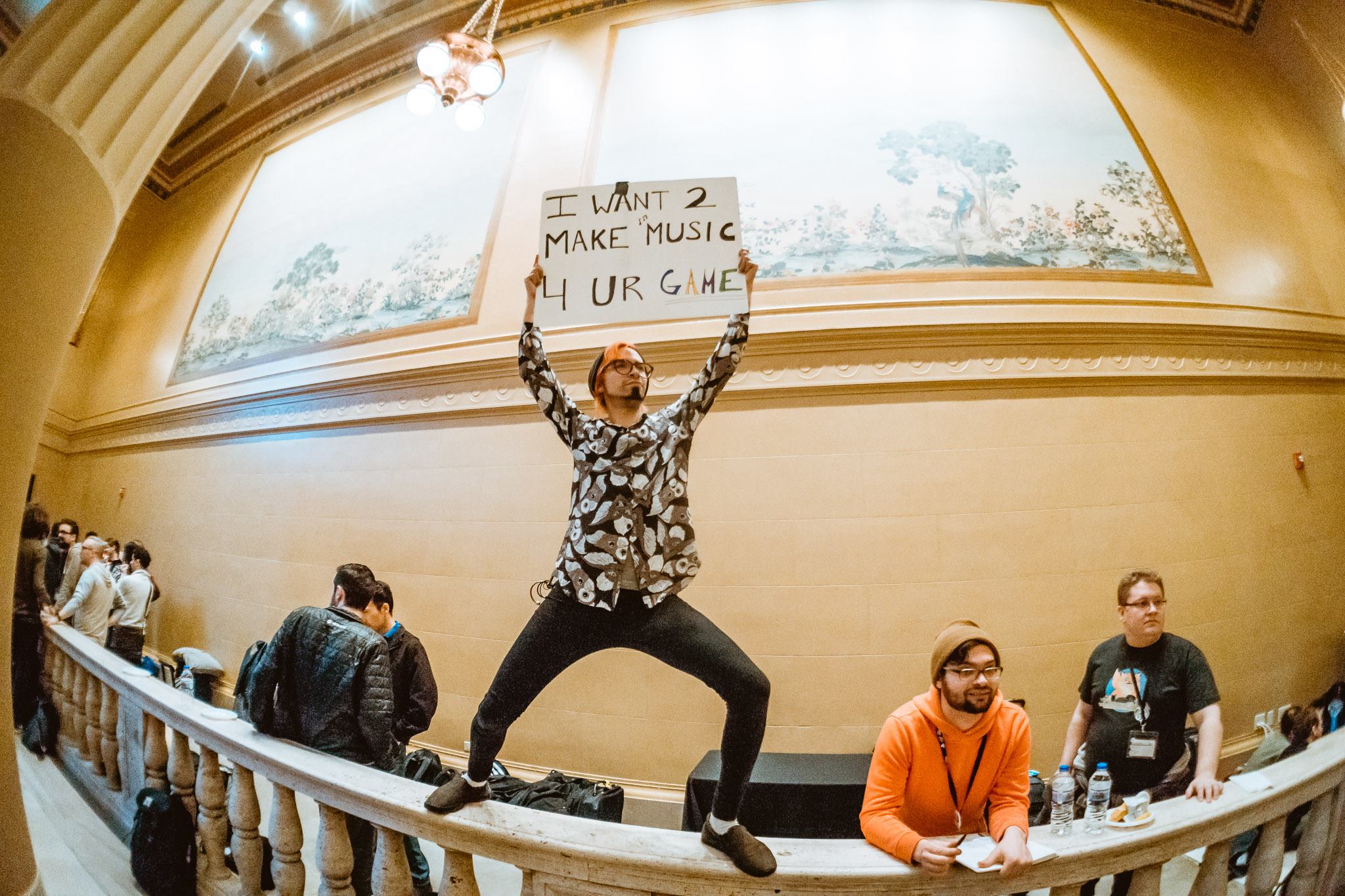
Elie Abraham and their sign. Photo by Robin Baumgarten
It lead them to creating music and audio effects for nine Train Jam games. These games ran the gamut in style and genre: from Metro Mori, taking place in an afterlife that resembles a train station, to Ghost Dentist VR, a virtual reality dentist game, to Sewer-Vogue whose premise is: “In the grim darkness of the future, there is only… competitive catwalks featuring scavenged junk.” For Abraham, who heard about Train Jam from their business and design partner Ian Sundstorm who attended the 2016 Train Jam, their identity primarily came into play through the experience of Train Jam itself, interacting with other Train Jammers who may not necessarily be familiar with non-binary identities.
“My identity was a big part of my Train Jam experience because it’s just generally very much in my day-to-day,” Abraham explains. “We don’t live in a time when one can casually be non-binary with no consequence.” According to Abraham, they were “pleasantly surprised” at how open other Train Jammers were to respecting their identity, checking in about language and sending sweet messages of support. They also enjoyed building connections with the other queer, trans, and non-binary participants on Train Jam. “I felt very much like my people were all around me. I didn’t have to clique up with the other queers because we were all in one big queer-friendly, game-loving train. We flock to each other even when we don’t try, haha.”
Paige Ashlynn, a trans femme games developer based in Seattle found Train Jam to be a refreshing and amazing opportunity to work with other queer and trans developers. “I’ve spent years working in games with cis het white guys. For Train Jam, my goal was to work with people more like myself. My team was 100% LGBT and 75% trans women and included a queer developer of color. This by itself was an amazing experience.” Like Abraham, Ashlynn deeply appreciated the time spent with other queer and trans developers from around the world, some of whom she had known via social media but were meeting in person for the first time. “It was a wonderful moment of human connection and career validation for me.”

Clockwise: Paige Ashlynn, Caidence Stone, May Fey, Alex Zandra. Photo by Alex Zandra
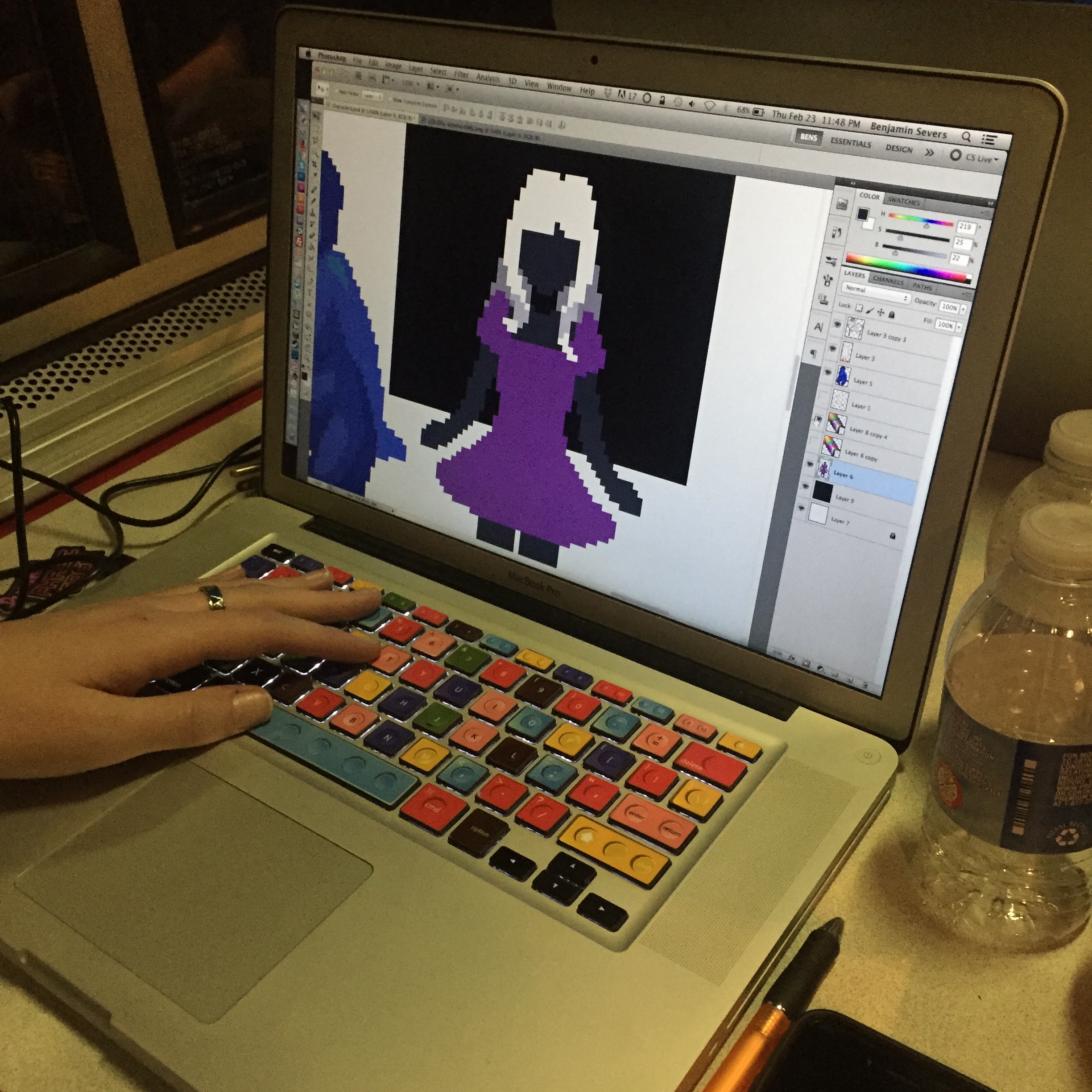
Monster Crush by Paige Ashlynn
I found Train Jam to be surprisingly affirming of my identity and life story — not just of my gender or sexuality but also of my immigration history. My ability to attend Train Jam was nearly threatened by Trump’s election and the Travel Ban since I hold a passport from a Muslim country and have a Muslim name. Preparing for the absolute worst (including leaving behind emergency contacts, personal information, and instructions to a group of friends and family known as the Safety Team in case things went completely wrong), I crossed the US border with a lot of trepidation and anxiety…and, by sheer luck, absolutely zero incident.
All that angst was then channeled into writing and co-designing What The $!#&@! Do They Need Now, where the player is packing for a trip overseas while their television rattles off news about changes to immigration requirements leading up to the Travel Ban, a protest, and a lawsuit. My fellow Train Jammers were very supportive of those of us facing possible immigration setbacks (we lost an Moroccan Train Jammer whose visa was denied; meanwhile Sudanese/South African participant Ahmed Elgoni was interviewed by Polygon about his potential issues with US immigration — he too managed to attend without drama) and also gave their support to my game — and in turn my story.
Beyond Train Jam, all of us were committed to and passionate about the intersections of games and queerness, both within the narrative and world of the games we played as well as amongst the people involved in games development. Like my experience making games about immigration, Abraham wanted to see many aspects of their identity and values represented in games, not just their gender or sexuality. “I’m a sex-positive, non-monoamorous, vegan, game-making genderqueerdo. I want to see gender roles played with, relationship structures messed about with, animals made important (and not just as playable characters or attack companions; how often do you play a quest/mission about saving animals vs one about slaying animals?).”
Ashlynn’s career goal, as described on her LinkedIn profile, is “to enrich lives through media representation of marginalized people”. In pursuit of this goal, she has worked on games both at game jams and in professional settings that “explore some facet of play that is ignored by mainstream producers” — such as the high school mystery dating sim LongStory or cyberpunk narrative-based adventure game 2064: Read Only Memories, both of which feature LGBT primary characters and are made by LGBT developers. “I [also] prioritize events like GaymerX, QGCon, Lost Levels, GeekGirlCon, and IndieCade that allow me to interact with other likeminded developers.”
Most of the participants of Train Jam, including myself and my interview subjects, were en route to the Game Developers Conference (GDC) in San Francisco, the largest conference for the international games industry. Our opinions were mixed about GDC’s openness towards queer and trans developers, especially in light of Gamergate and other related abuses towards women and LGBTQ people in games. There were some efforts towards inclusion, such as the pronoun ribbons available to all attendees that included They/Them pronouns, as well as the significant win by the queer and trans creators of kinky queer erotic visual novel Ladykiller in a Bind at the Independent Games Festival Awards, where they snagged the Excellence in Narrative award. Even so, as Abraham notes, “there is always room for more.”
“POC and queers are inherently disadvantaged and especially in a post-Gamergate world, I want to see non-POC and non-queers get aggressive in bringing that hate and poisonous behavior down and out of our communities,” they explain. “In a world with ‘fake news’ and the ‘alt right,’ when GDC takes place in ‘Trump’s America,’ the voice of people and groups with influence can have a major positive effect for all of us living in these crazy times and can even help keep marginalized people out of danger.”

Fun Meter by JamAndCandy
“GDC […] has problems of affordability and accessibility that are not yet being meaningfully addressed,” says Ashlynn. Passes alone cost anywhere from $200 to $2500. Van Chestein agrees, noting: “So many queer creators are struggling, yet making such amazing creations. There should be more support across the board (monetary, visibility, protection, etc.) especially considering how GDC is one of the most expensive events to attend, and already so indispensable as an independent gamedev considering the connections made there.”
All of us were very happy with our Train Jam experience and look forward to attending the next jam in mid-March 2018. Ashlynn, like myself, was a recipient of a Train Jam diversity scholarship (offered to gender minorities and/or people from underrepresented locations) and we were both grateful for the opportunity. “On the one hand, it was validating — helps to combat the imposter syndrome when I recall that I’ve taken part in such a prestigious event,” says Ashlynn. “On the other hand, it literally enabled me to go. I would not have been able to attend if the outreach program had not picked up the price of my ticket.”
However, Train Jam 2018 may be in jeopardy, no thanks to Trump. Trump’s proposed budget cuts to the Department of Transportation would include cuts to funding for Amtrak, threatening 15 national routes including the California Zephyr, the route followed by Train Jam. The National Association of Railroad Passengers is calling on the public to contact their representatives to fight against the proposal, which would affect around 144.6 million Americans, especially those in more rural or regional areas for whom rail is the only major means of interstate transport. Train Jam’s organisers are aware of the measure but have not publicly stated anything about how Train Jam will be affected. Here’s hoping that the budget cuts don’t come to pass and Train Jam lives to see another year!

On the train. Photo by Robin Baumgarten
You can play all of this year’s games on Itch.Io and listen to the music created on Train Jam, including tracks from Abraham’s nine games! Find out more about Train Jam on their website or Twitter.
